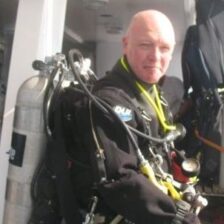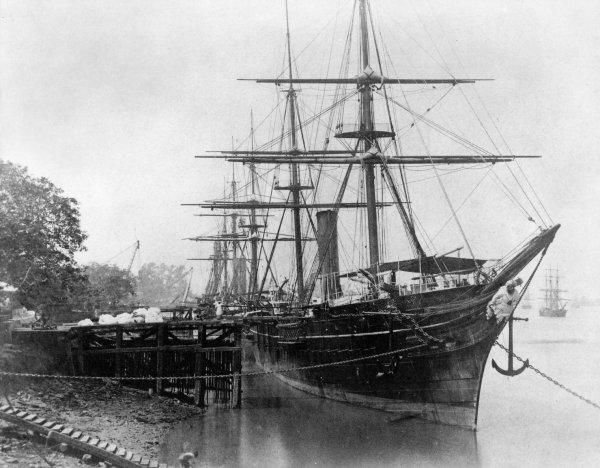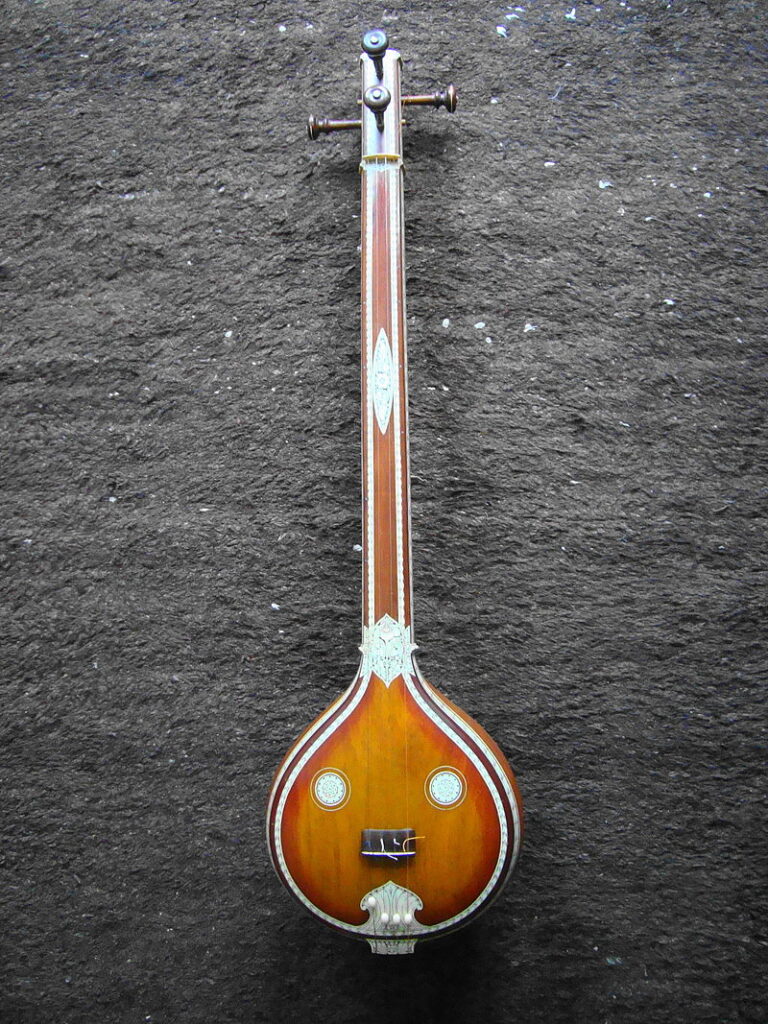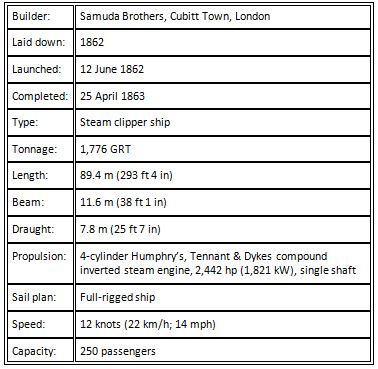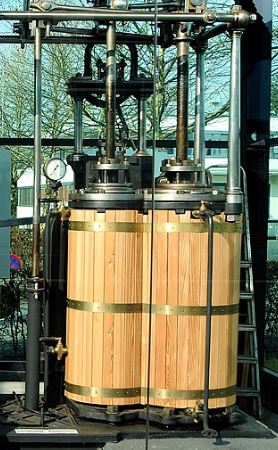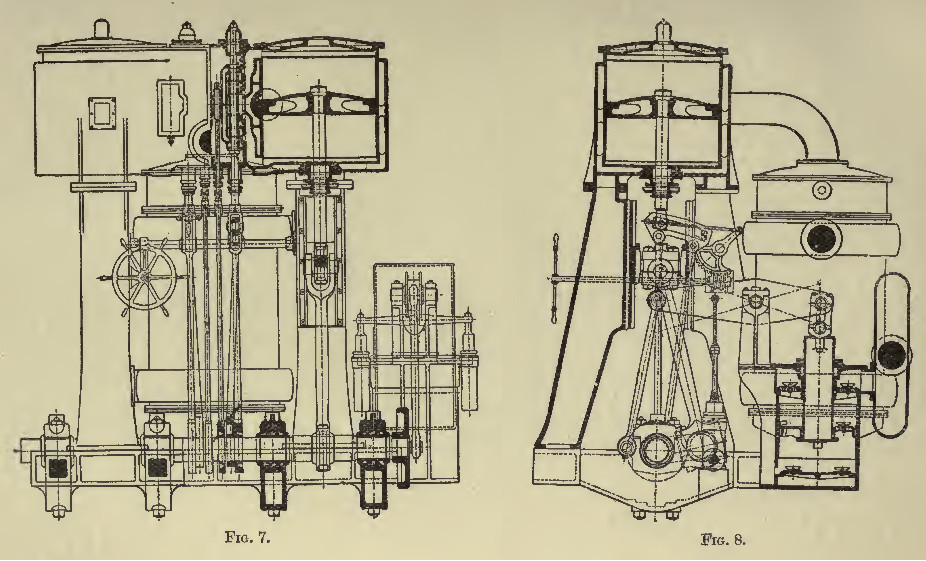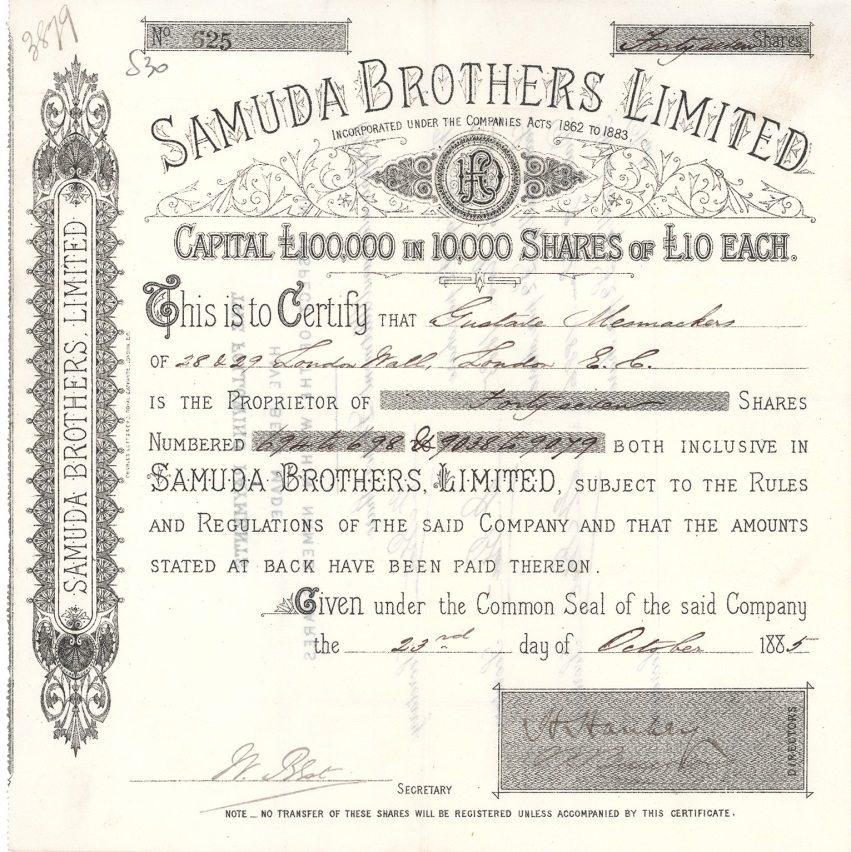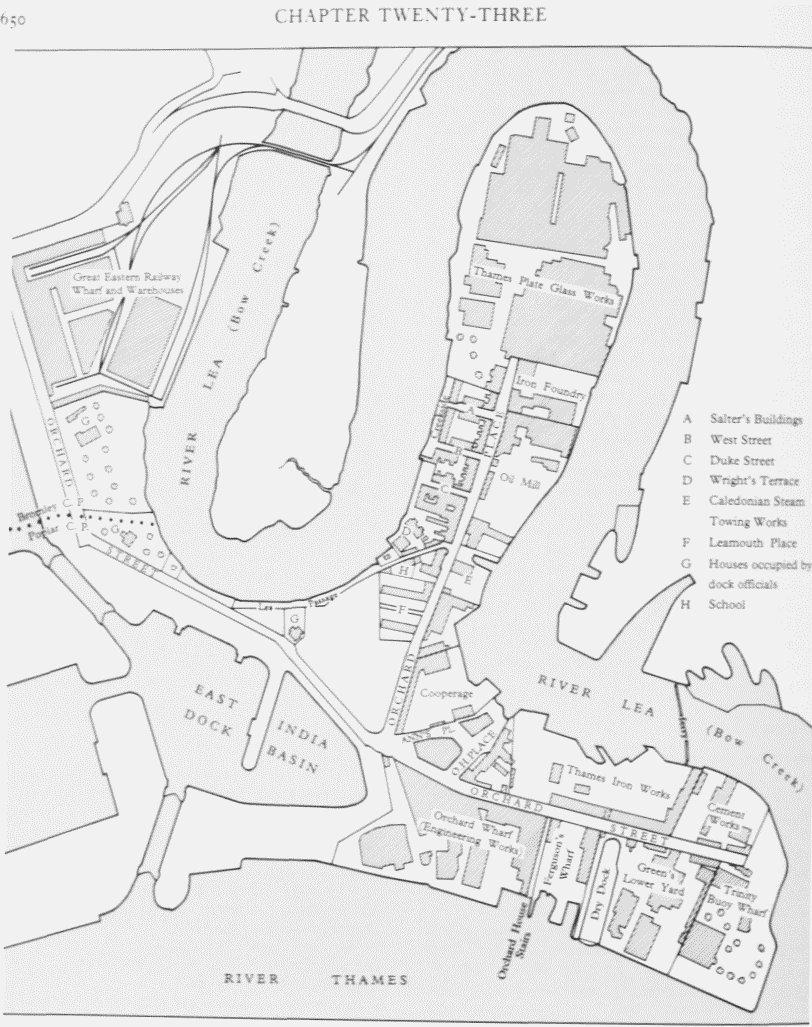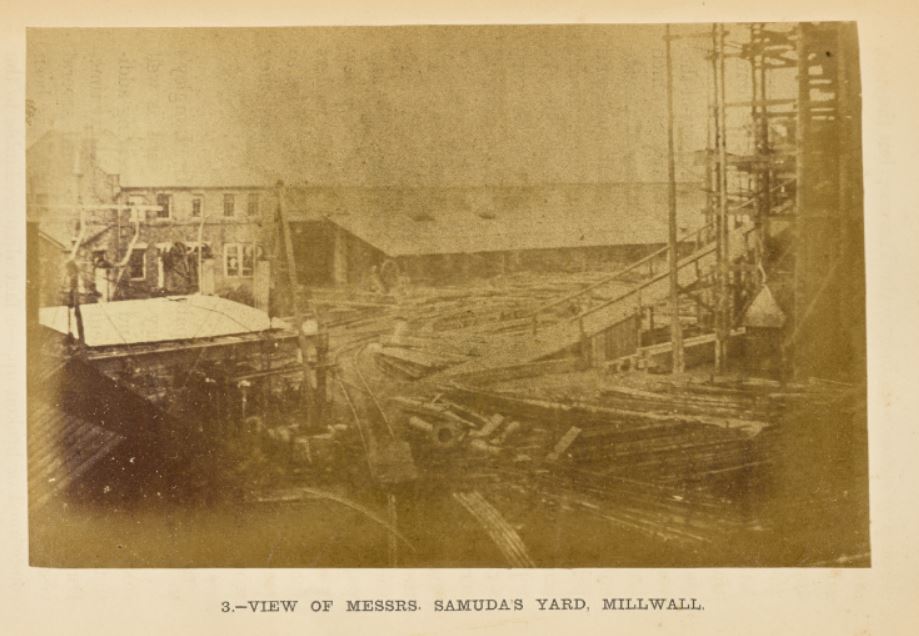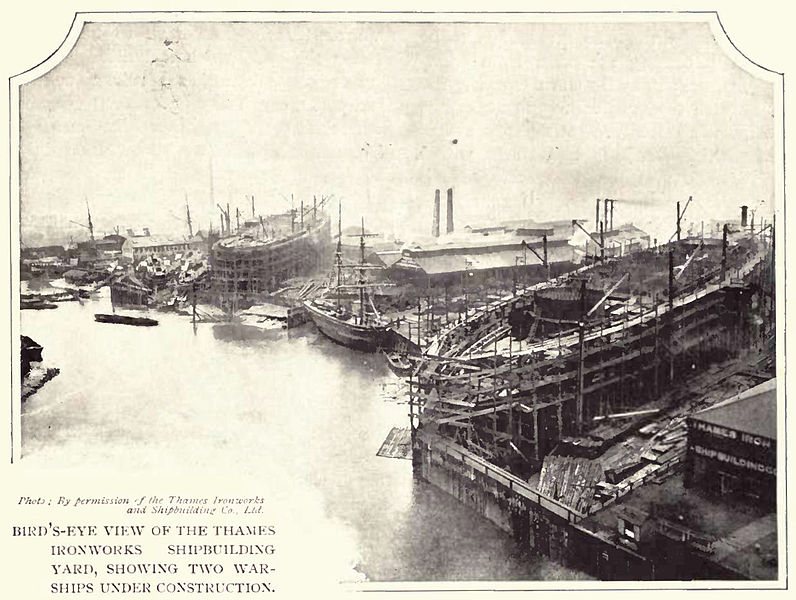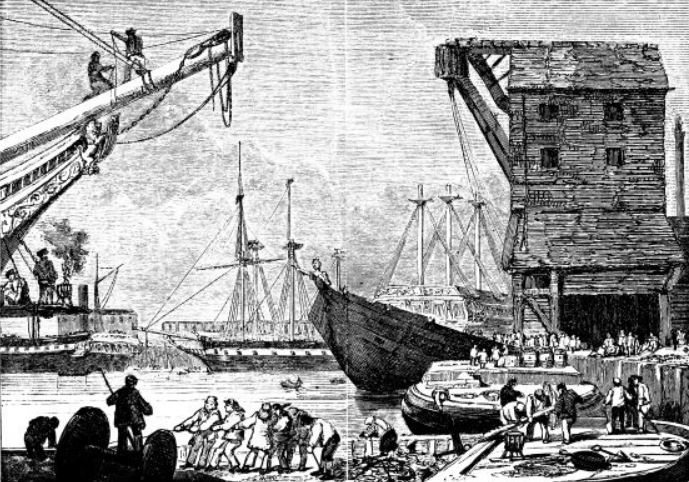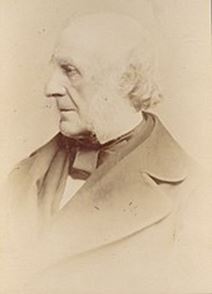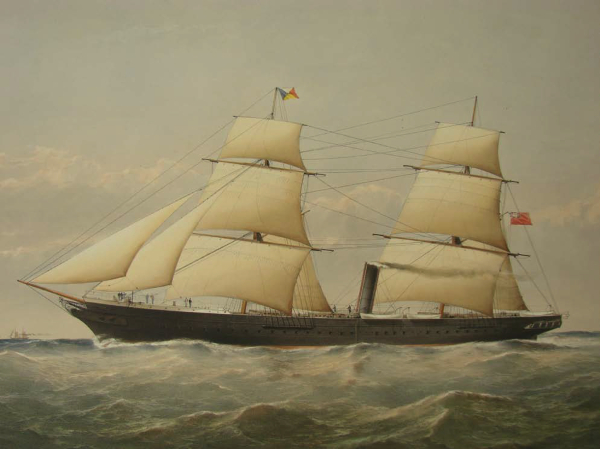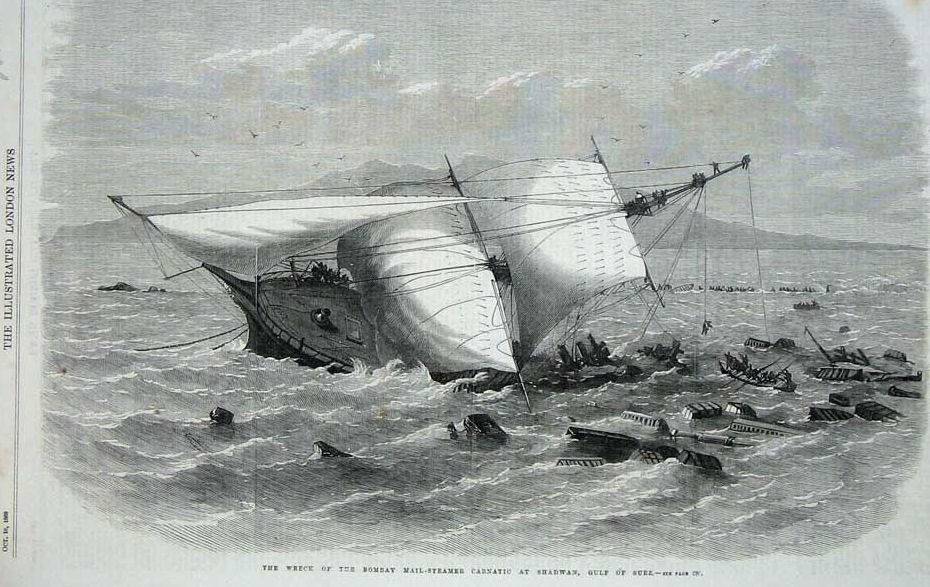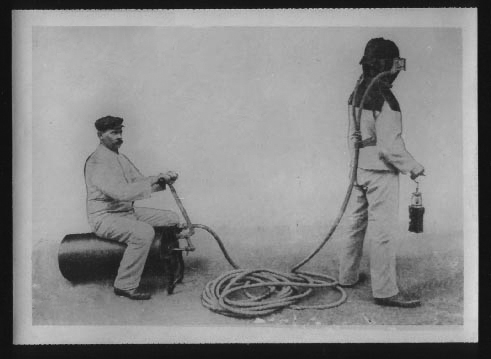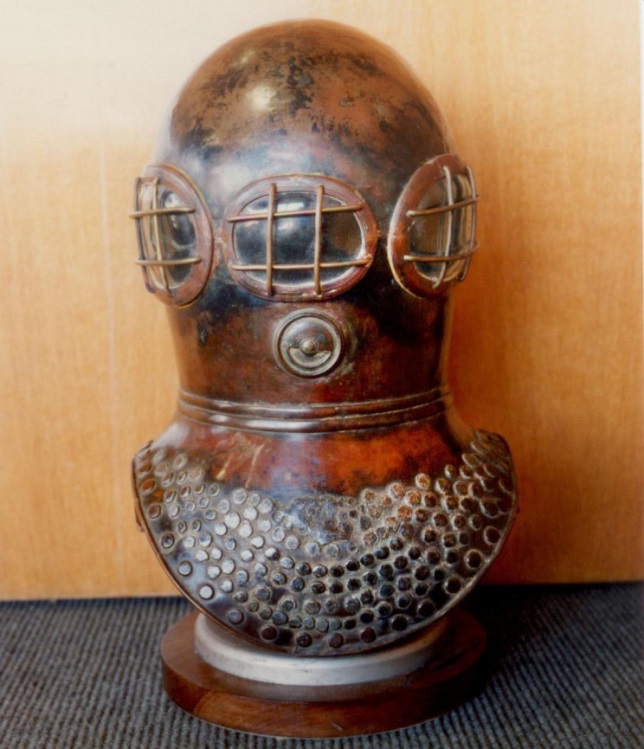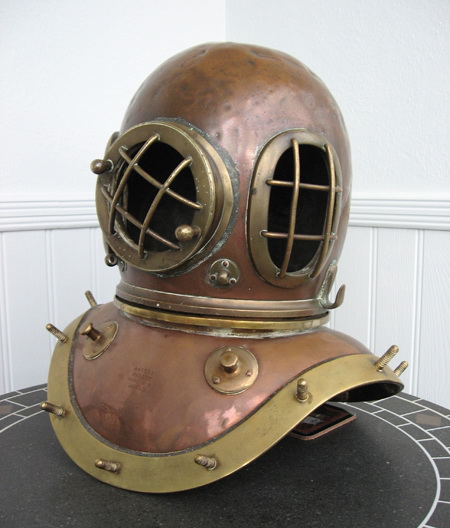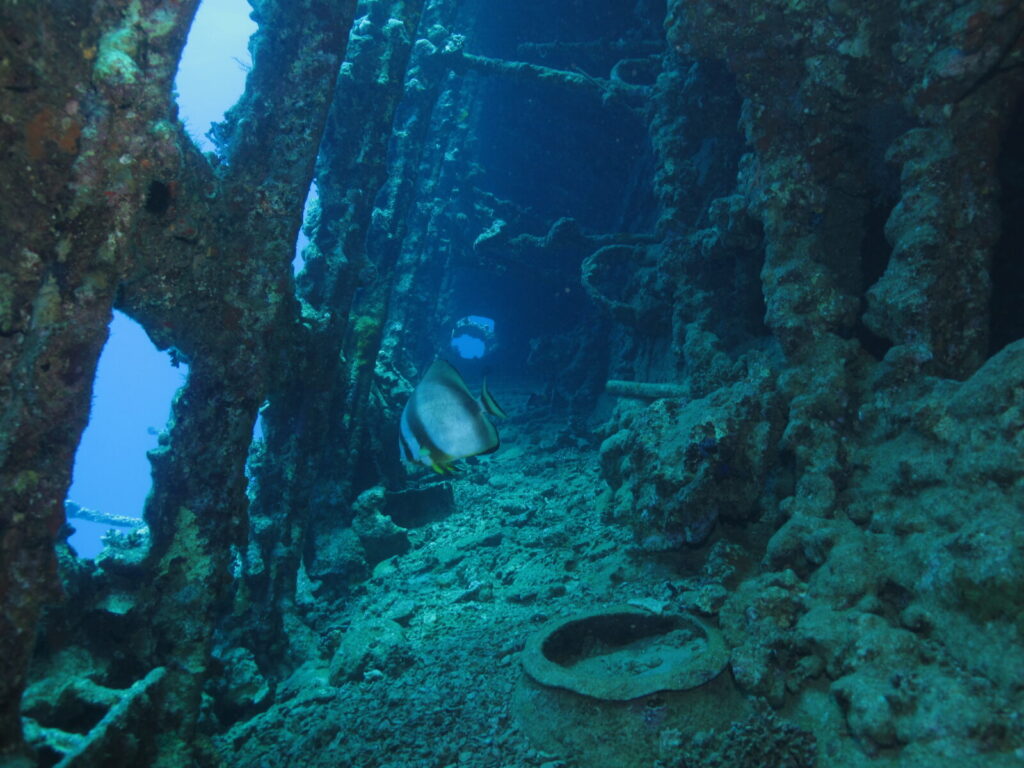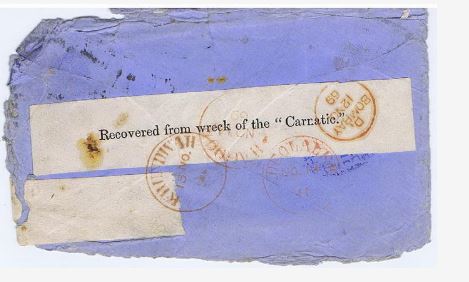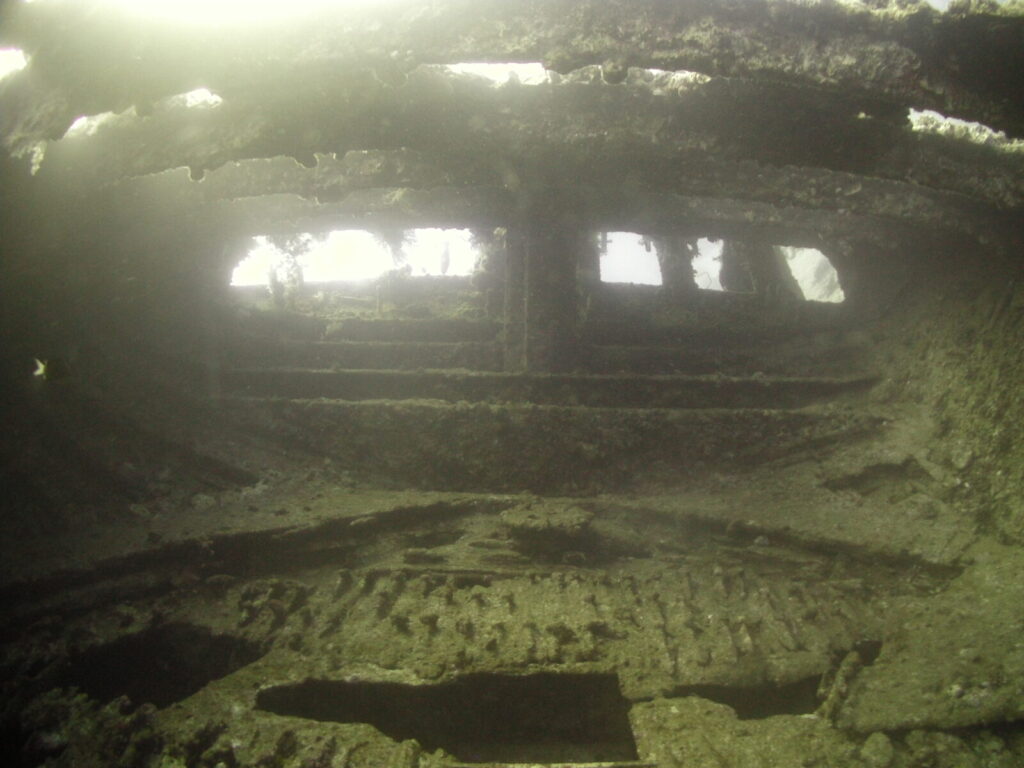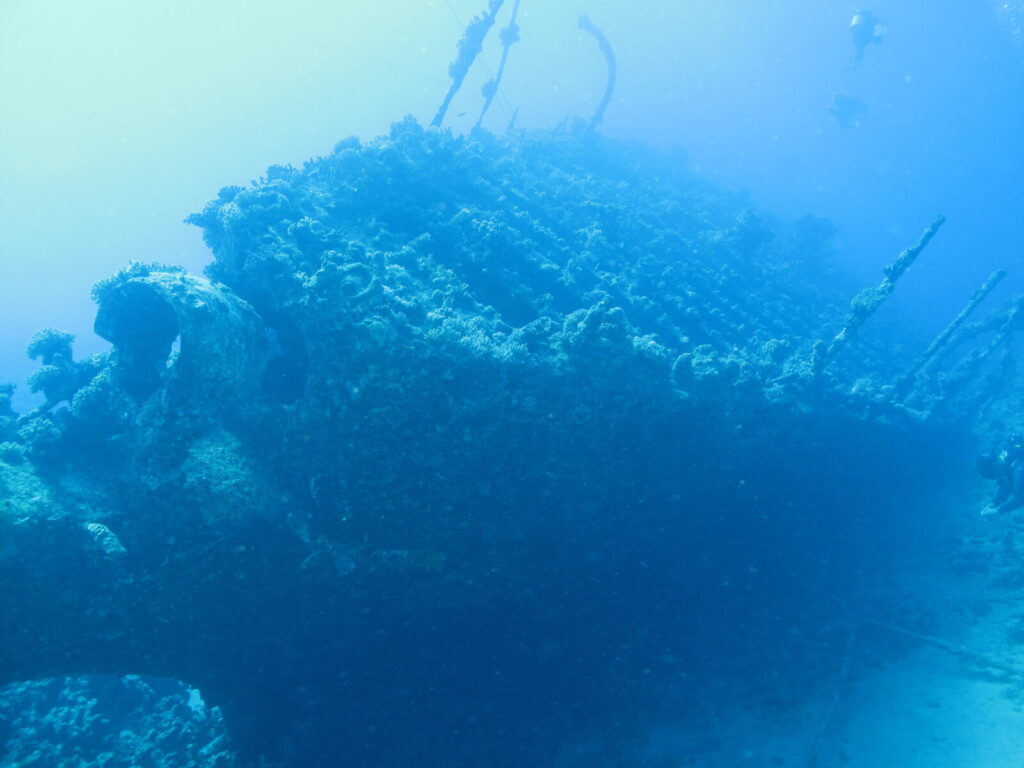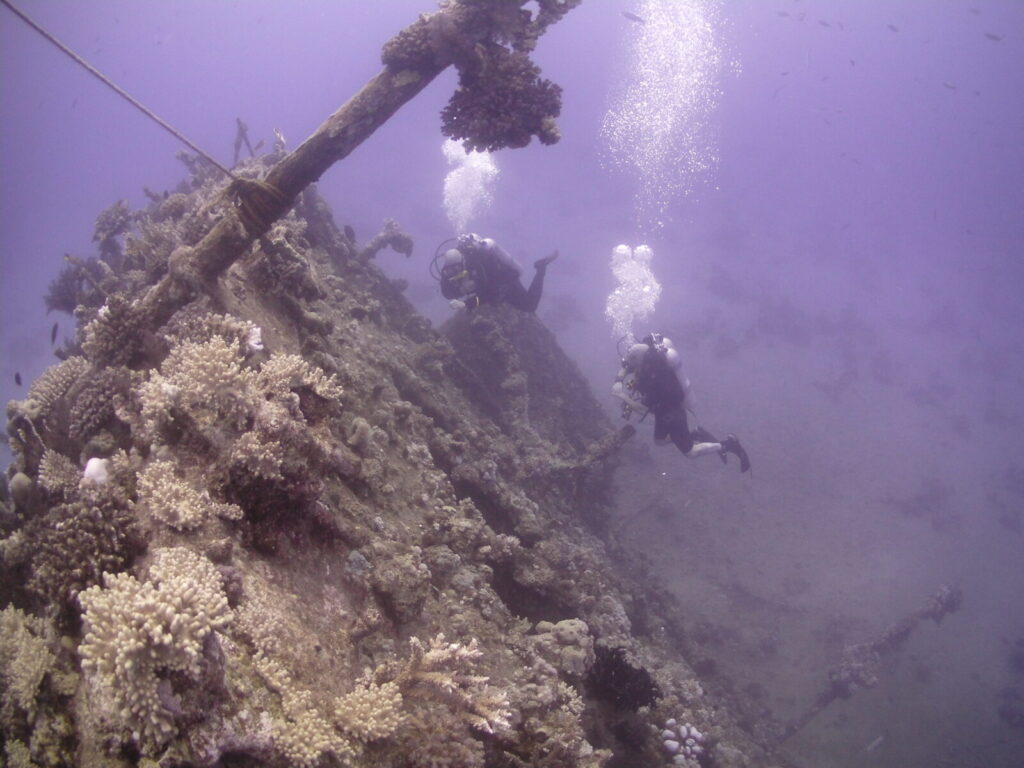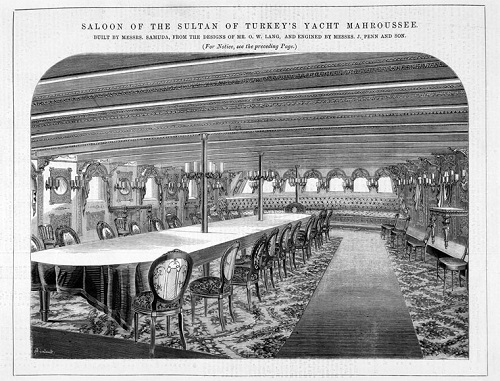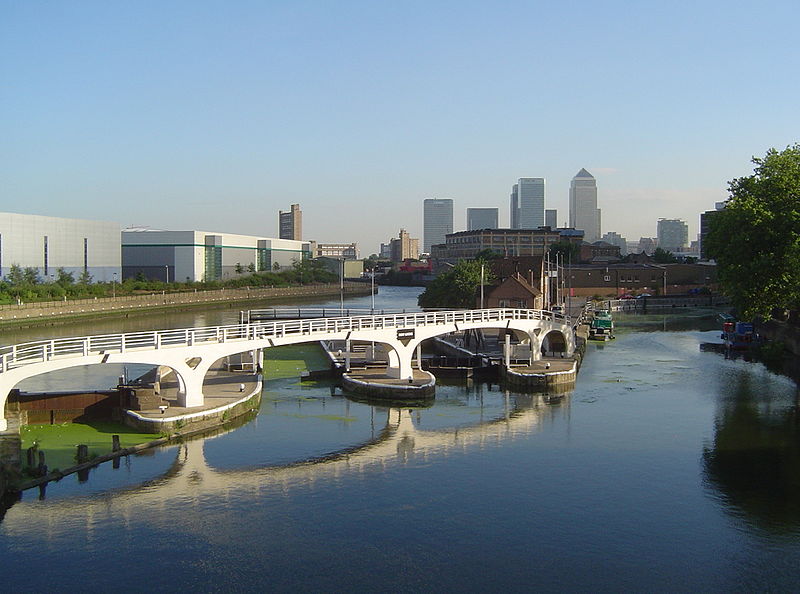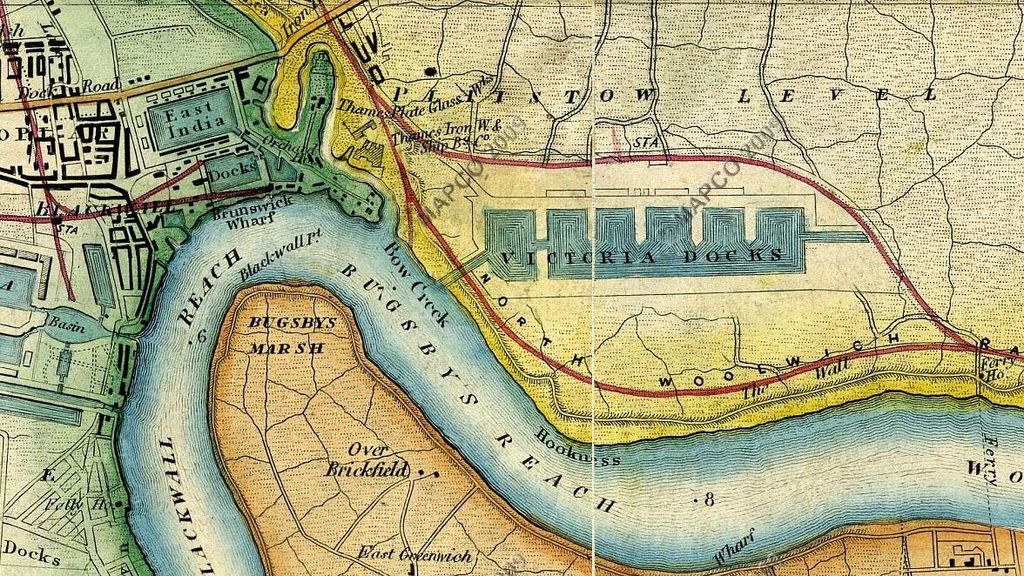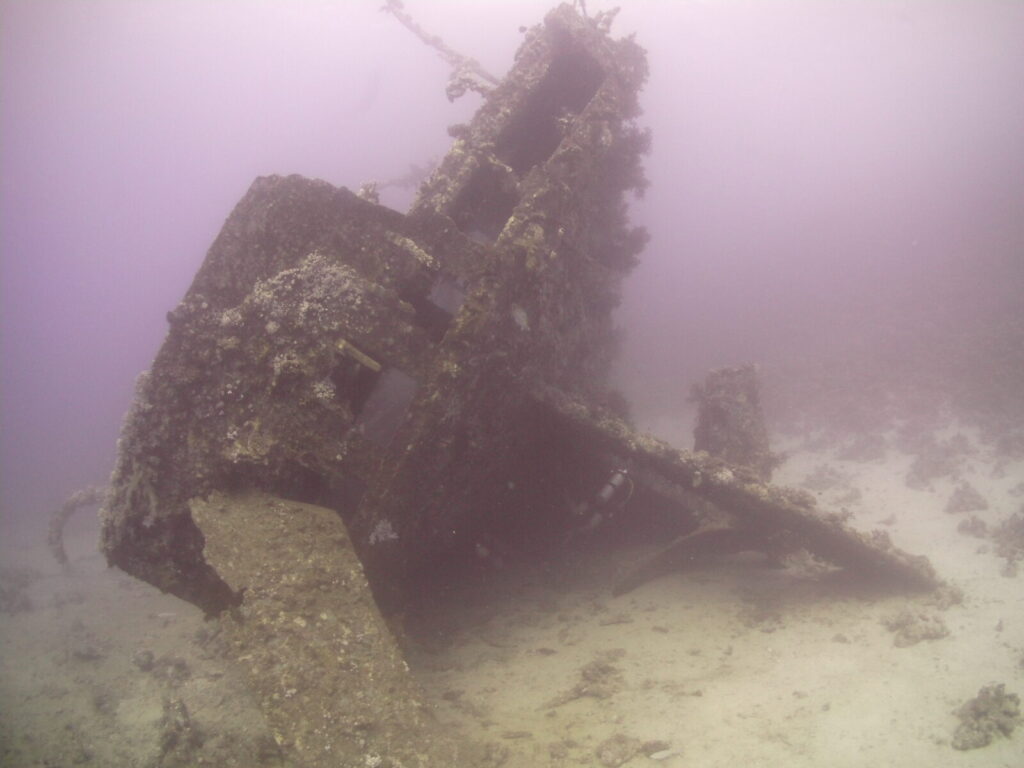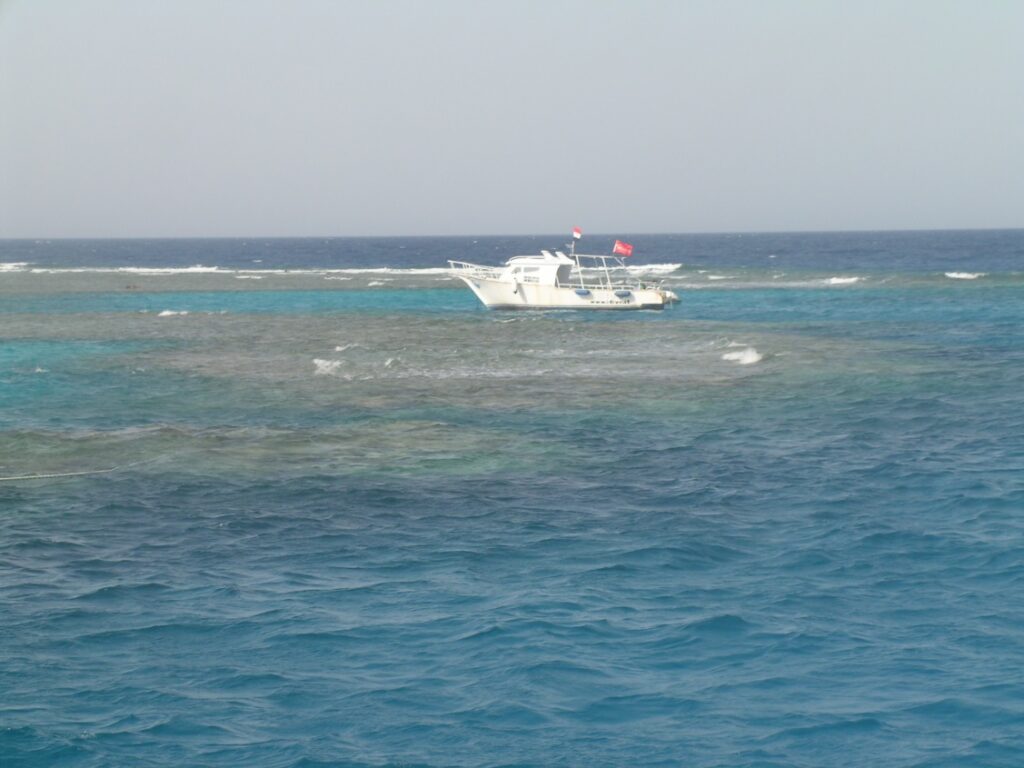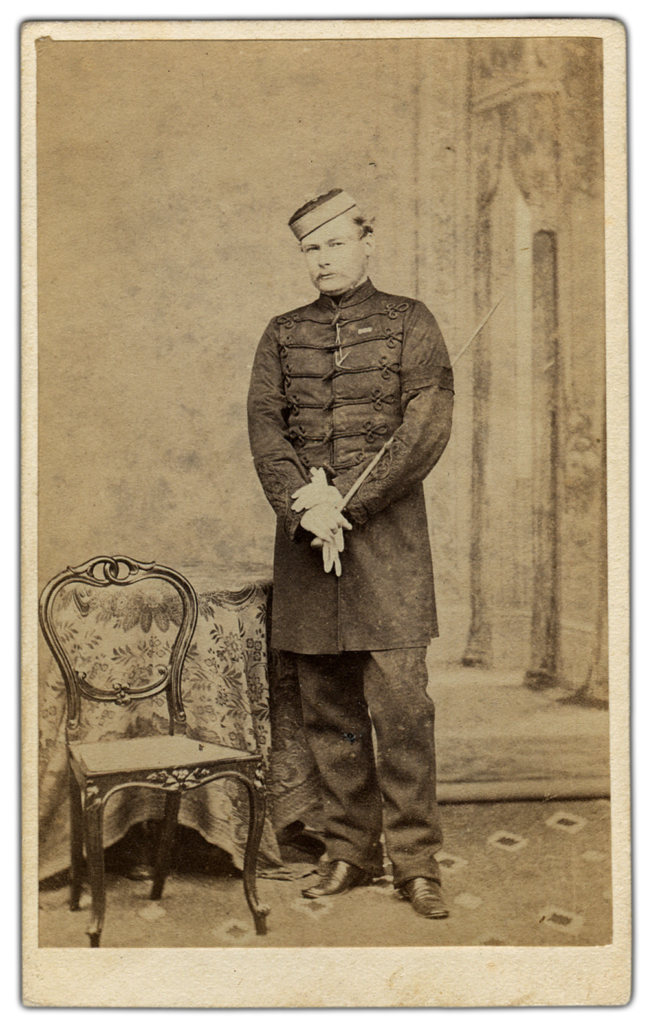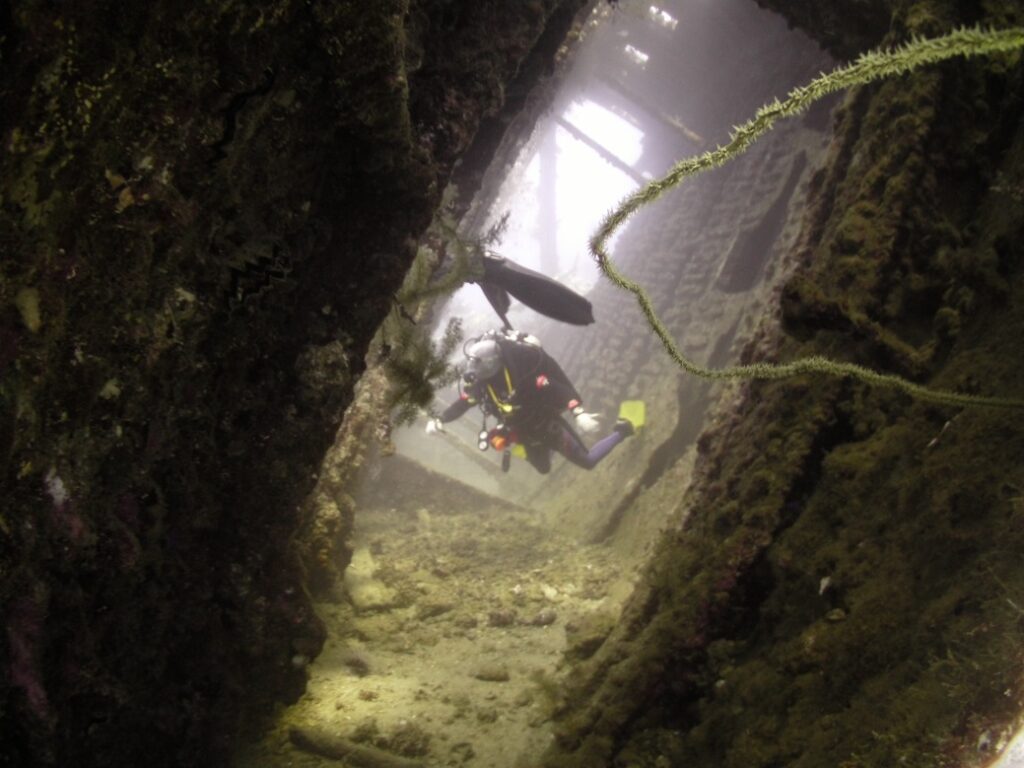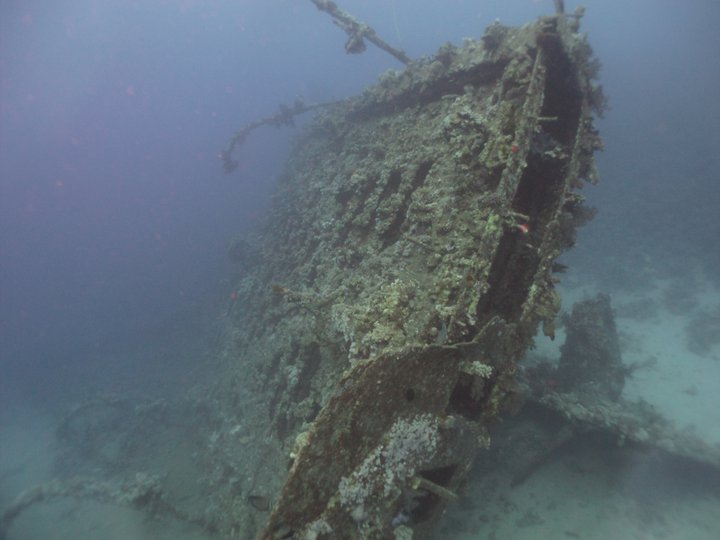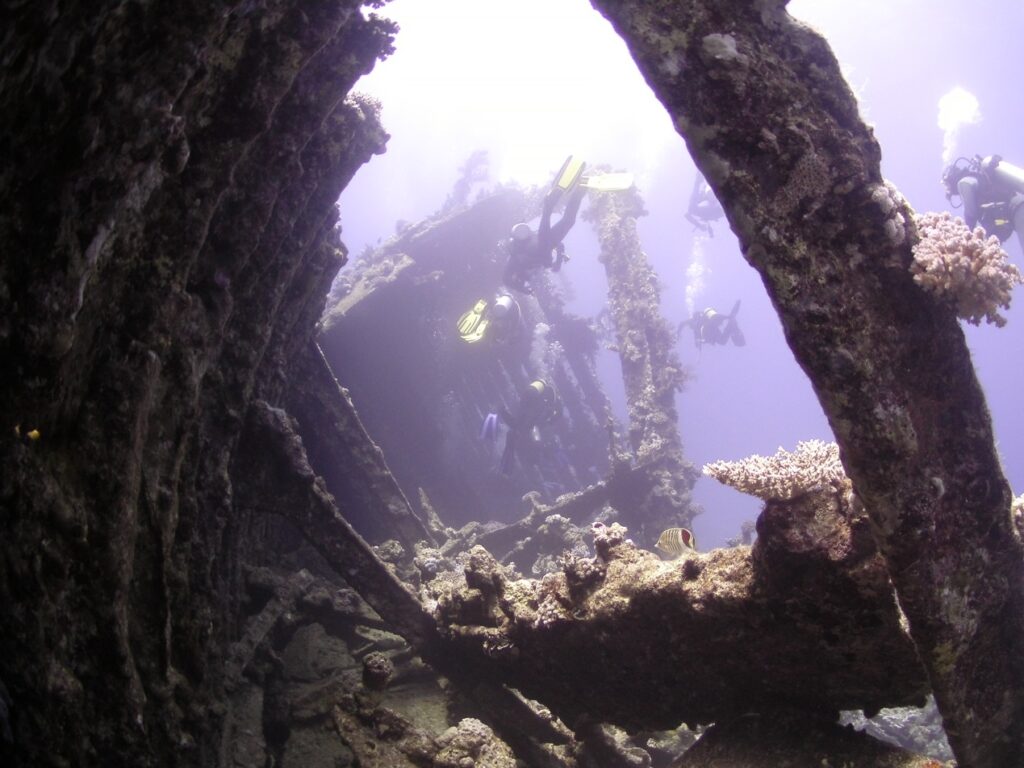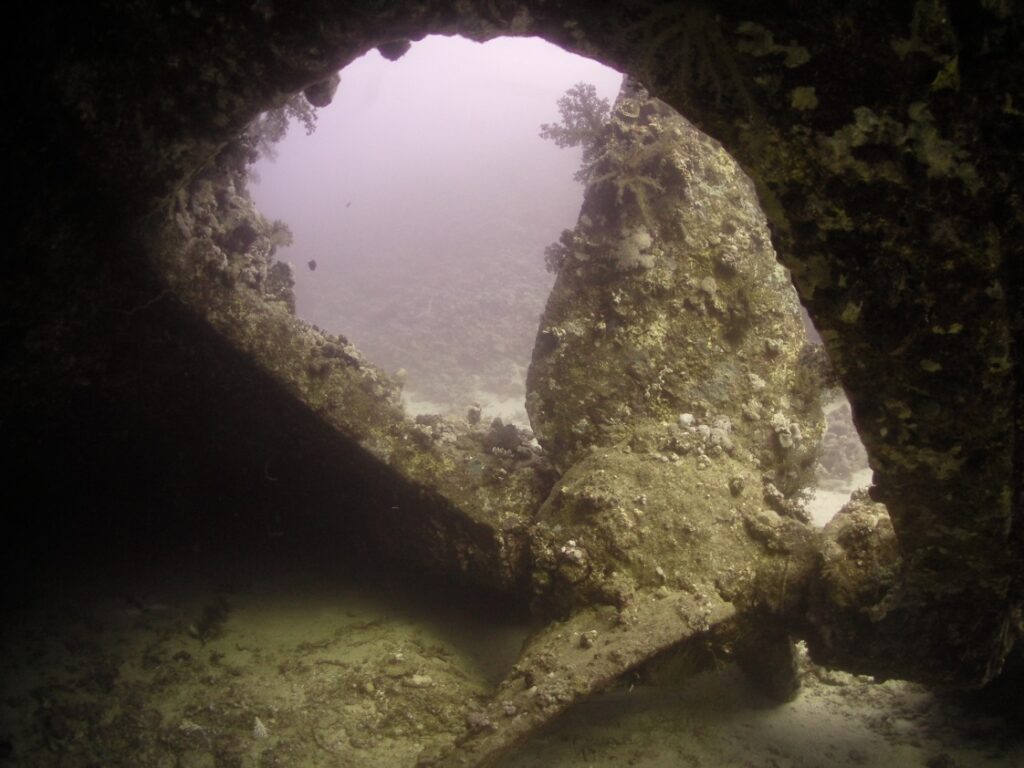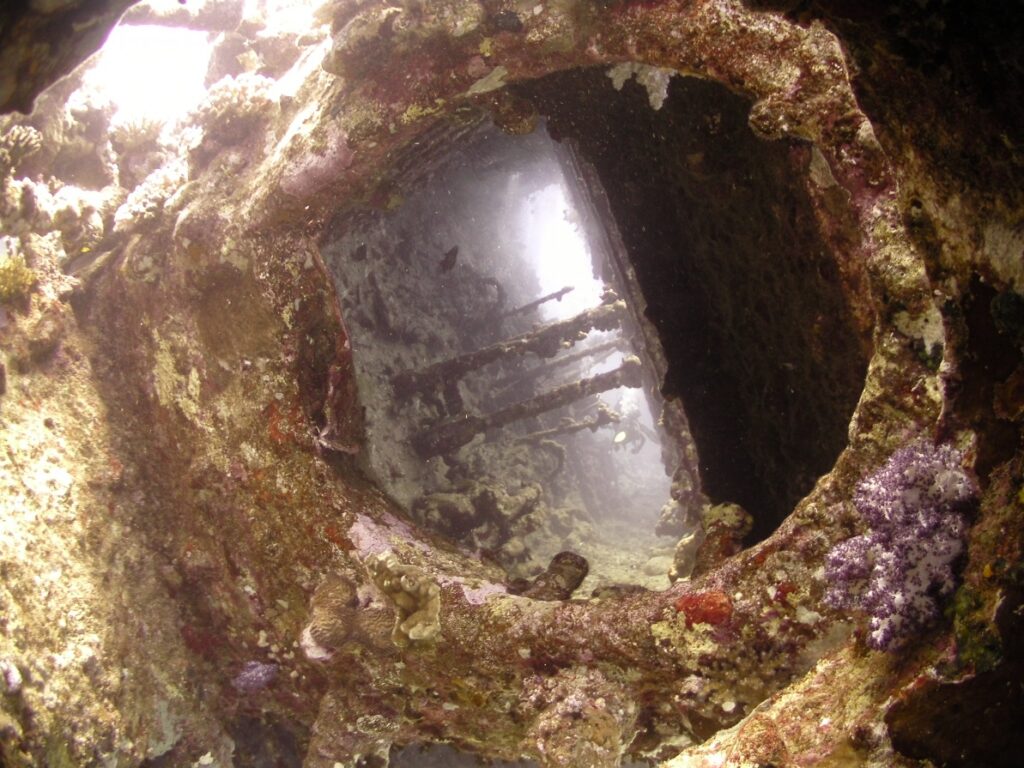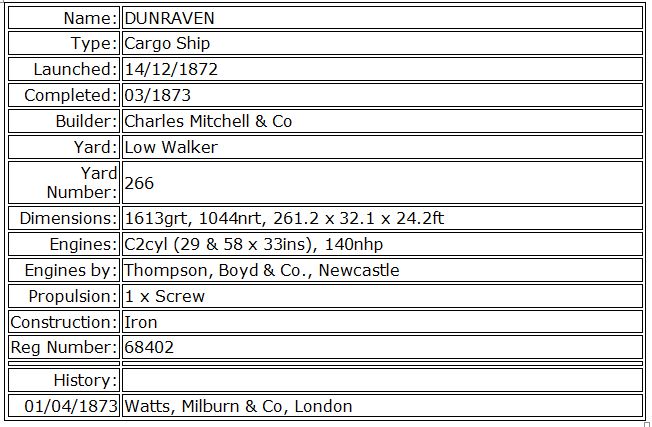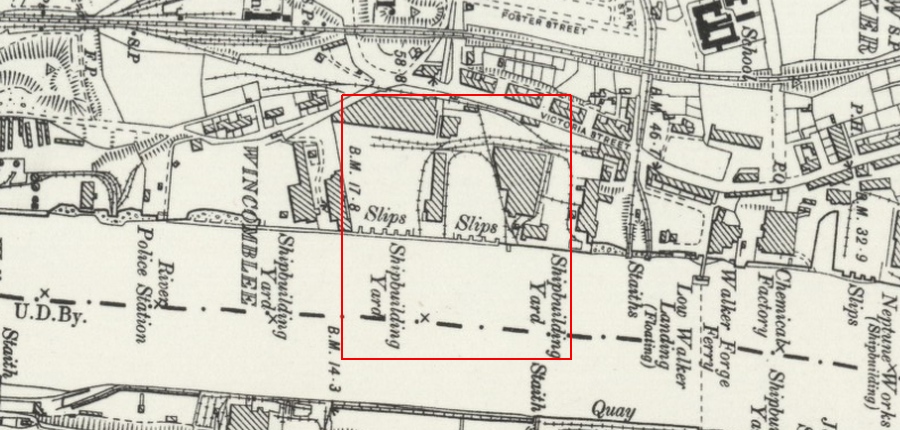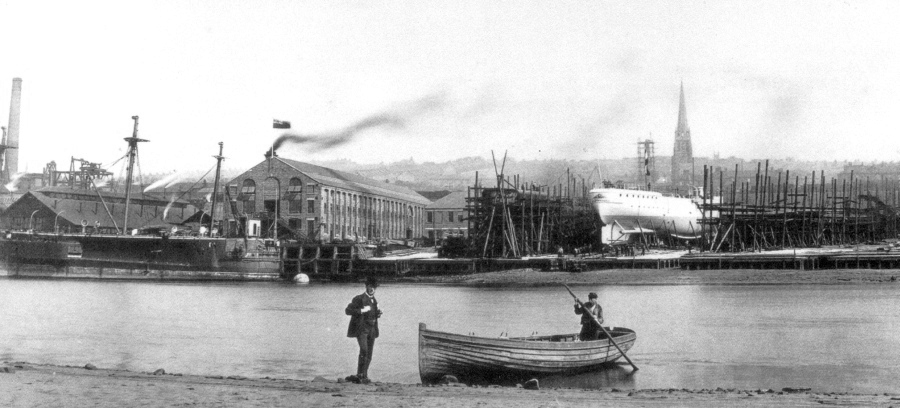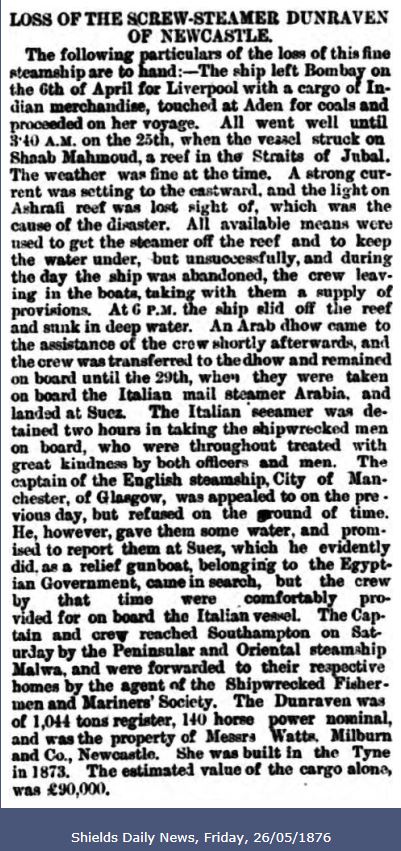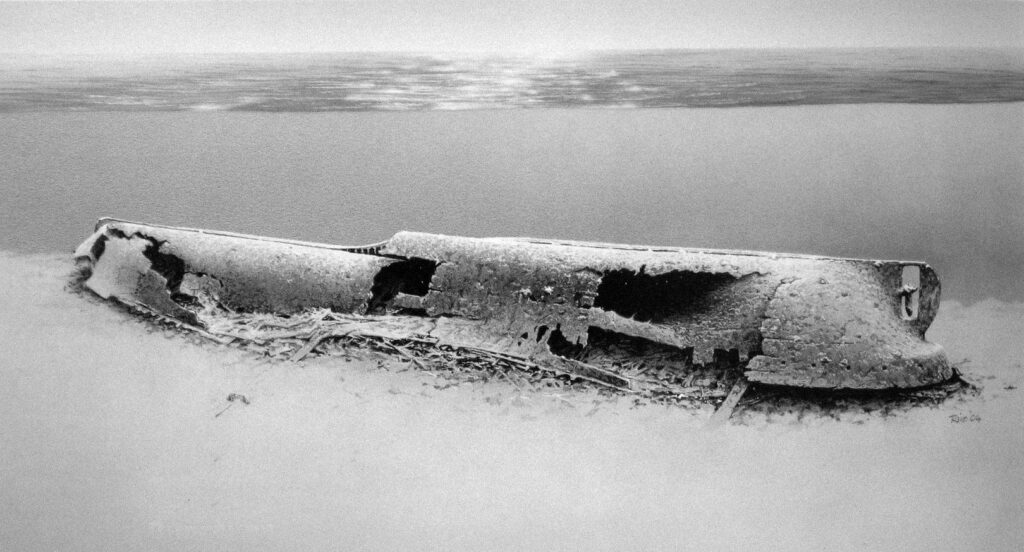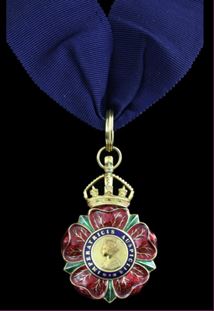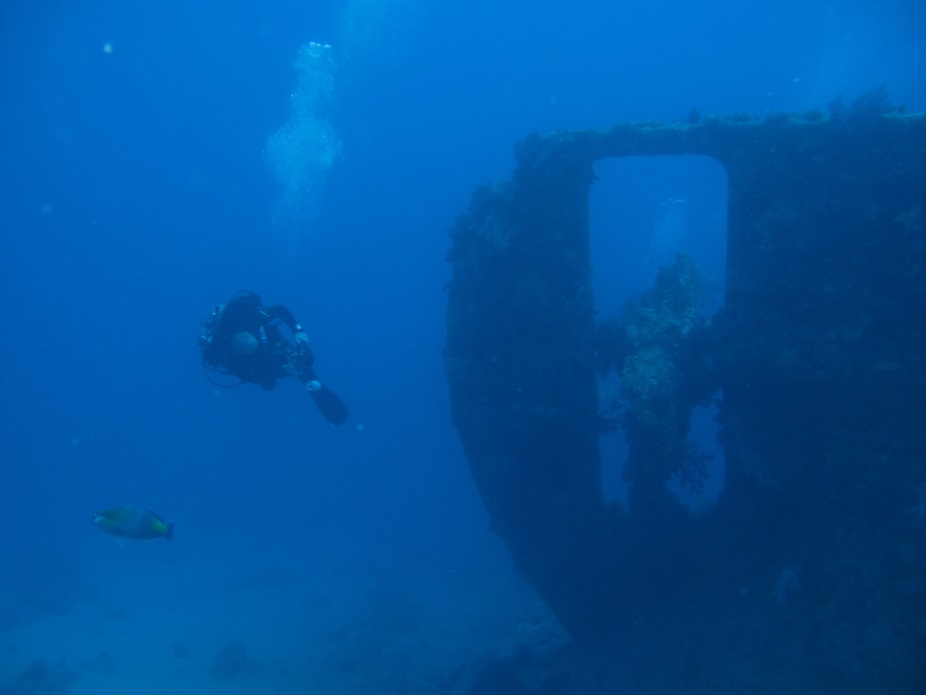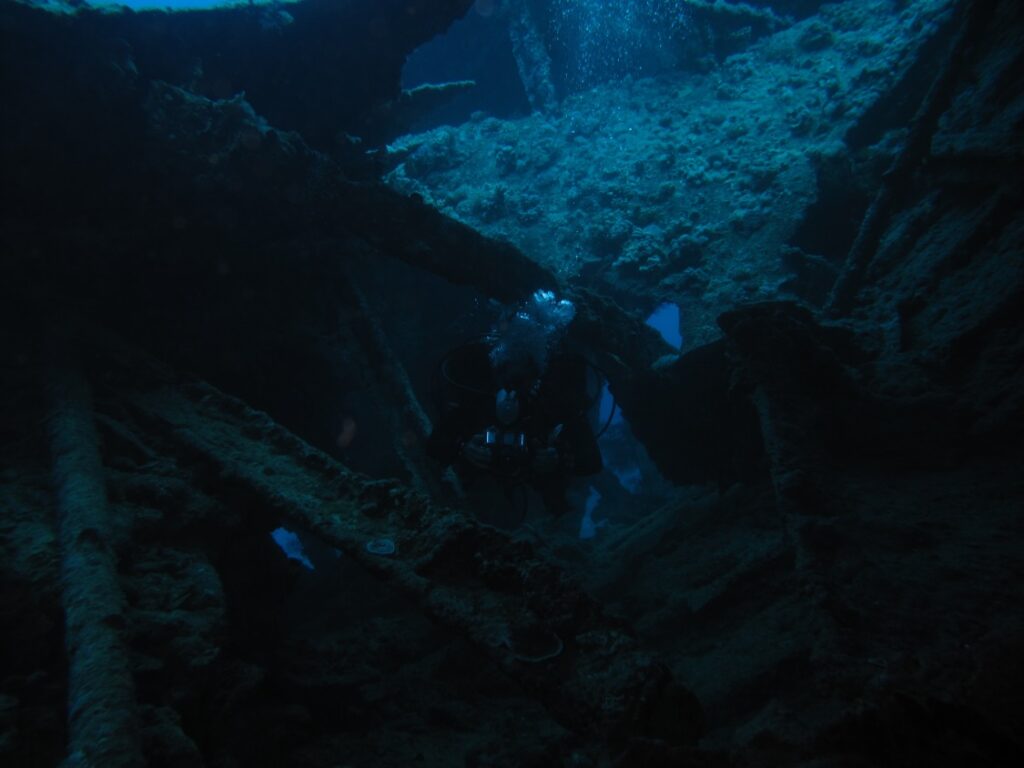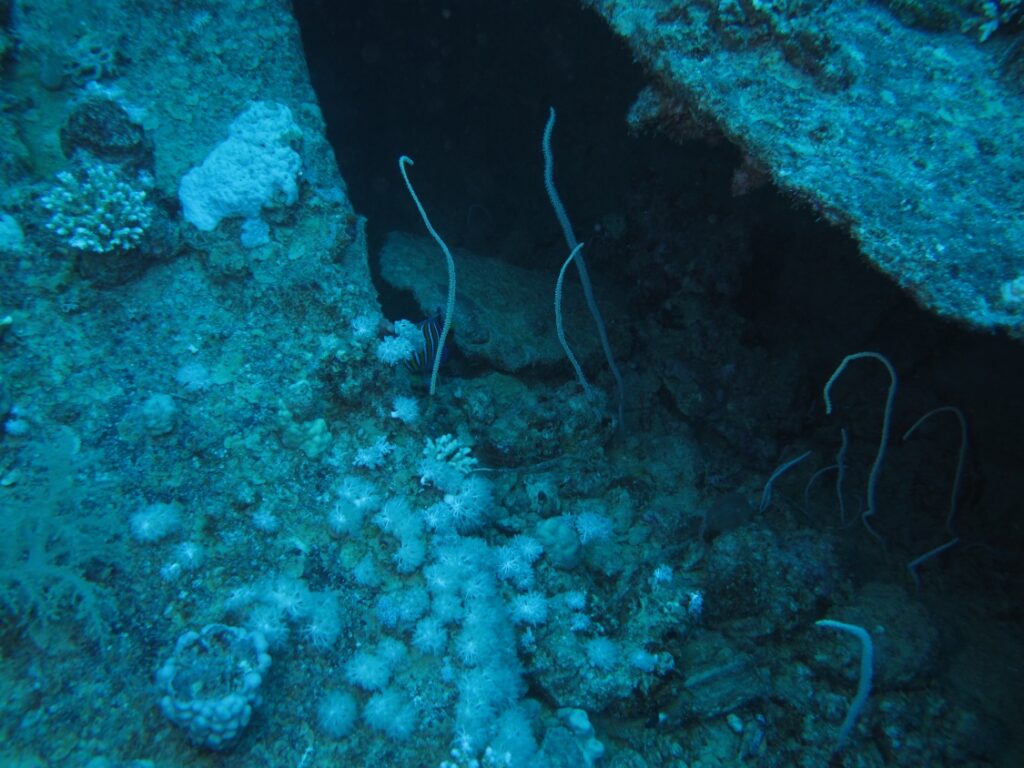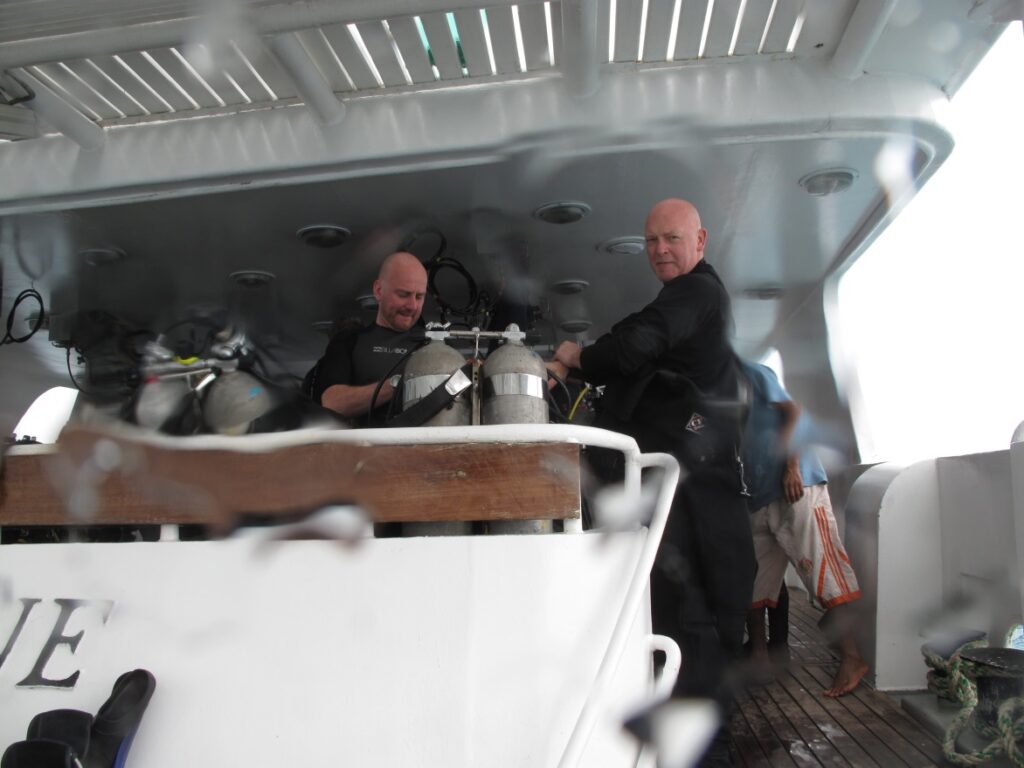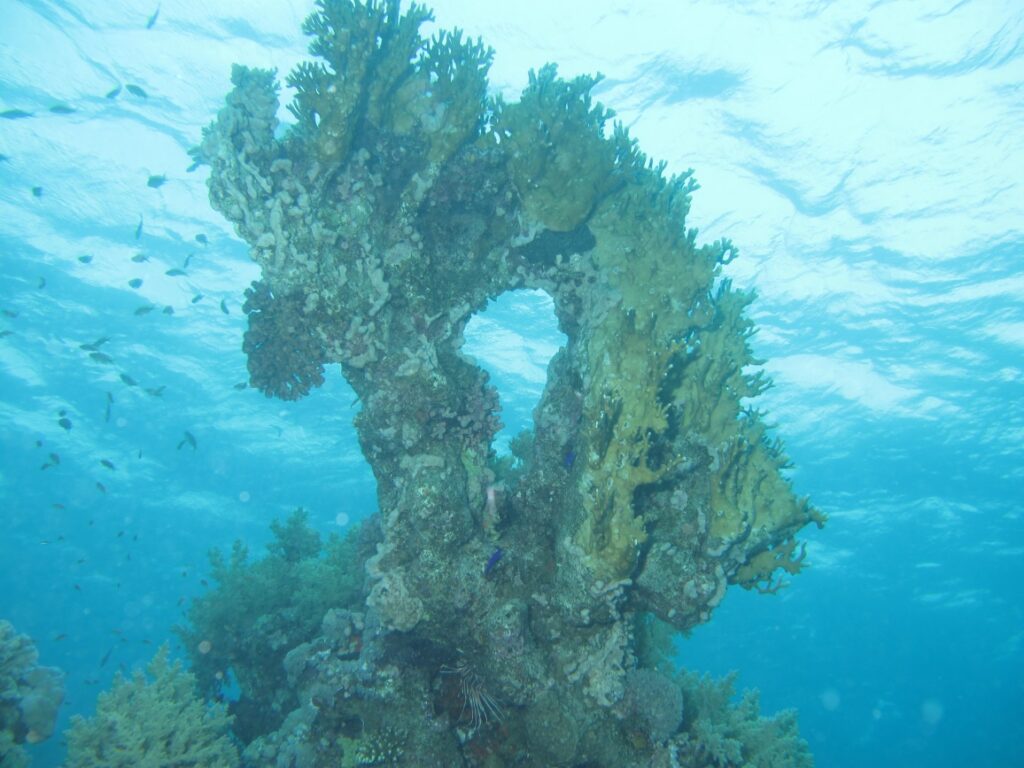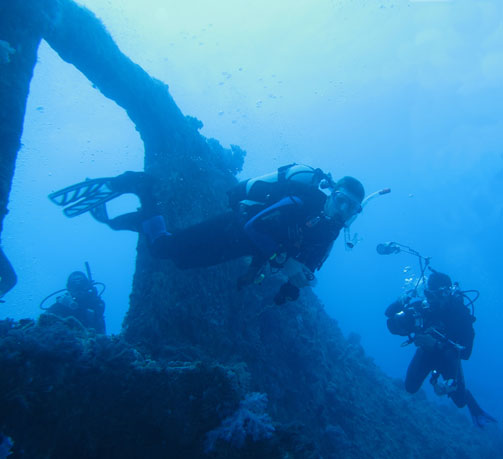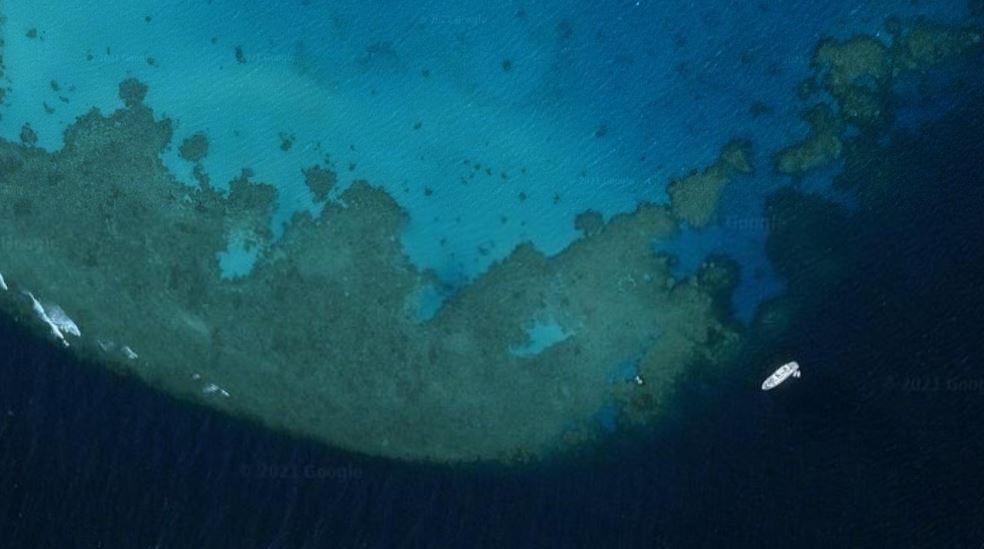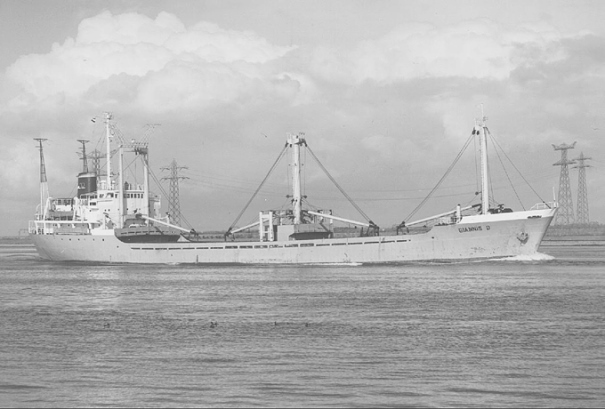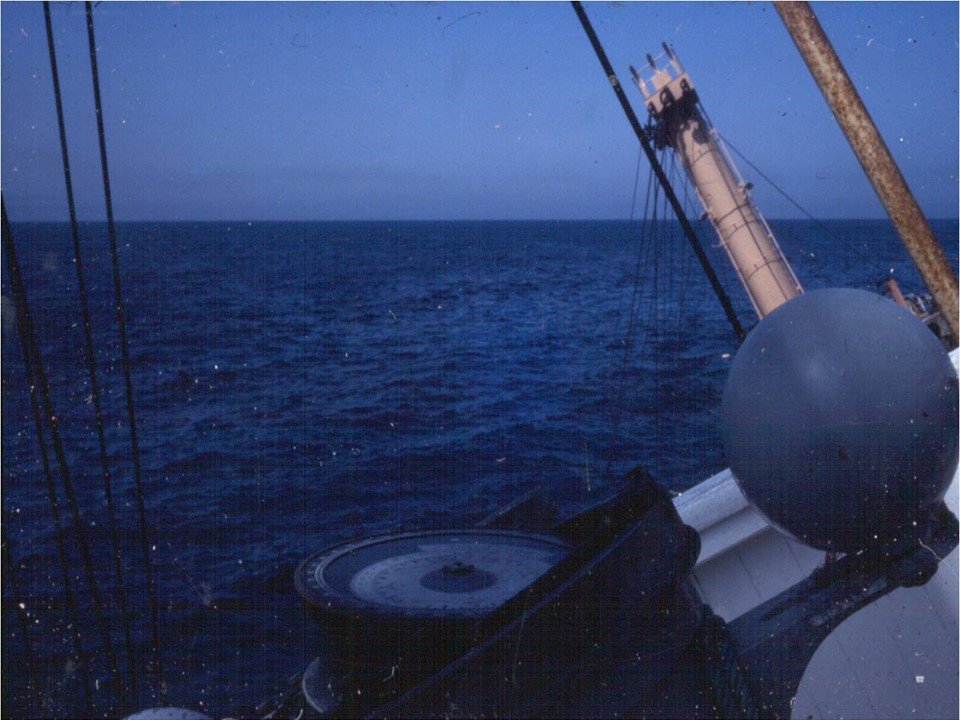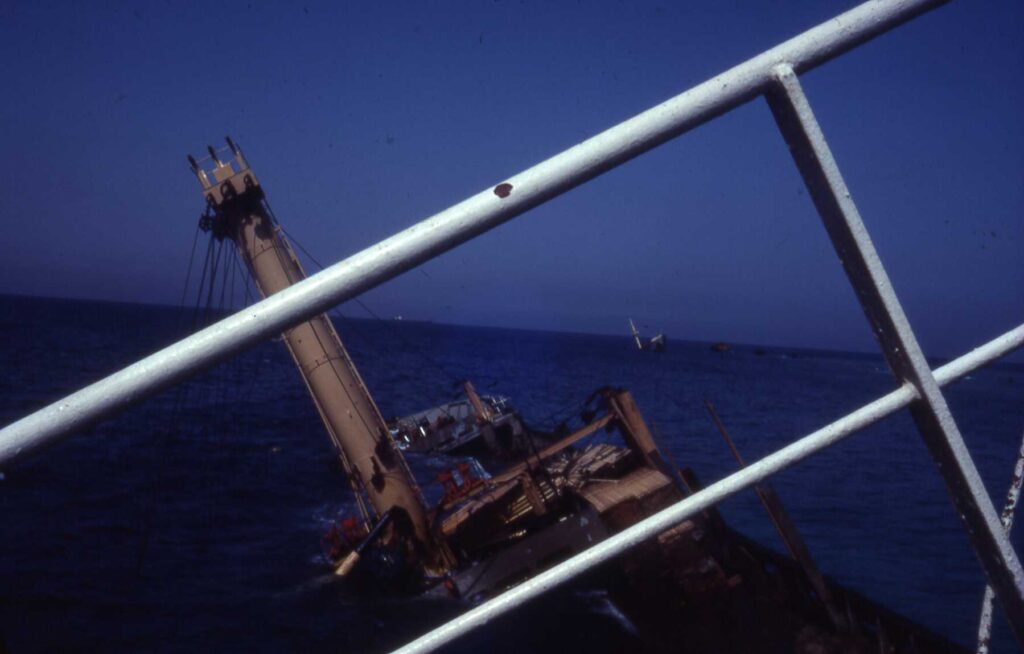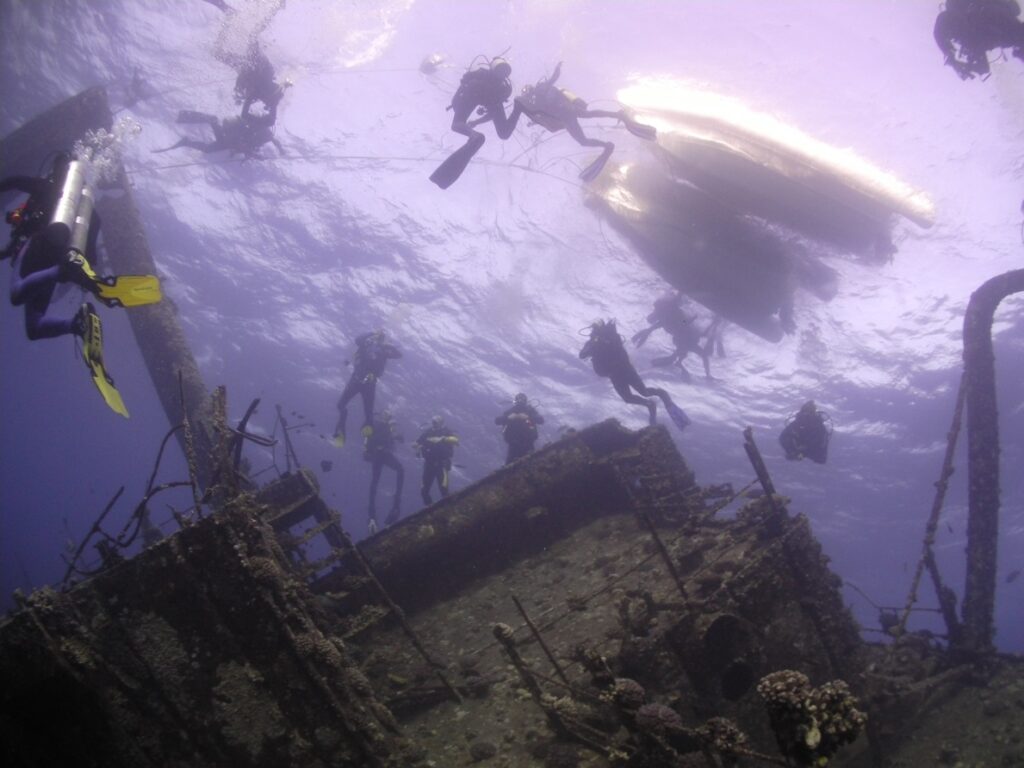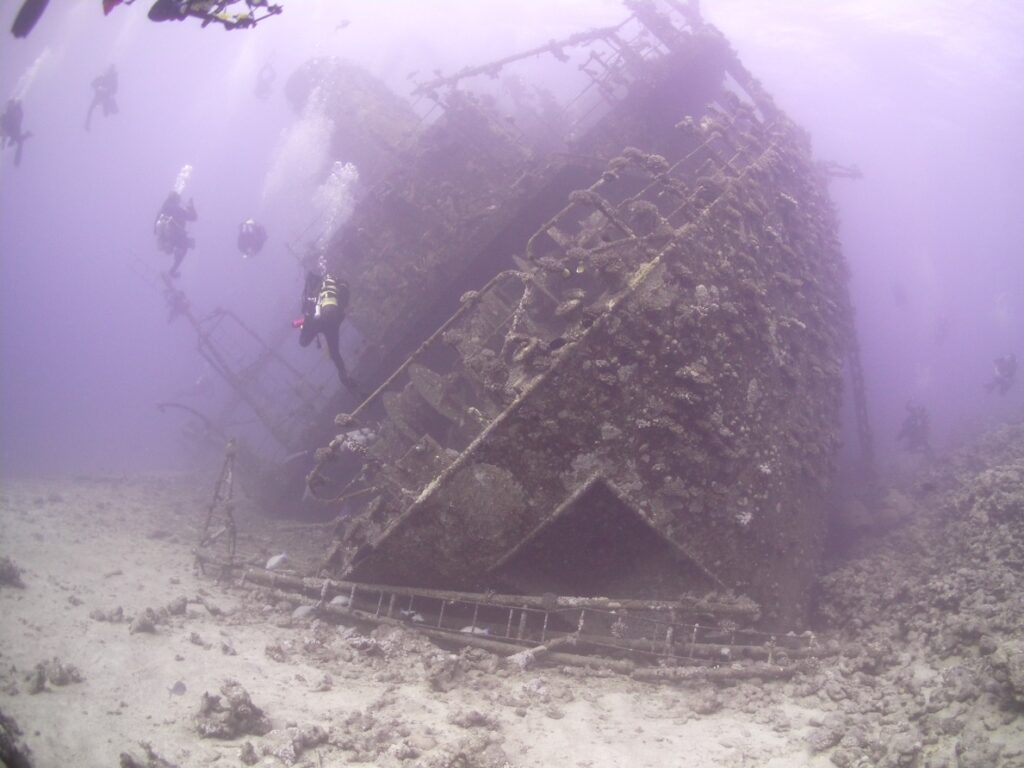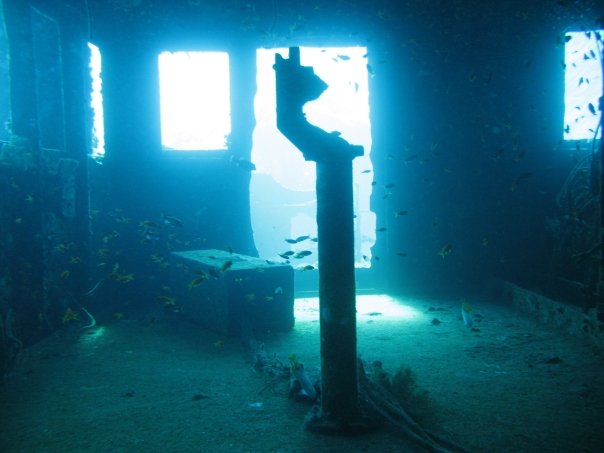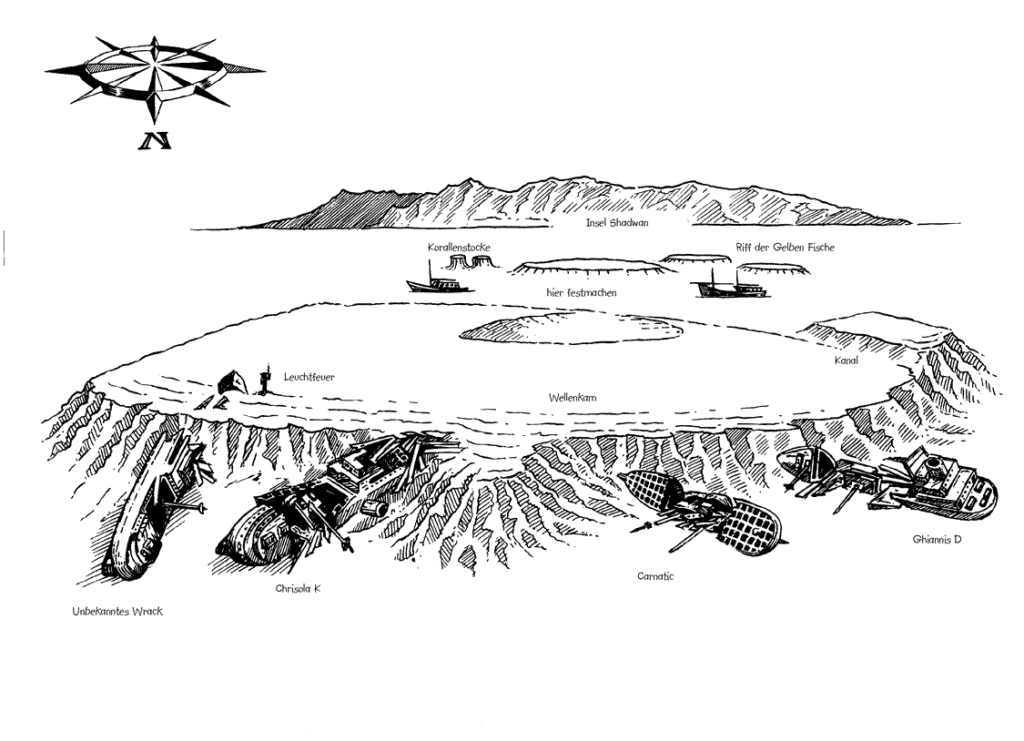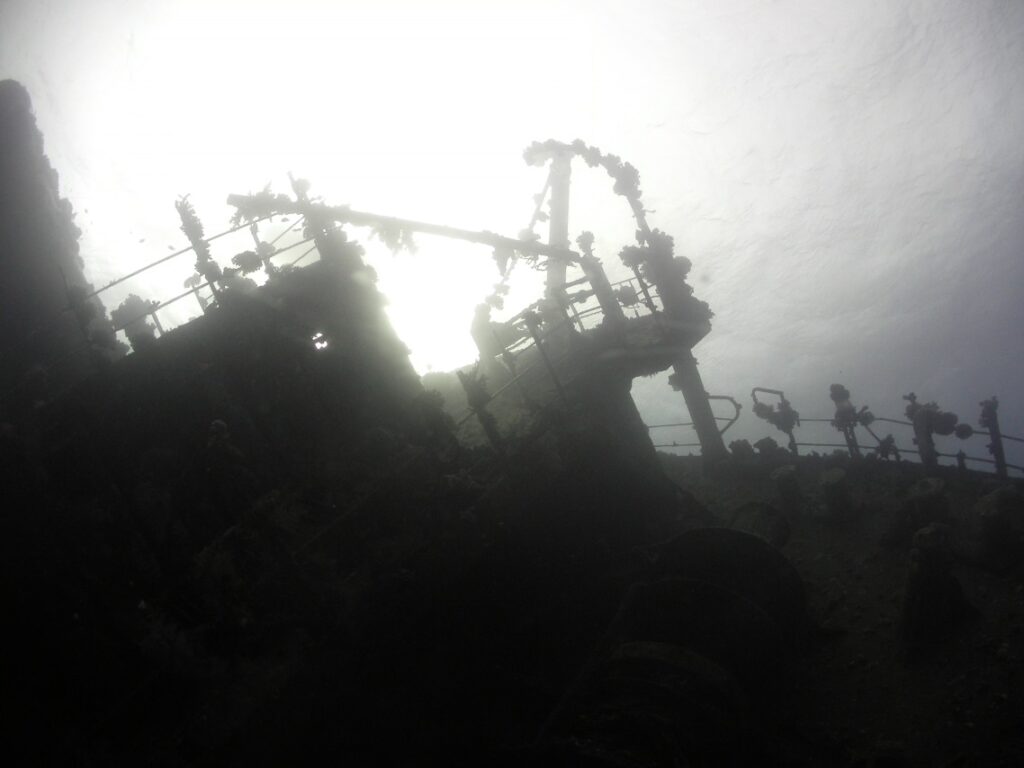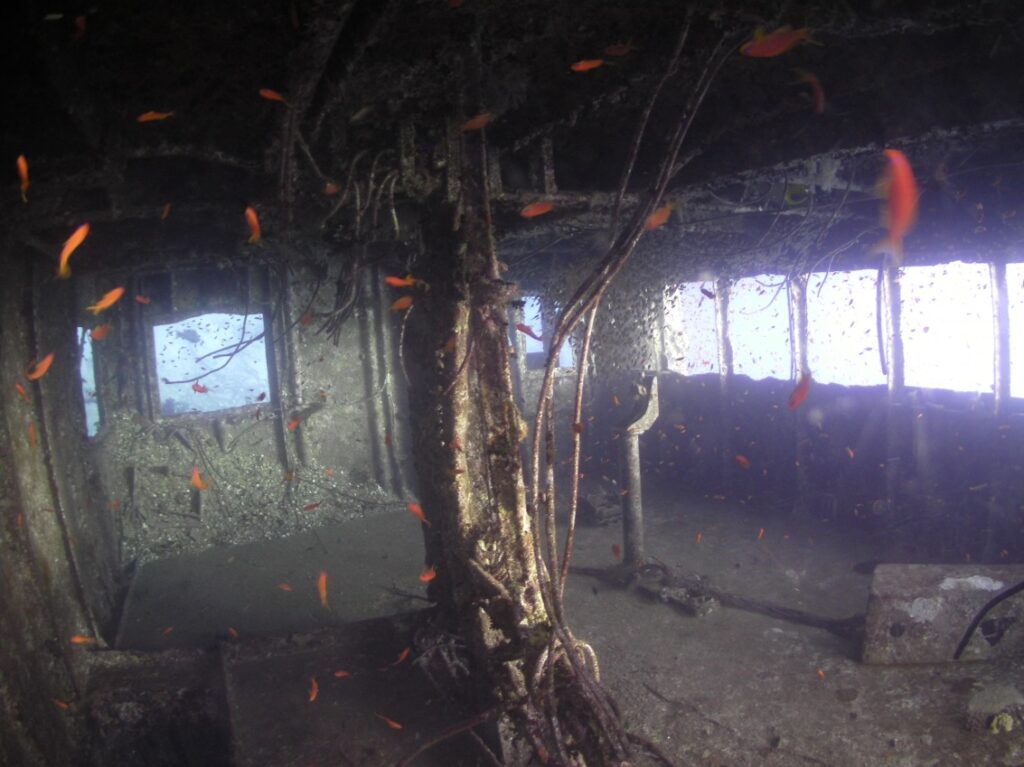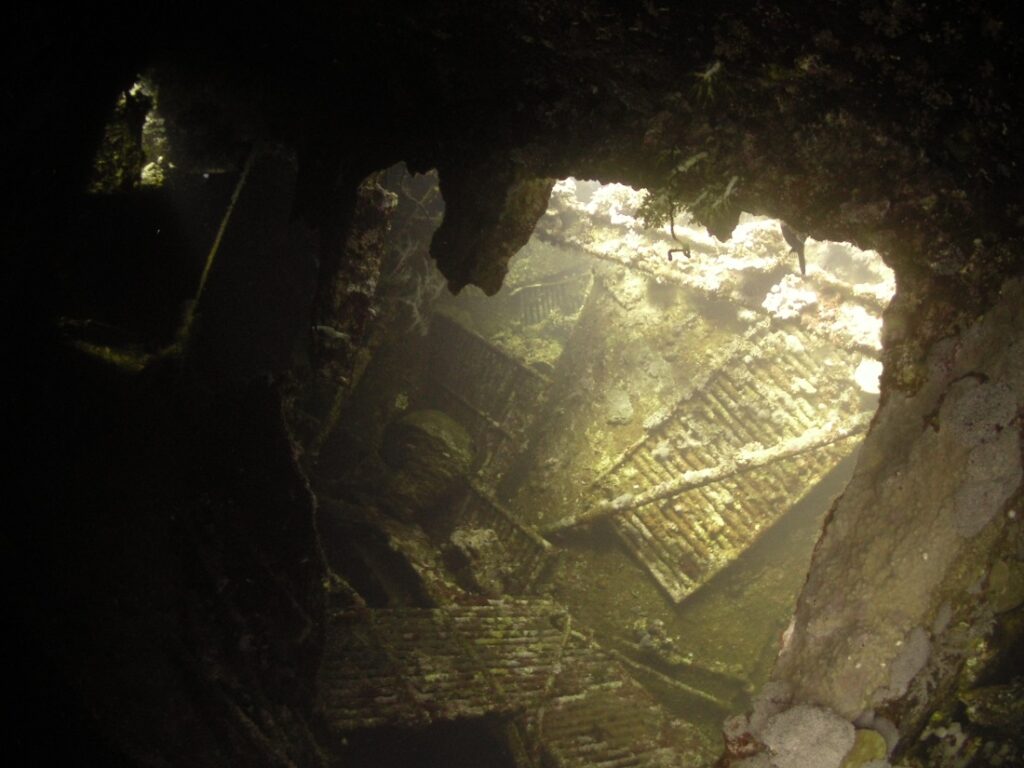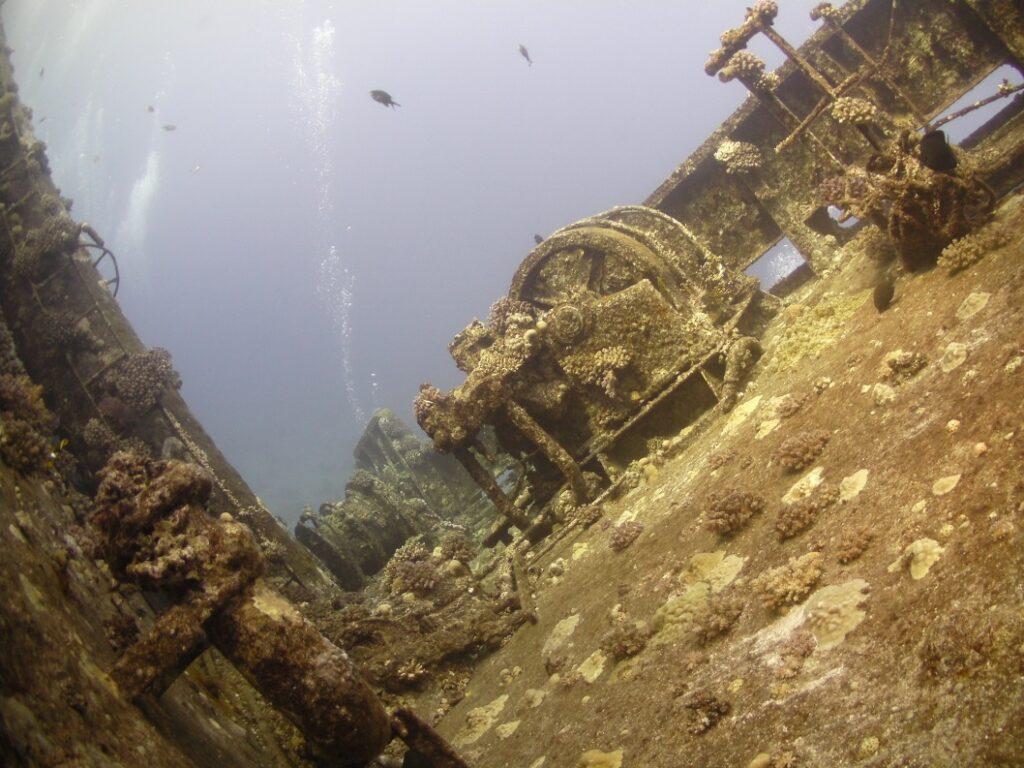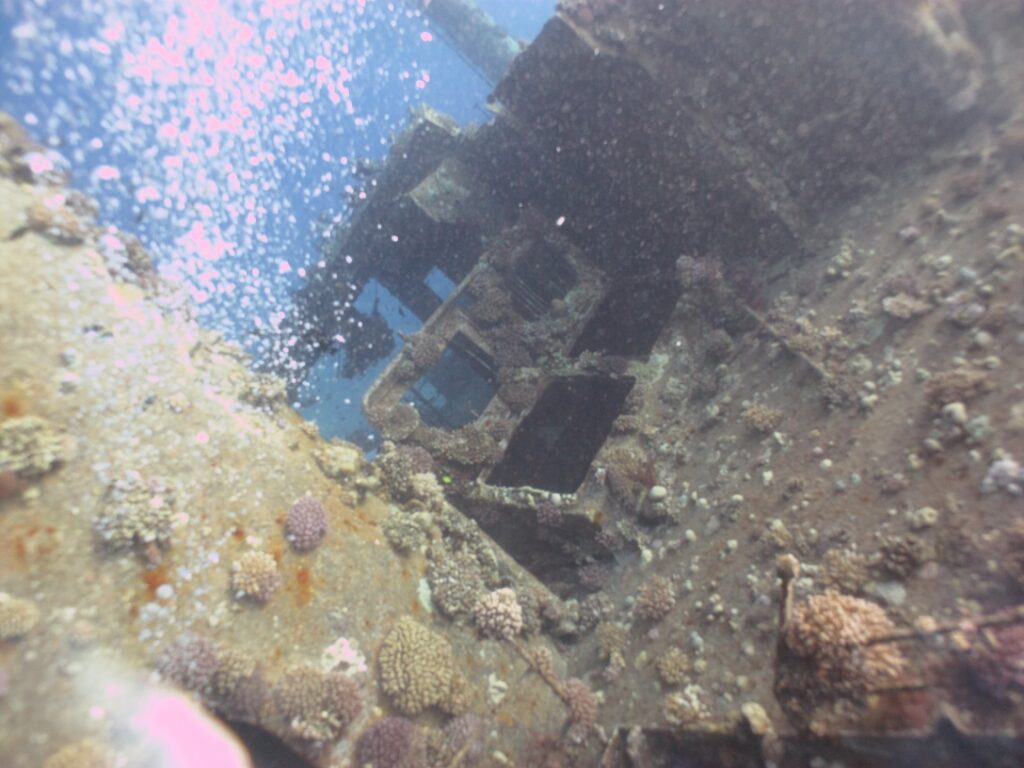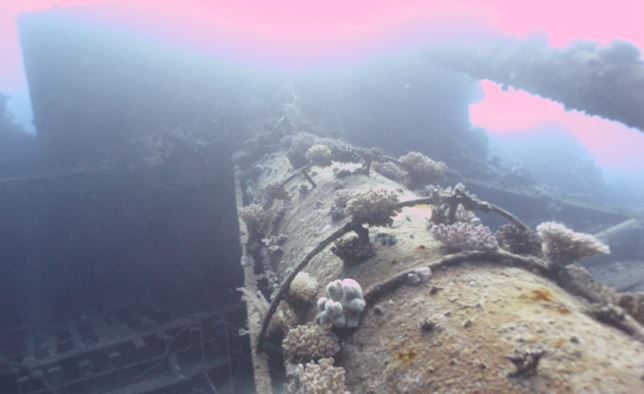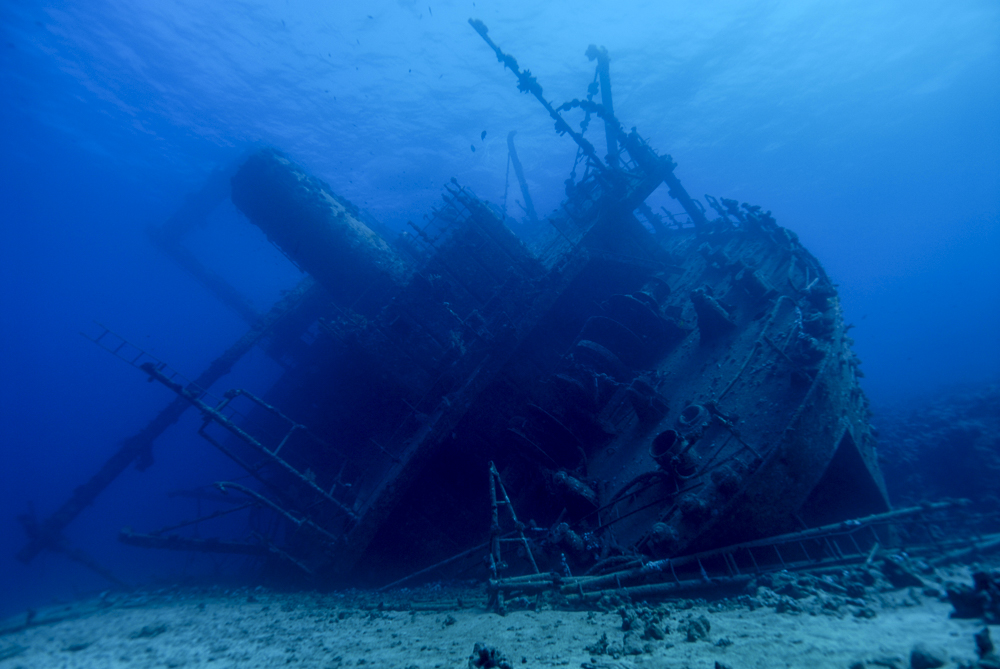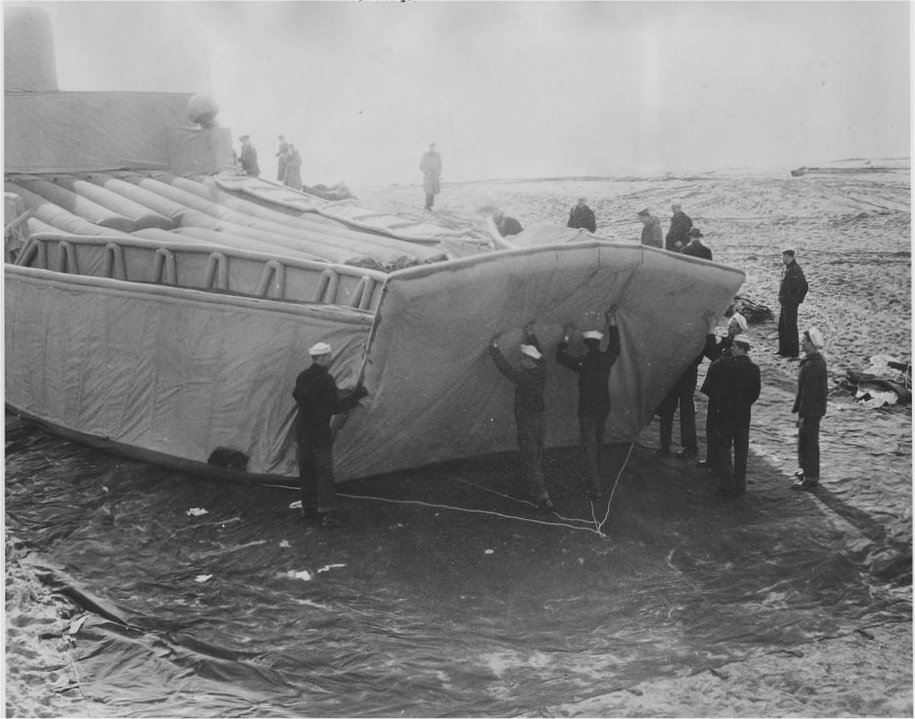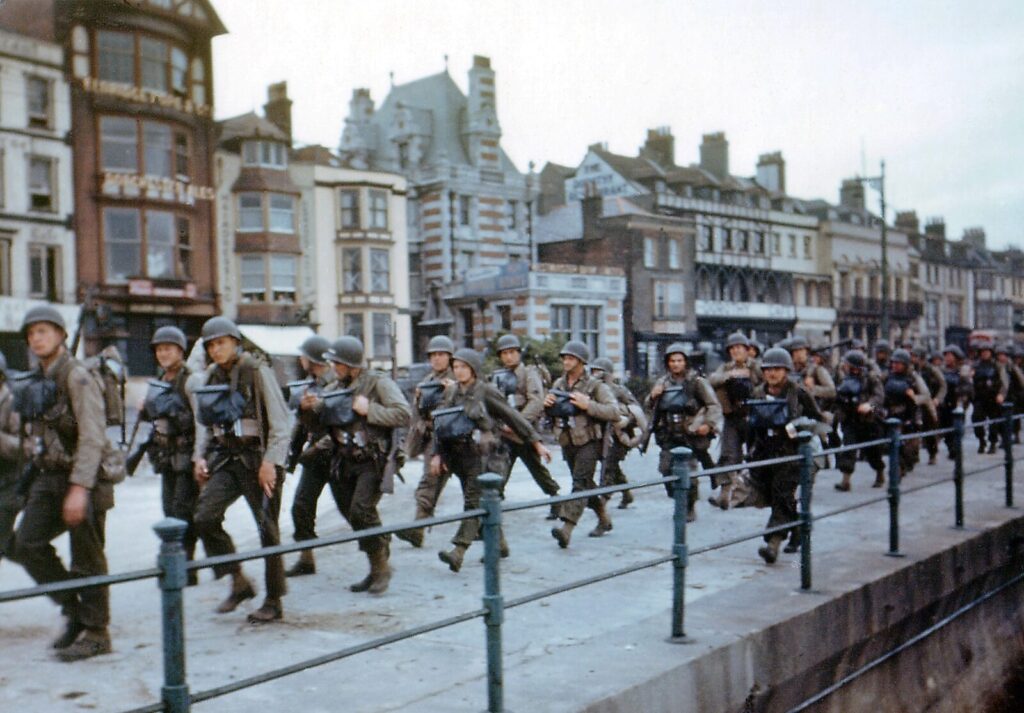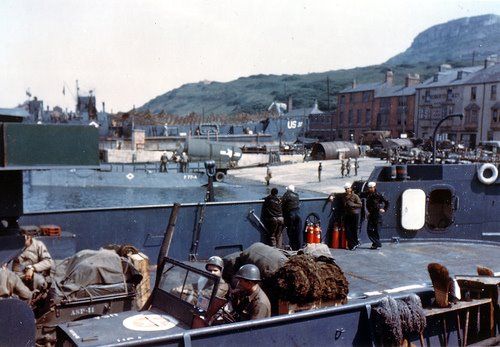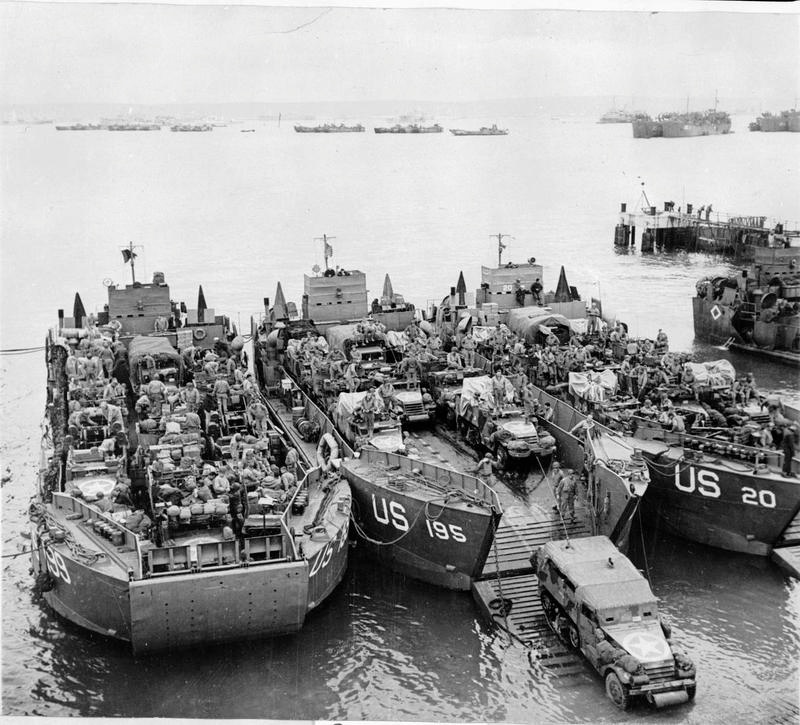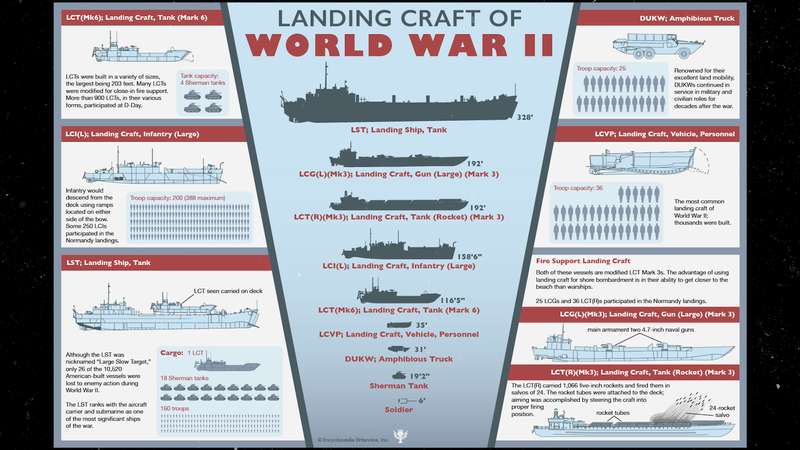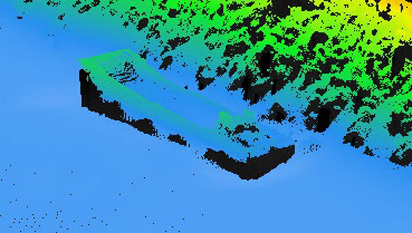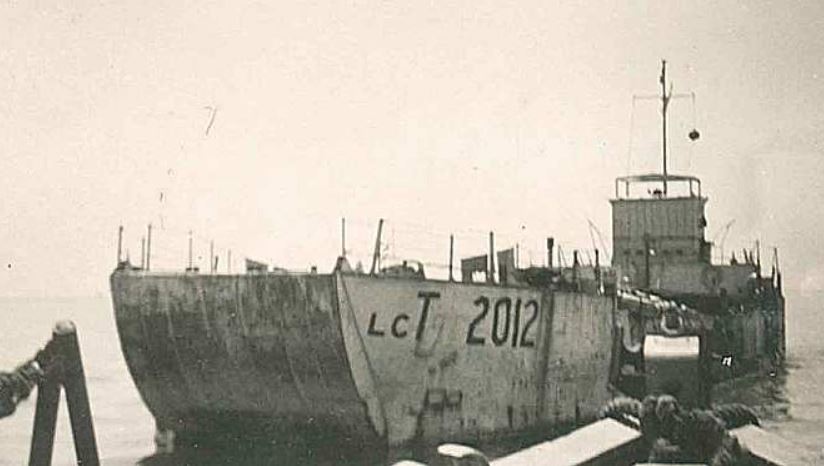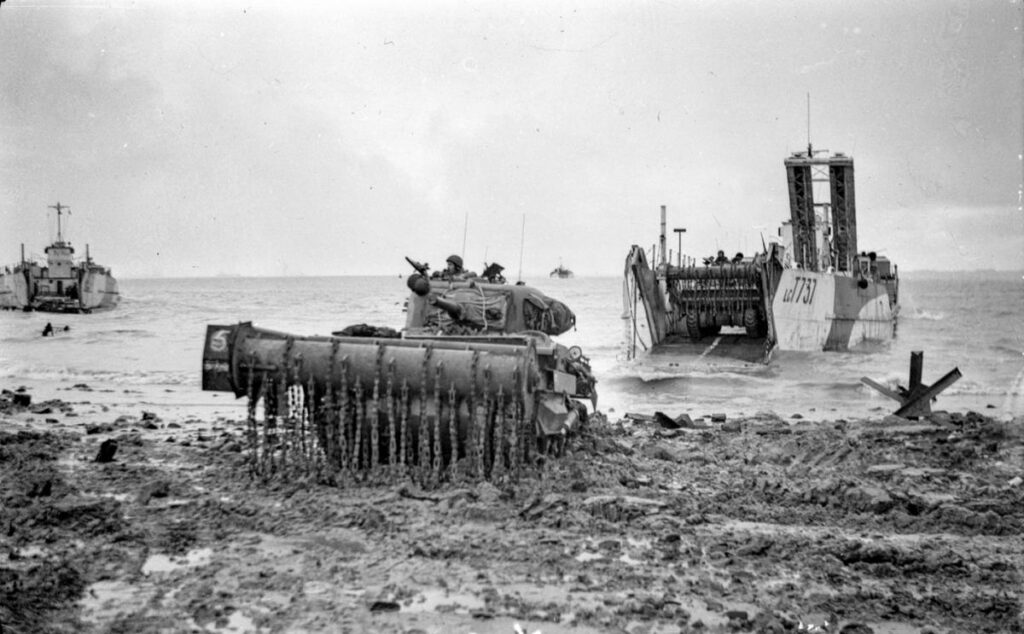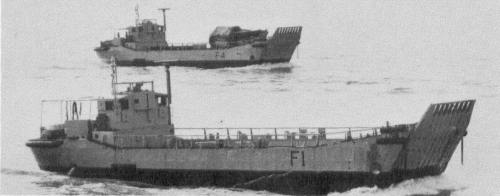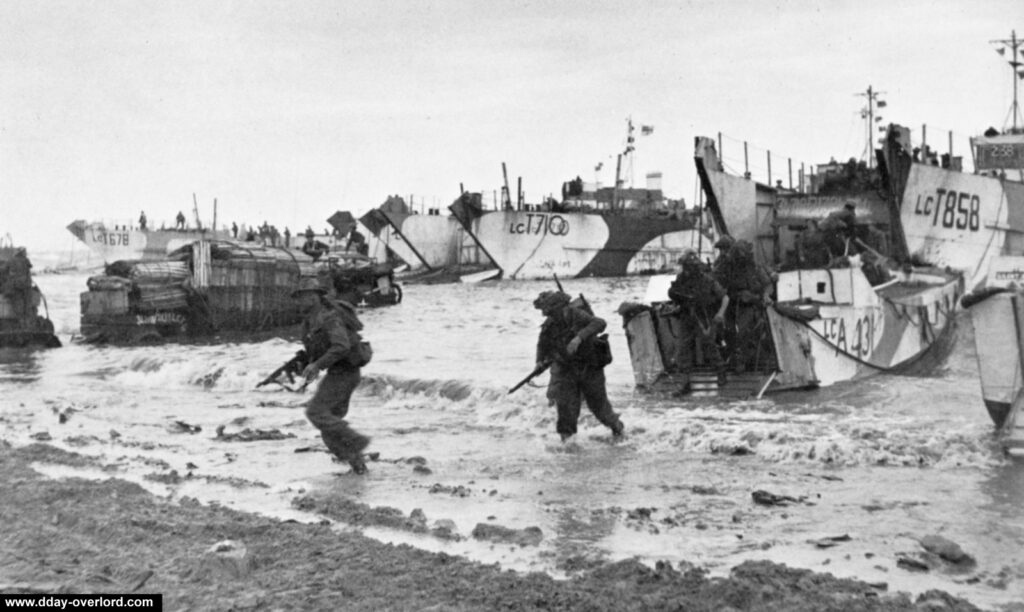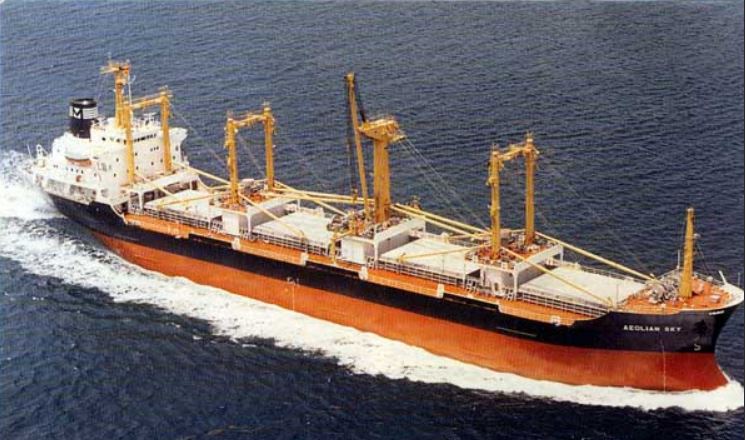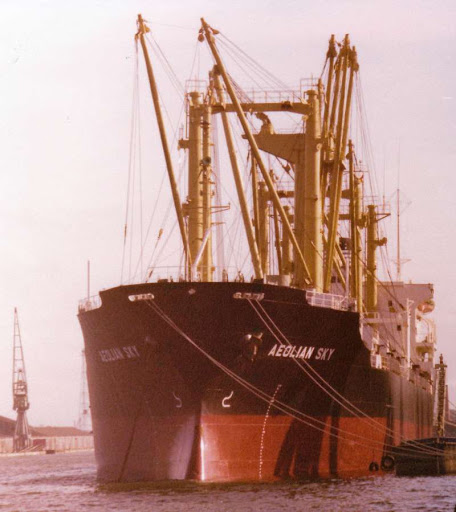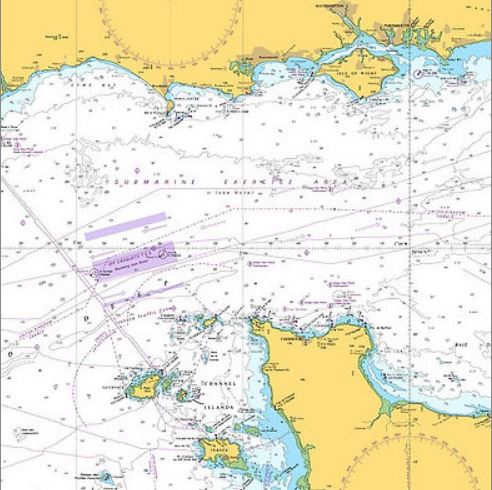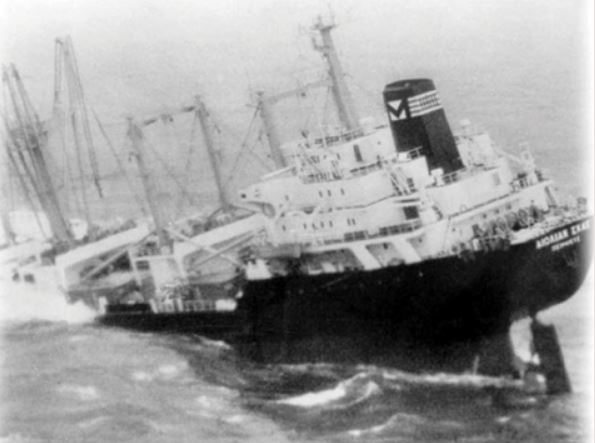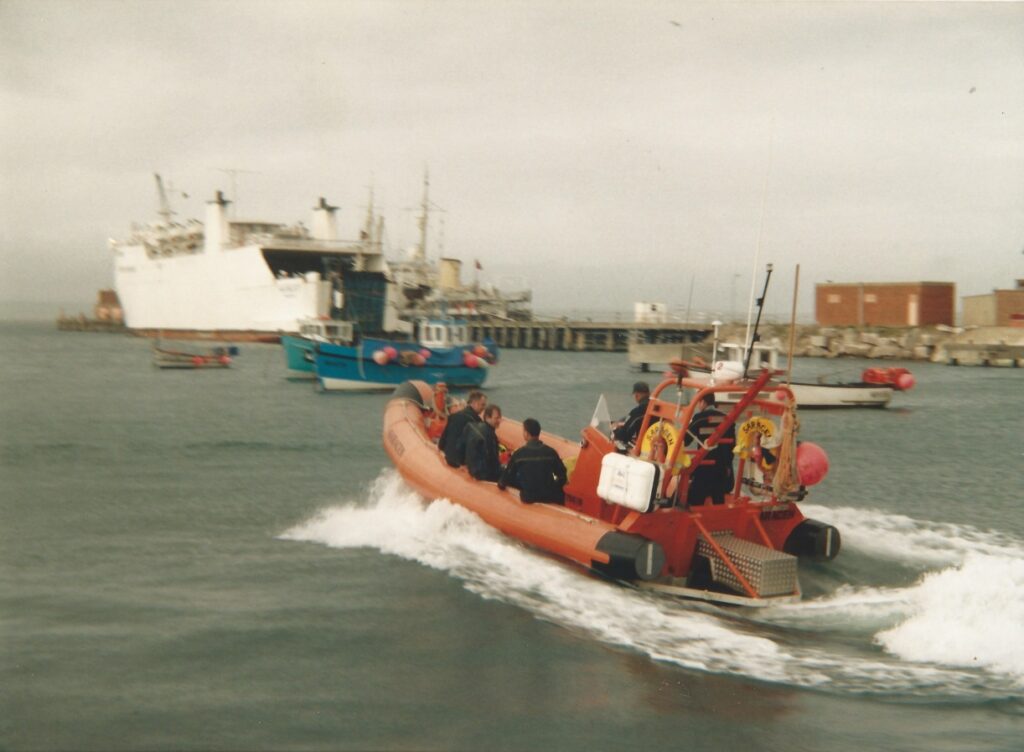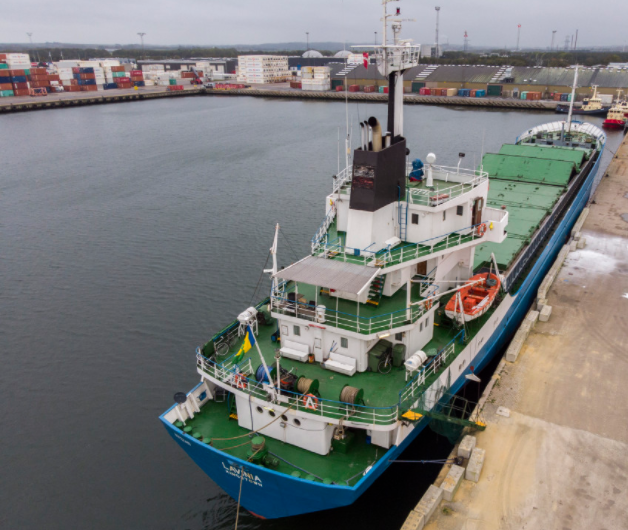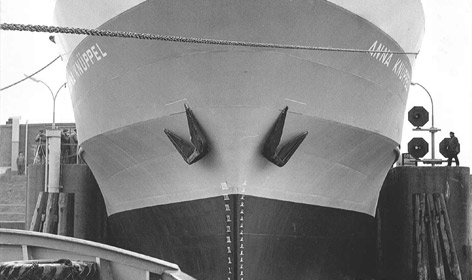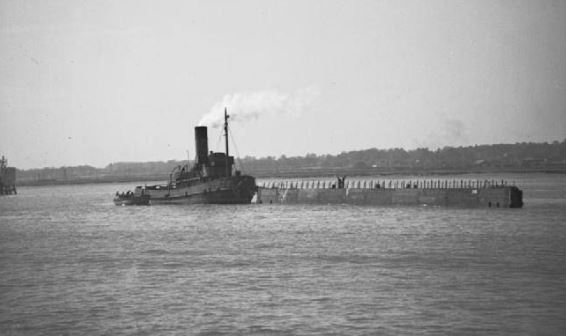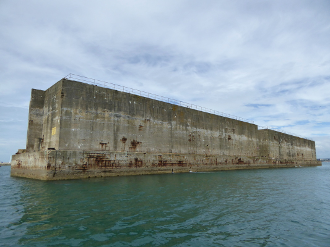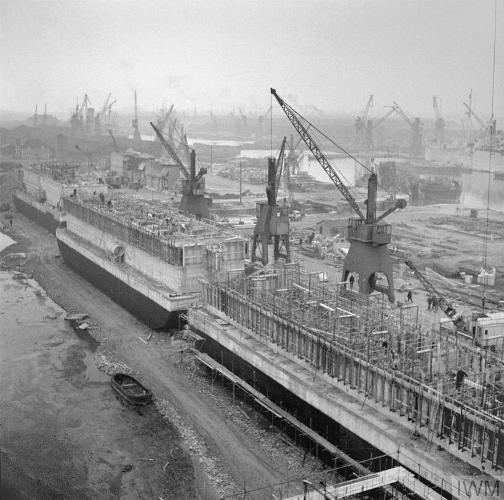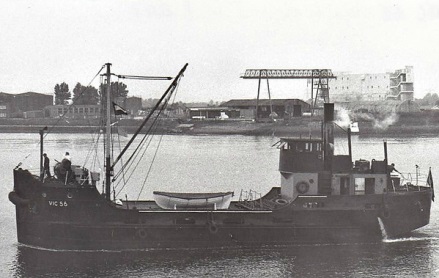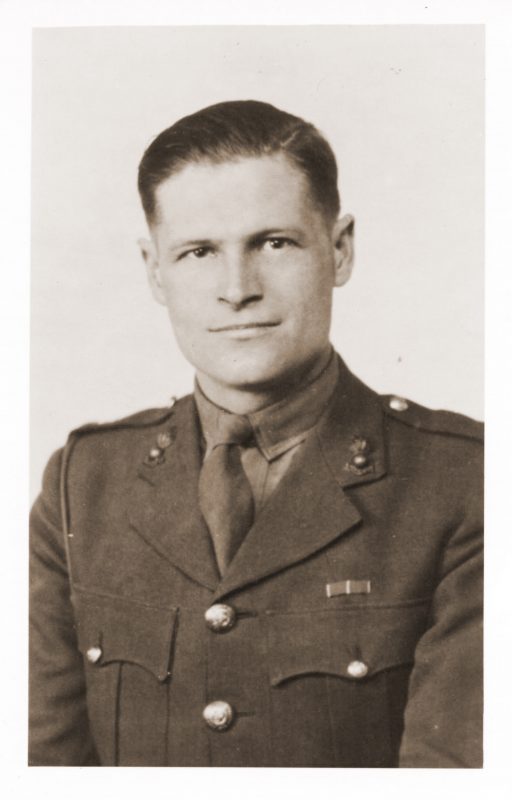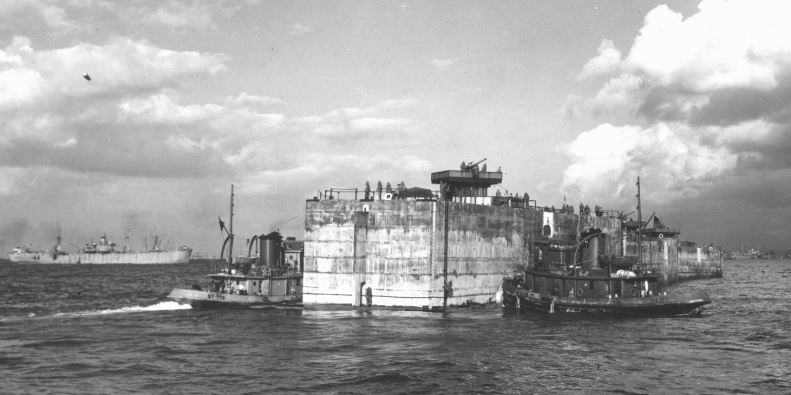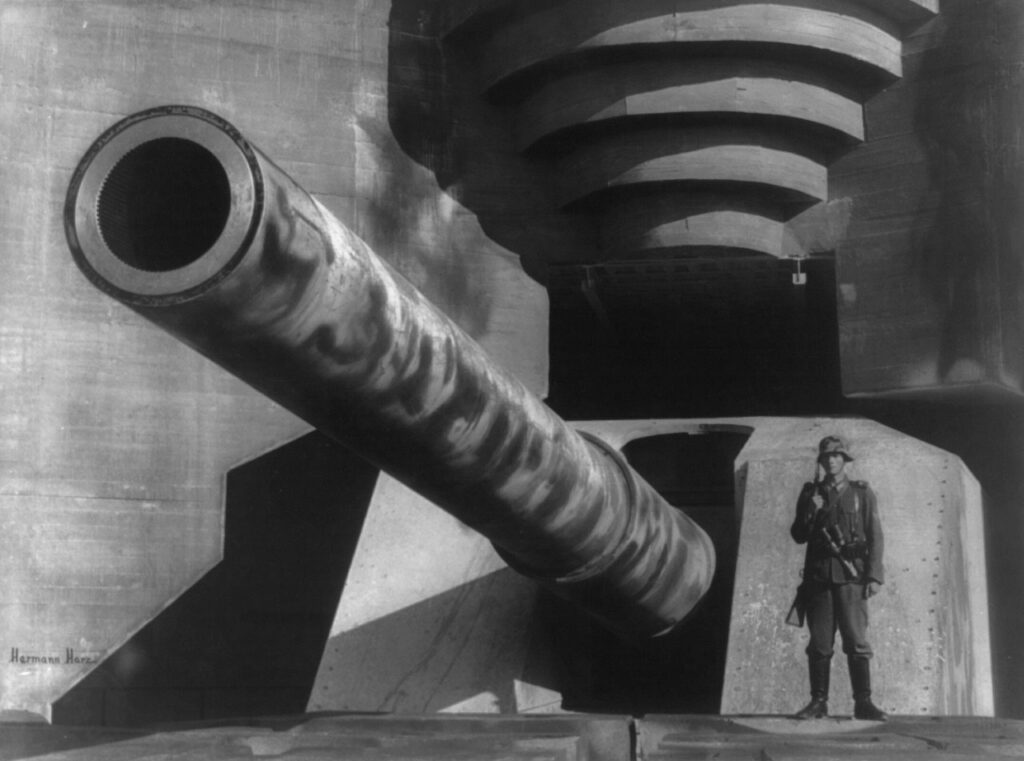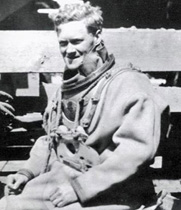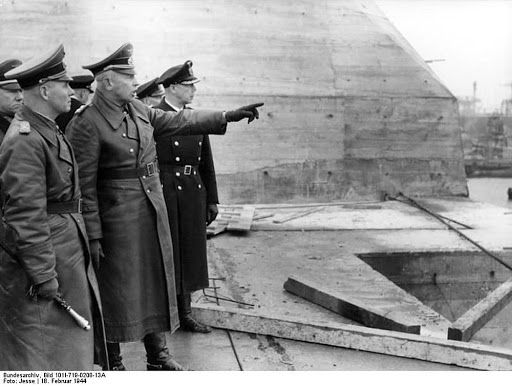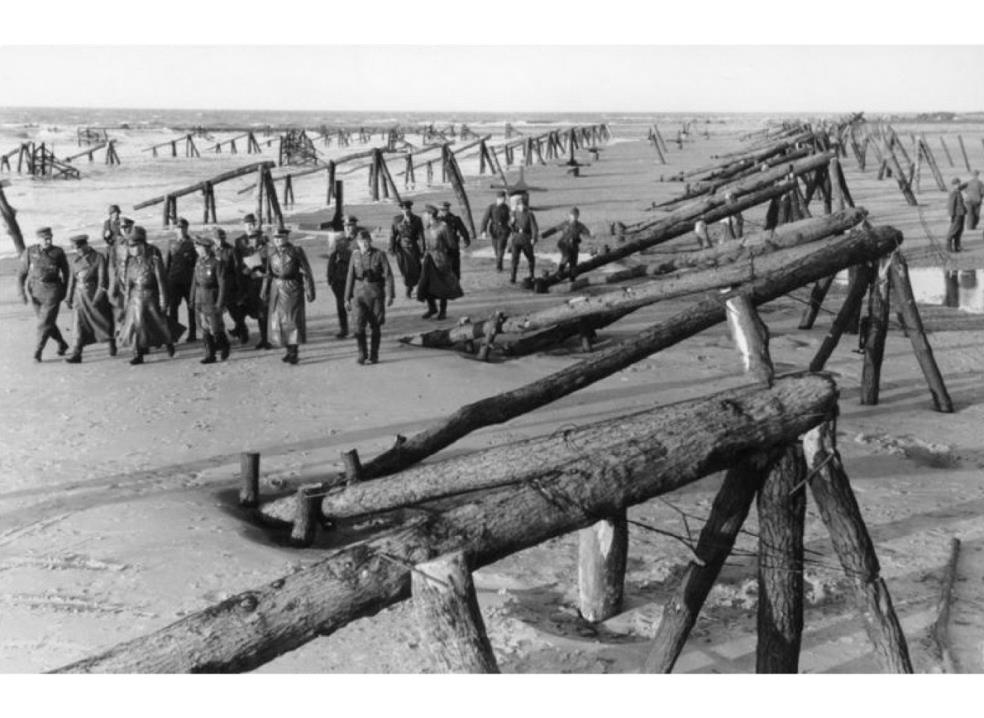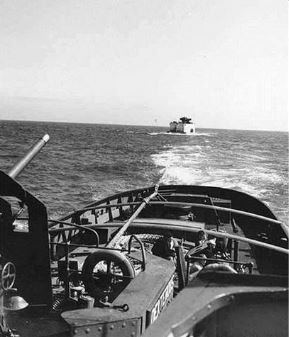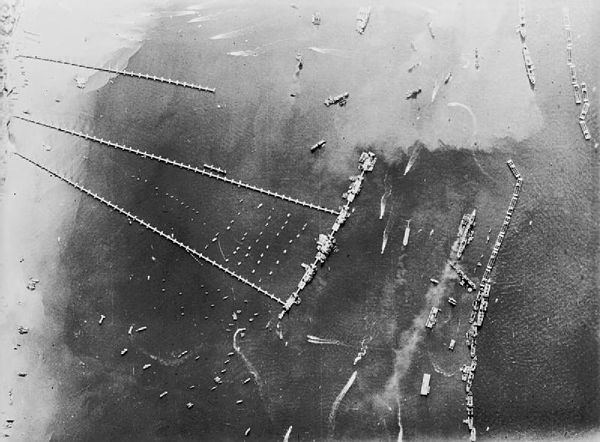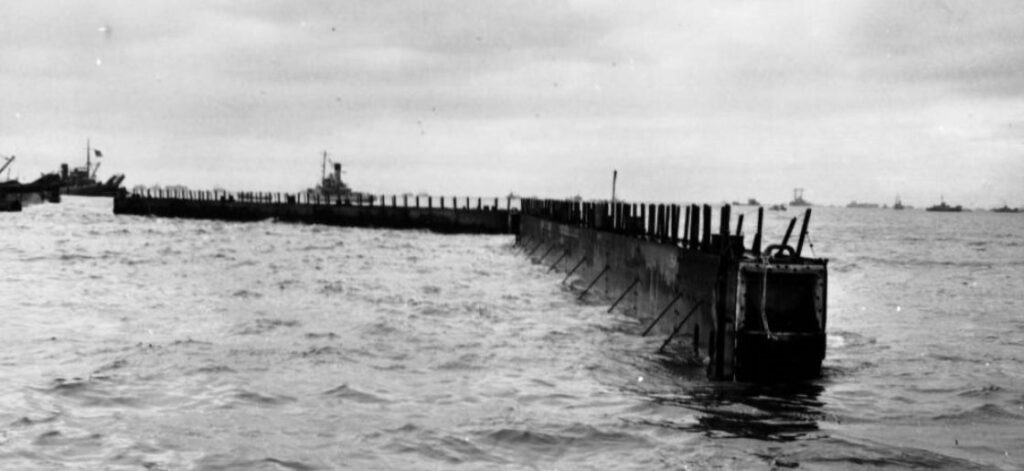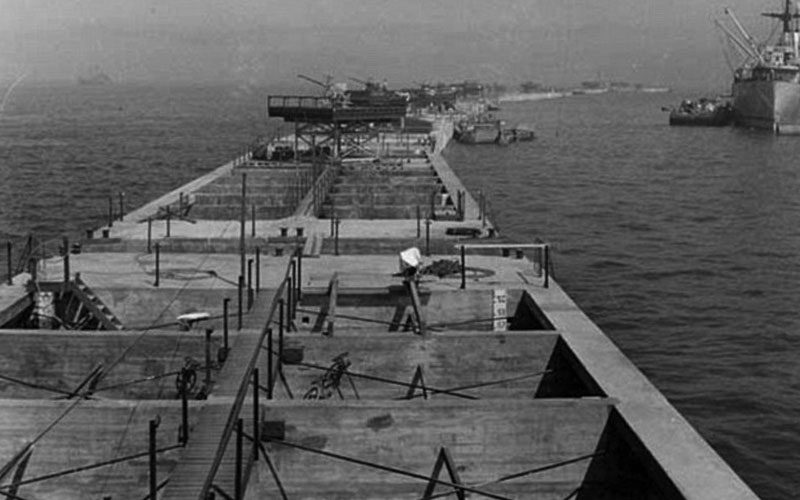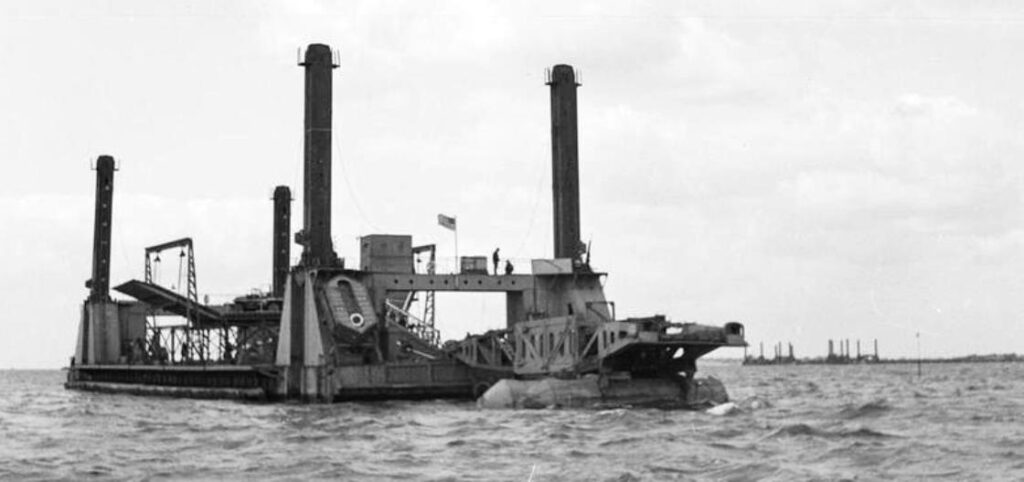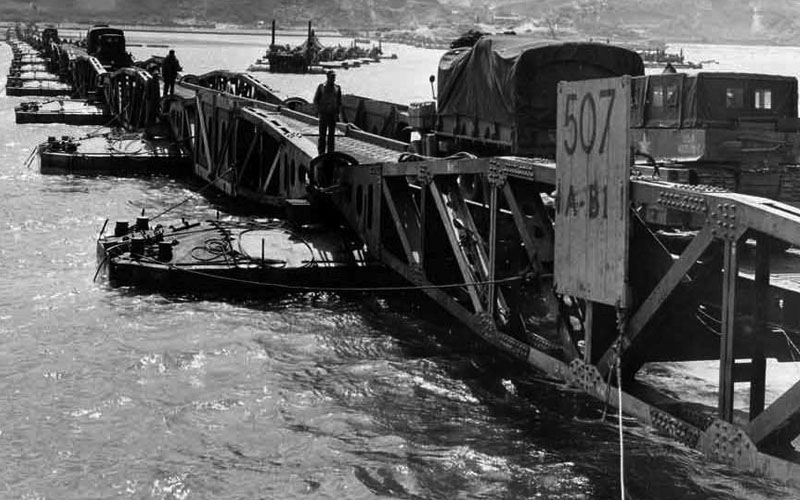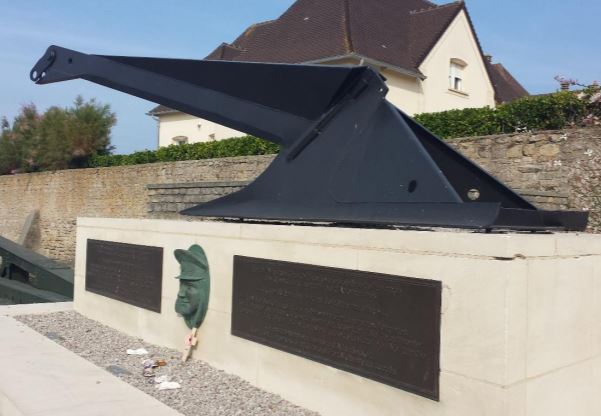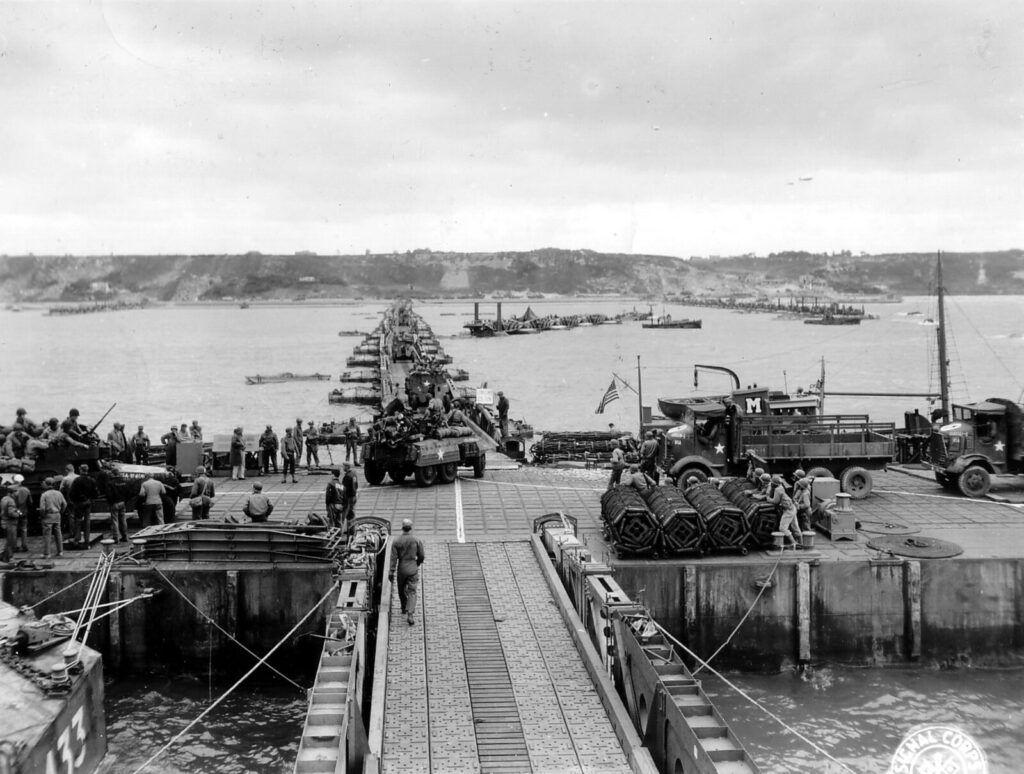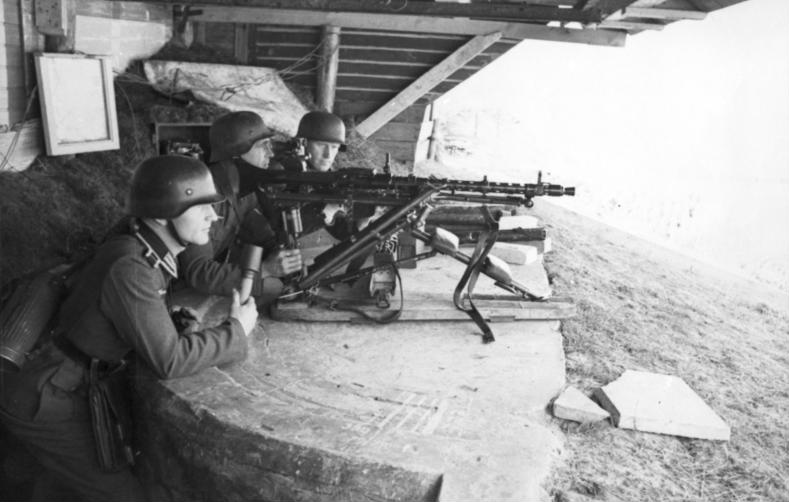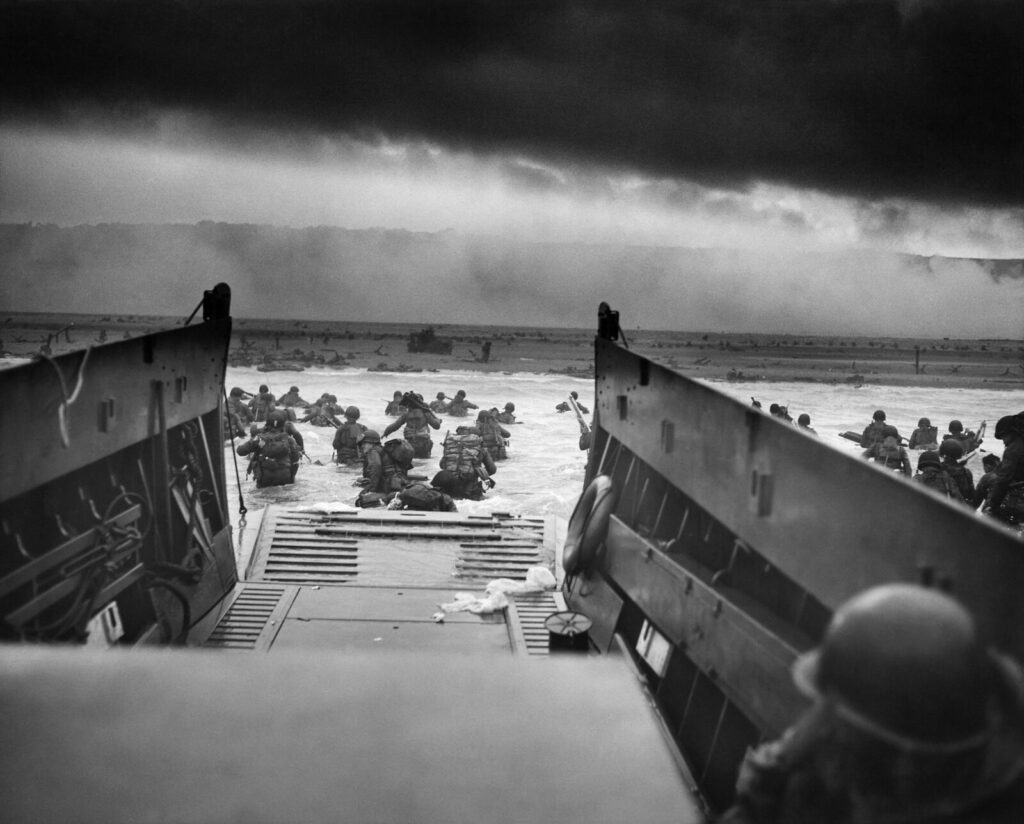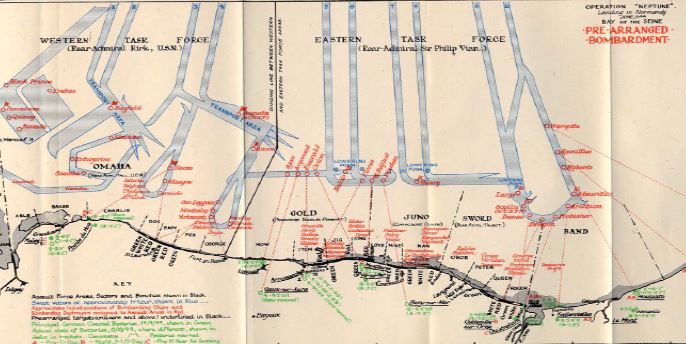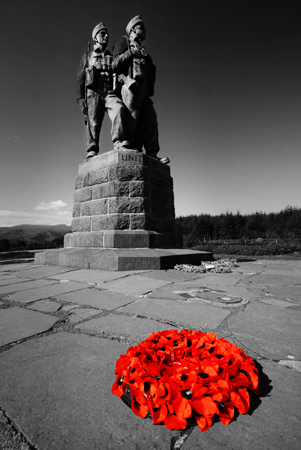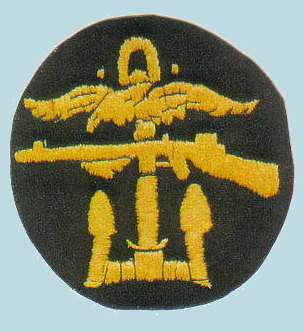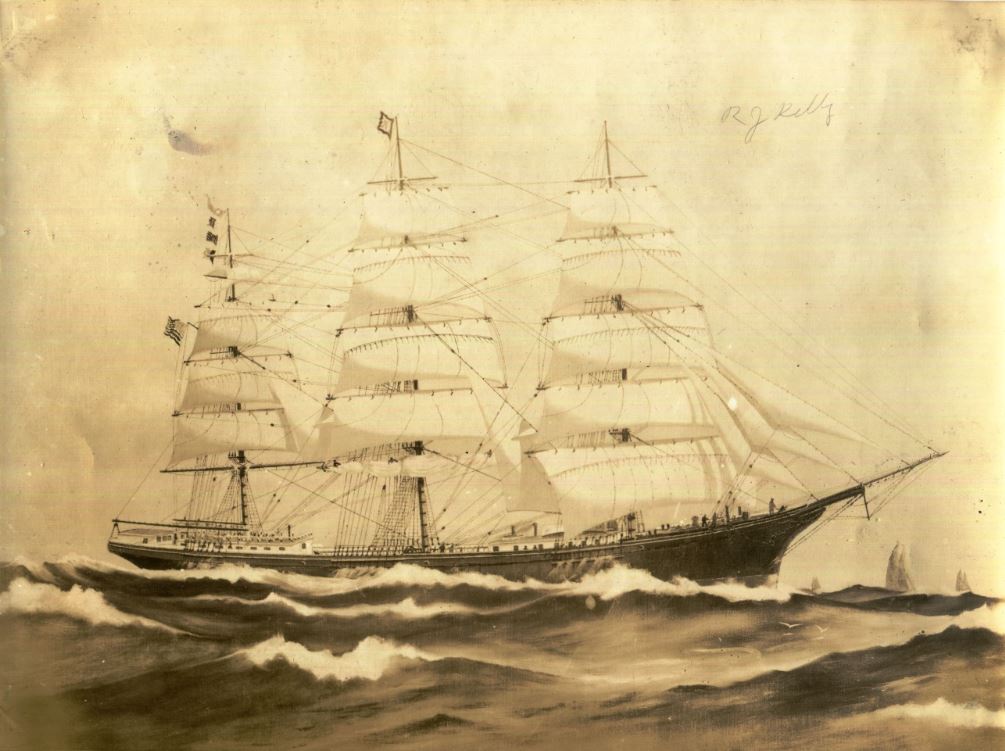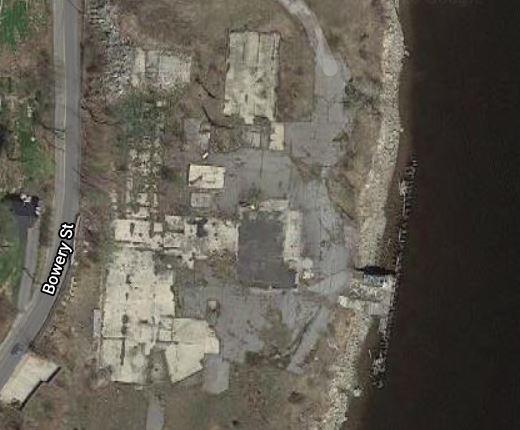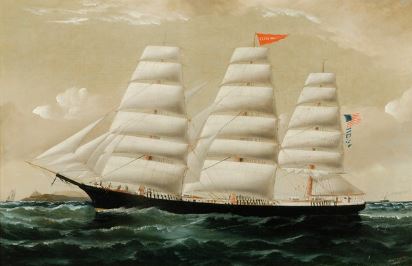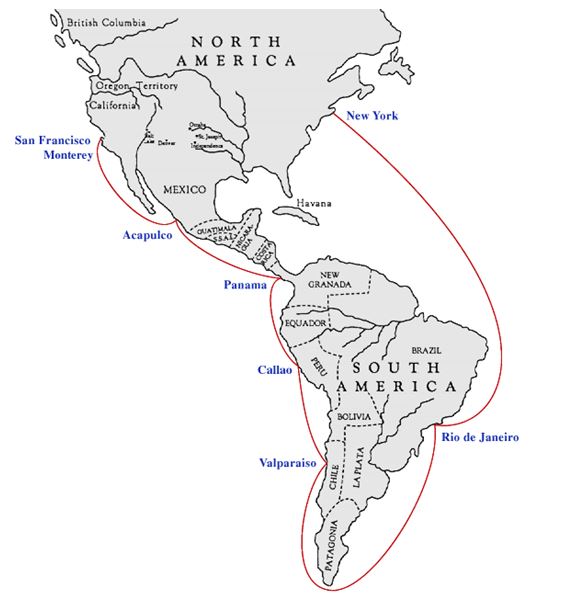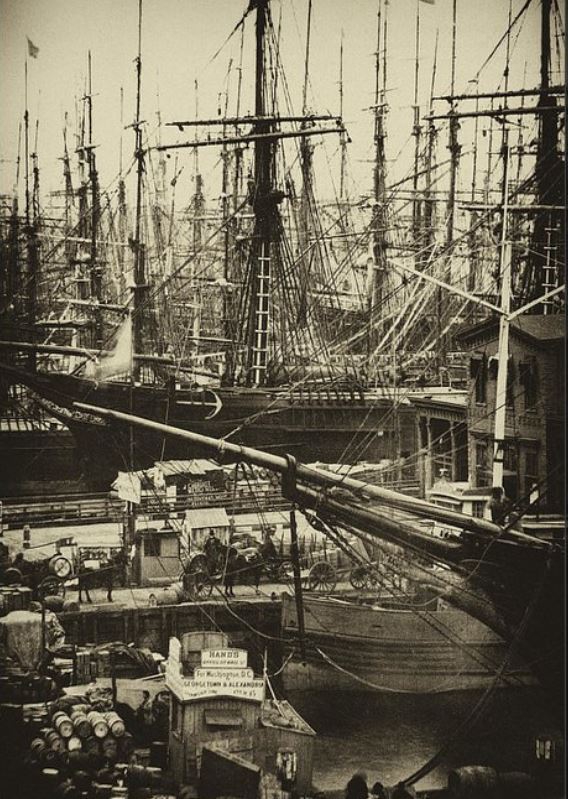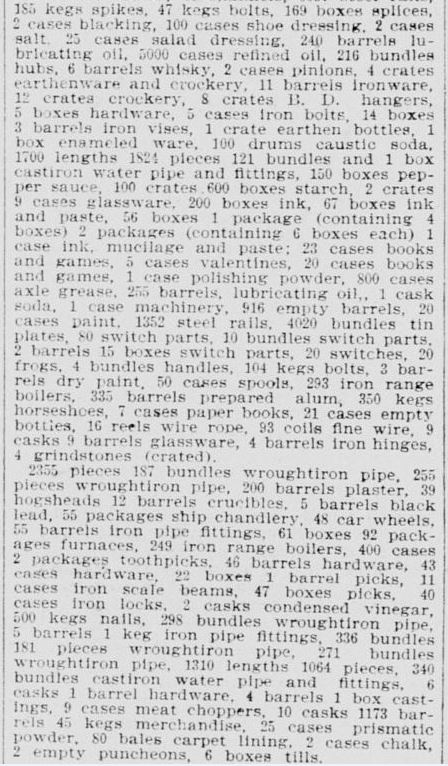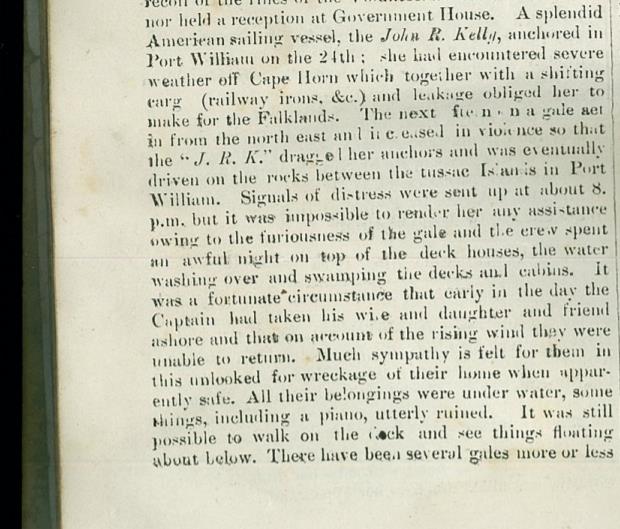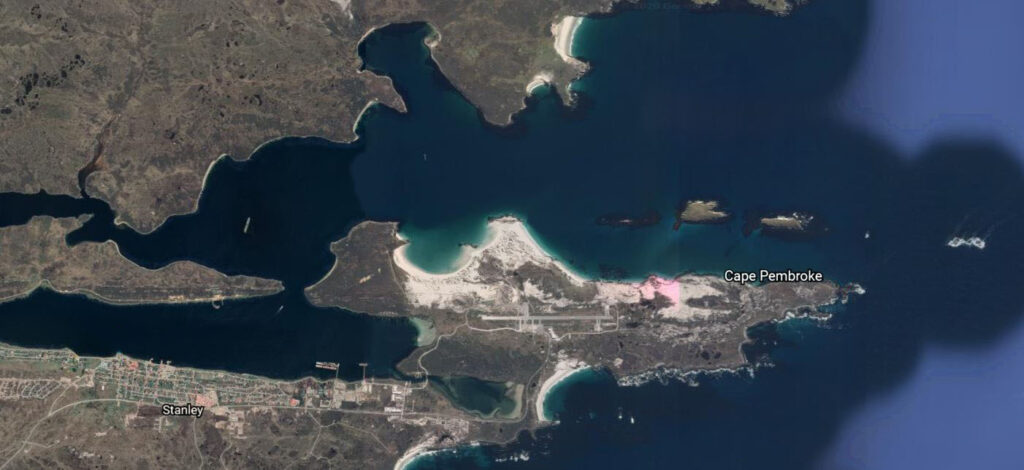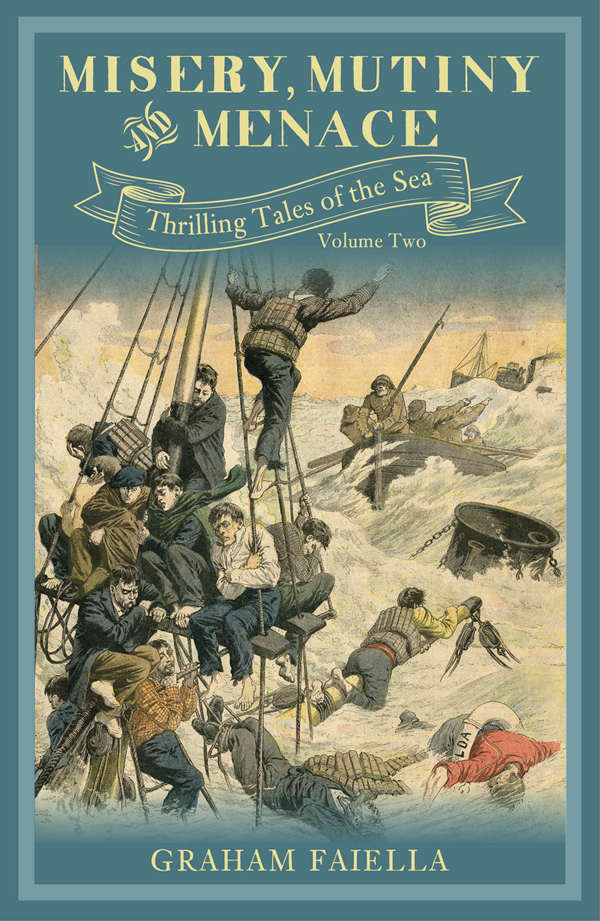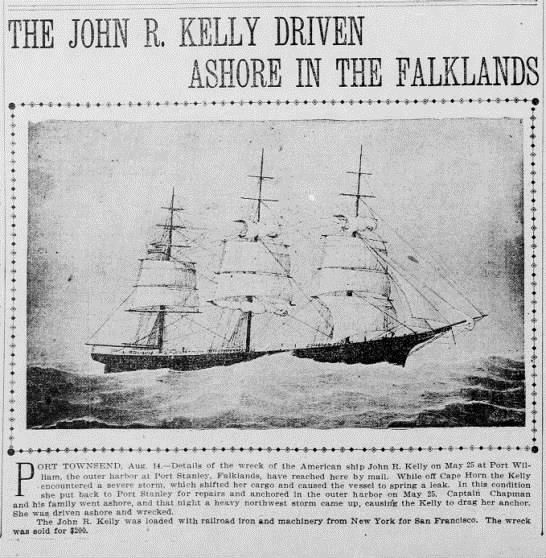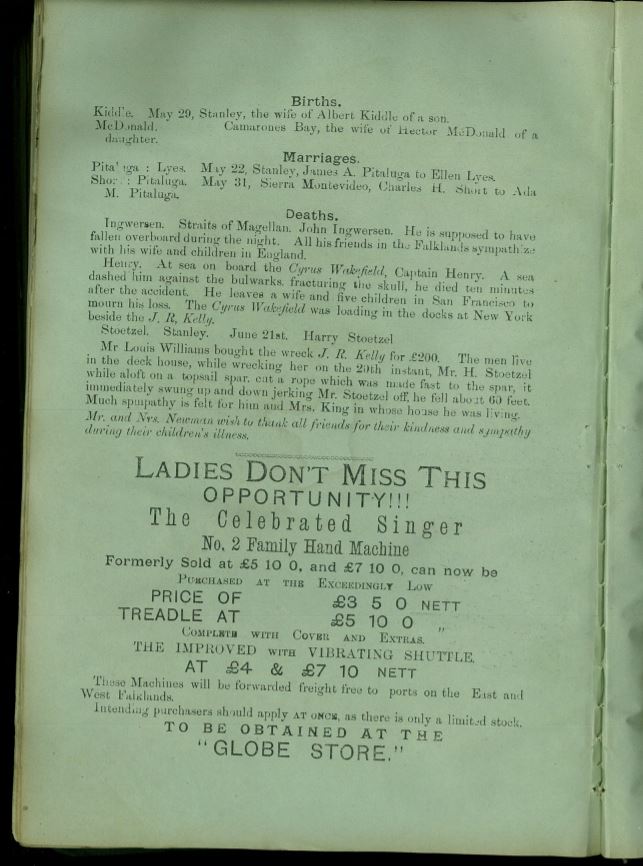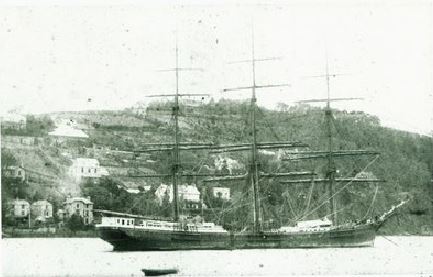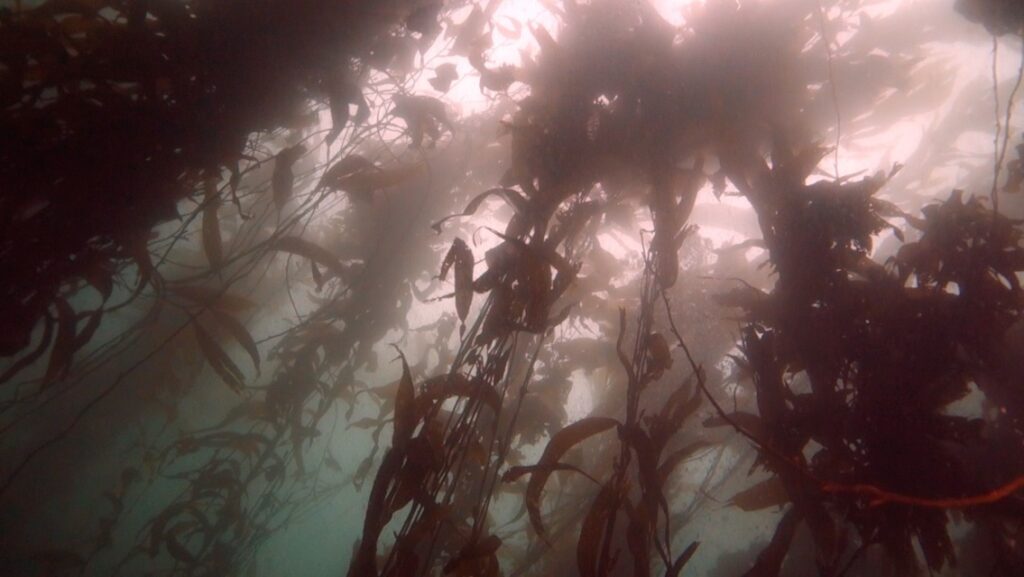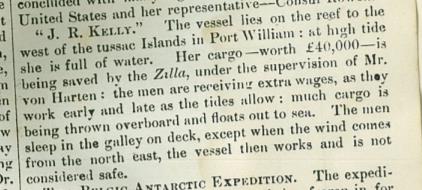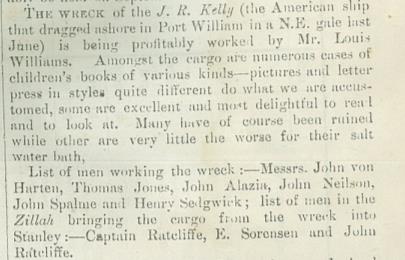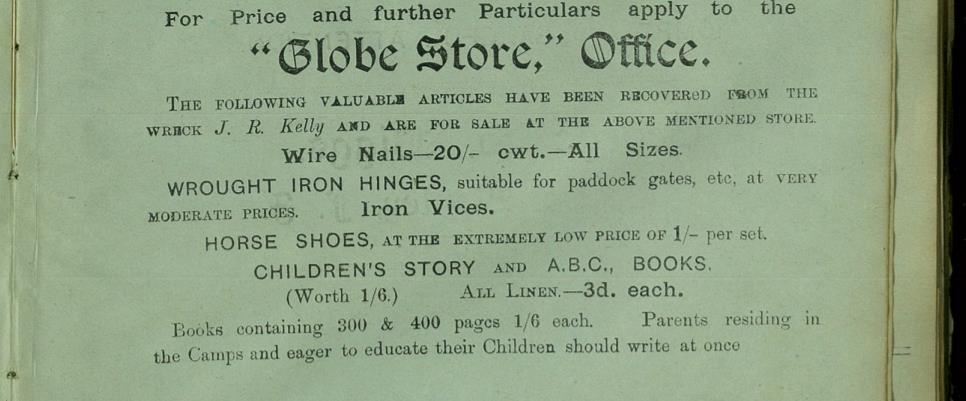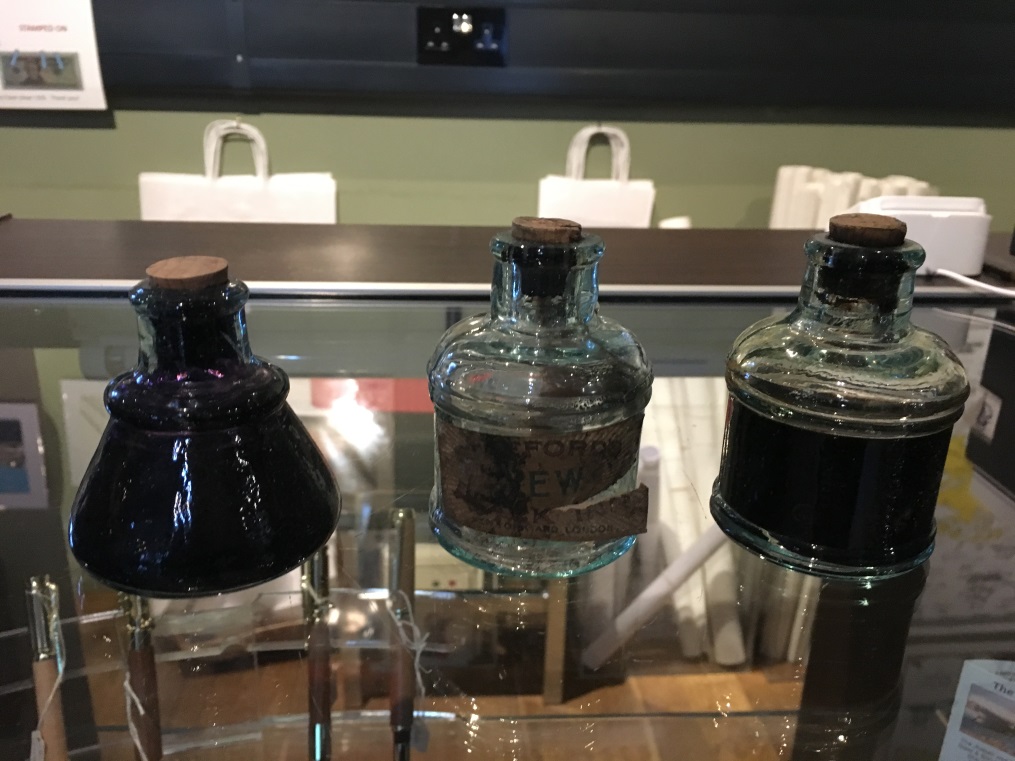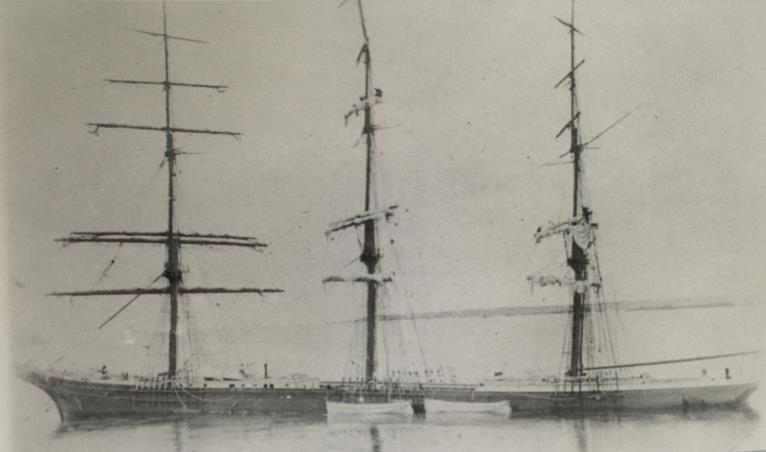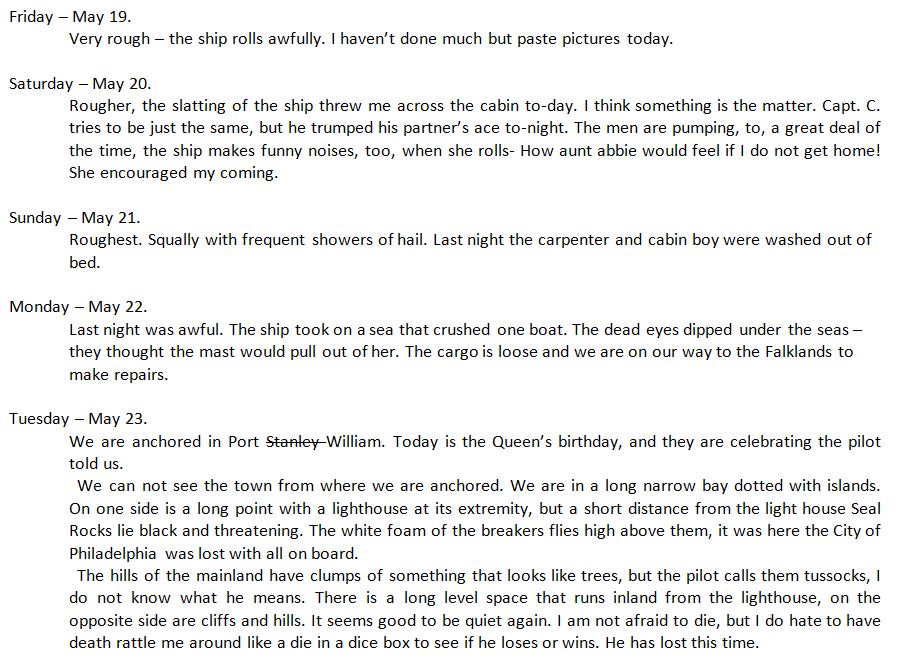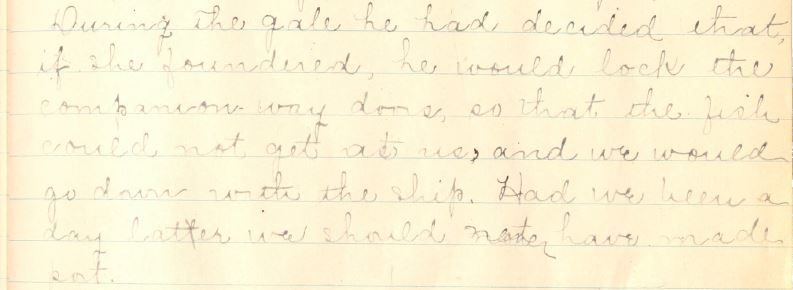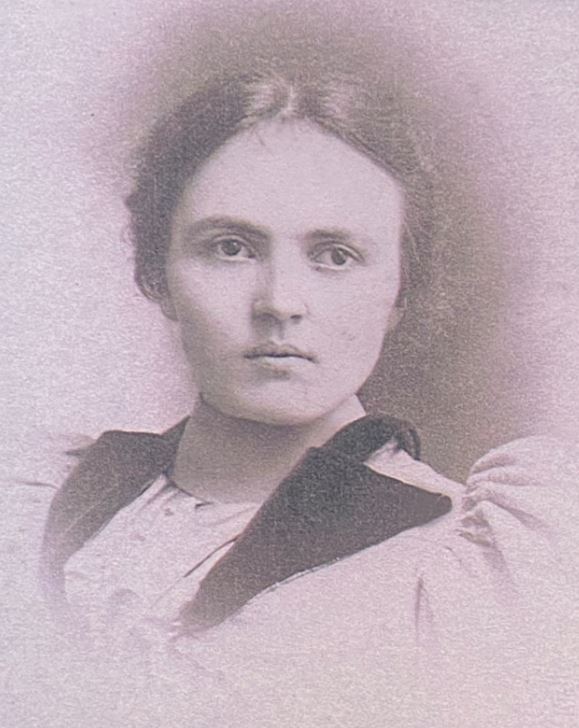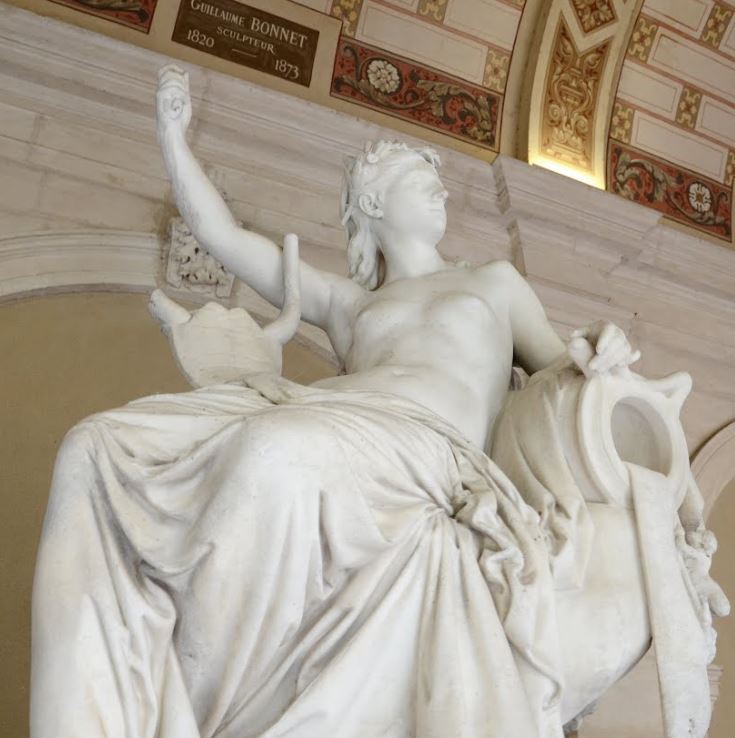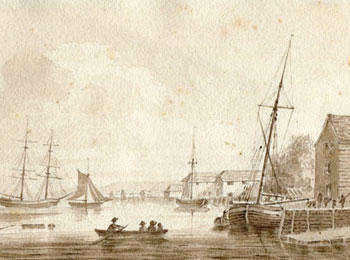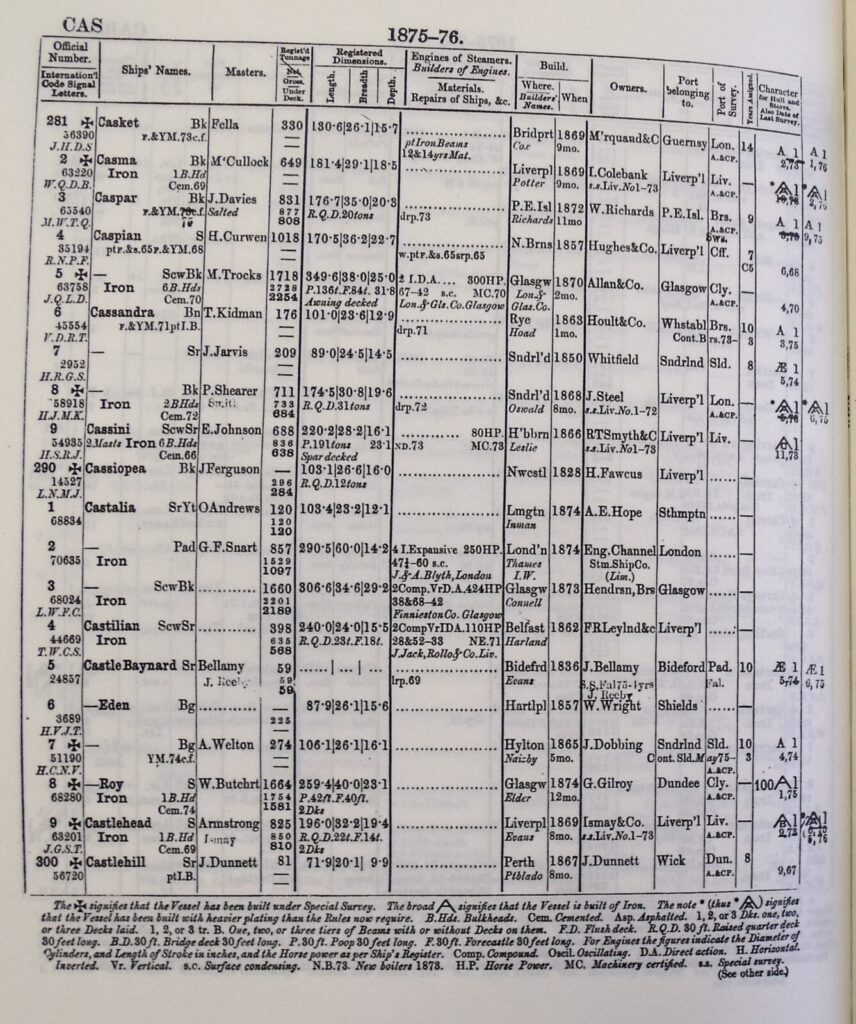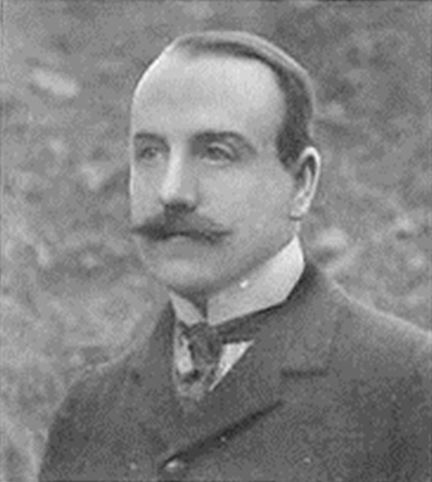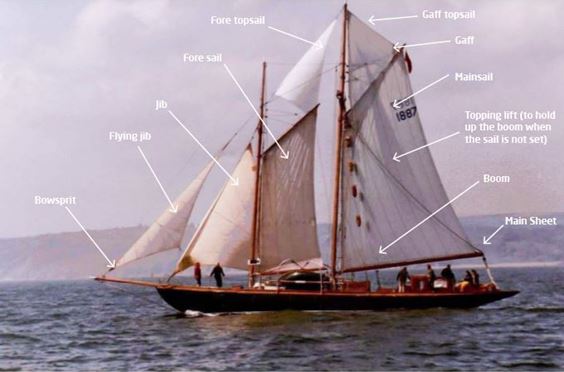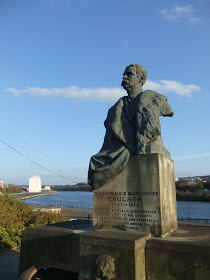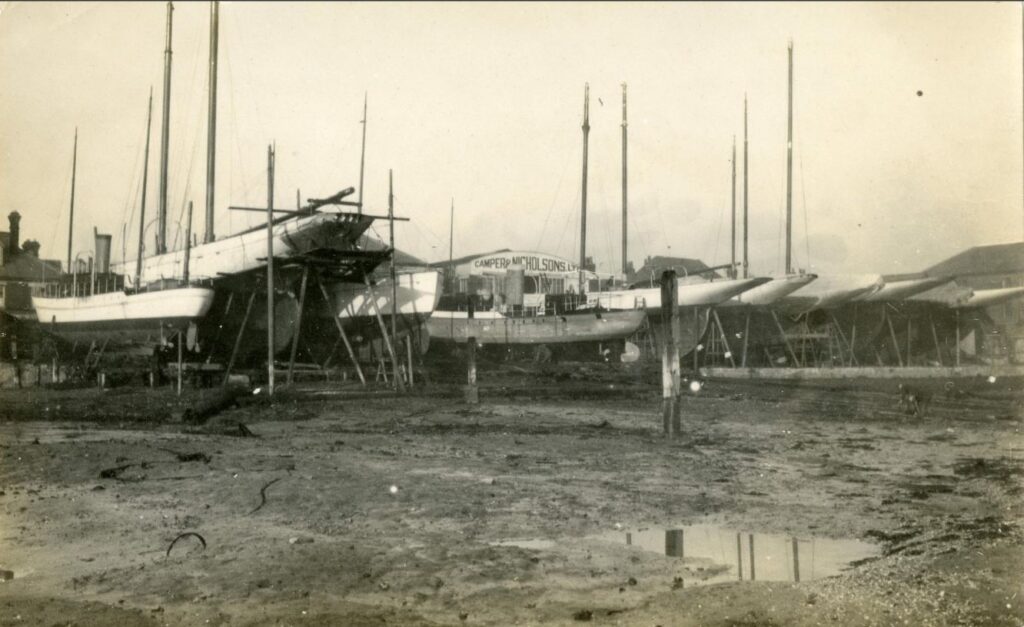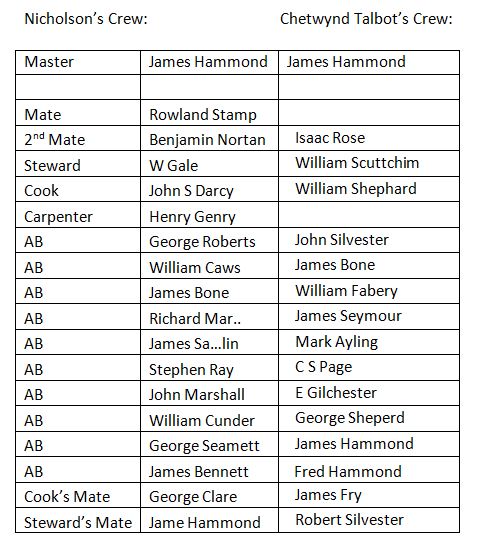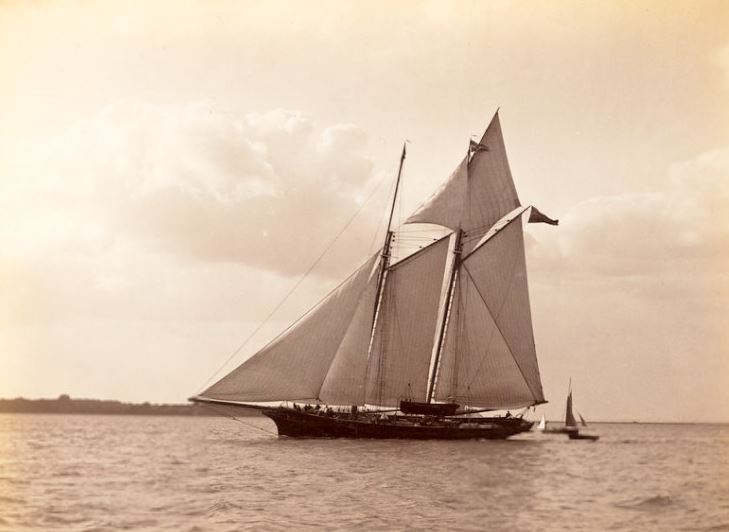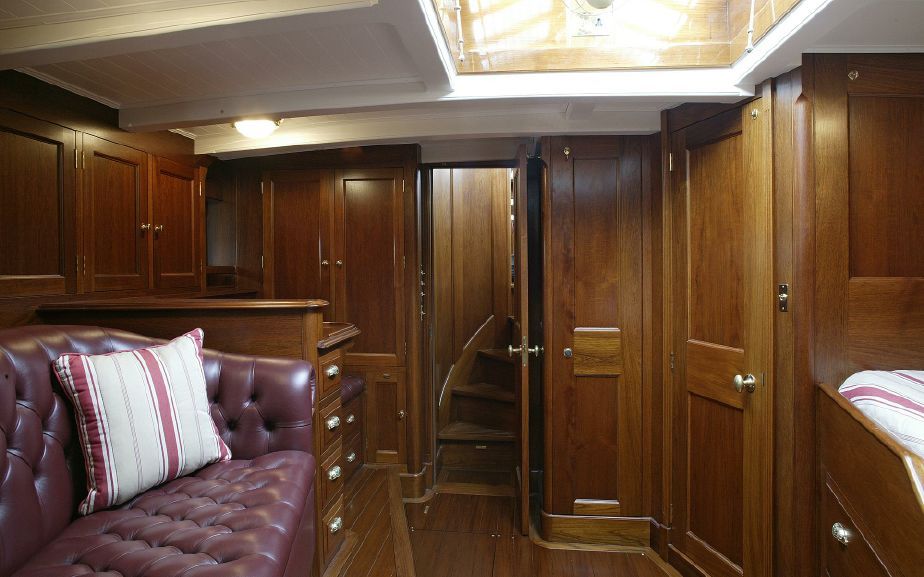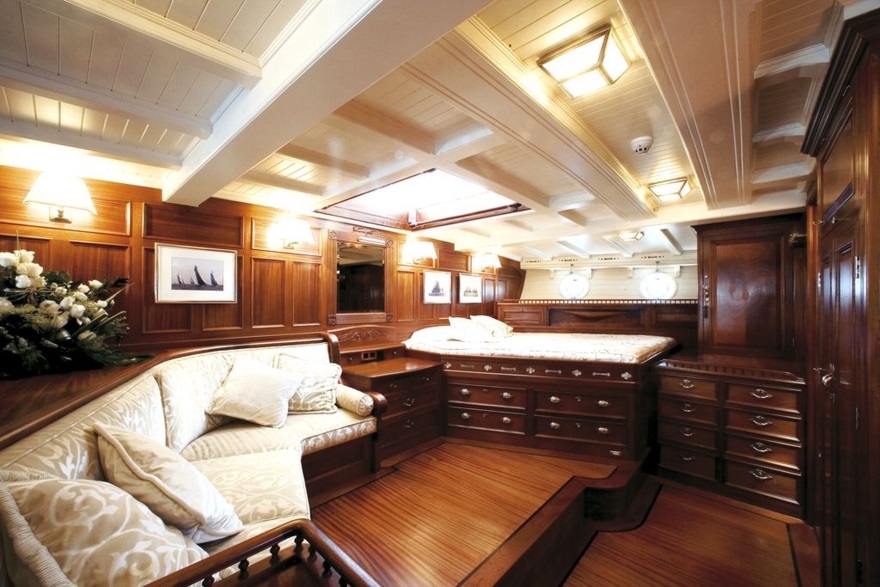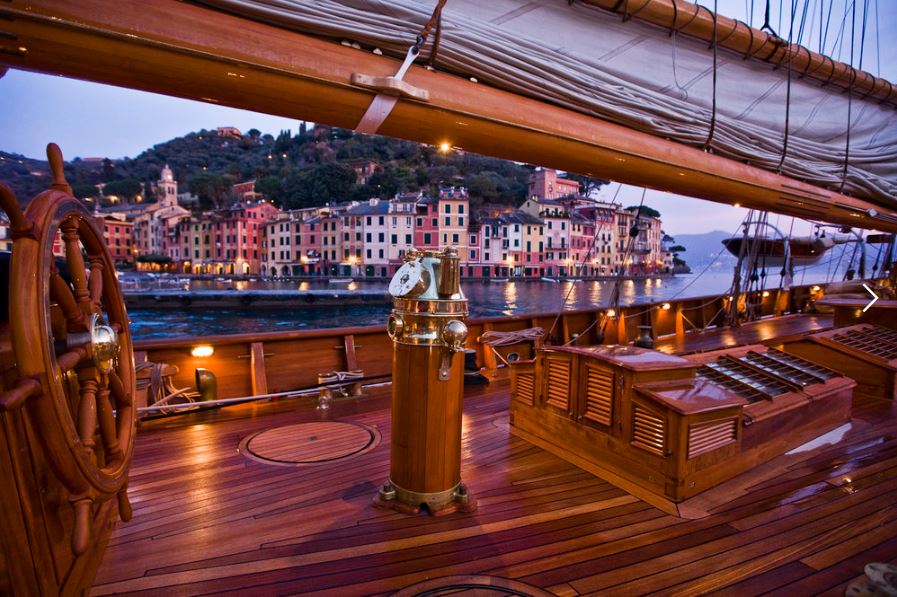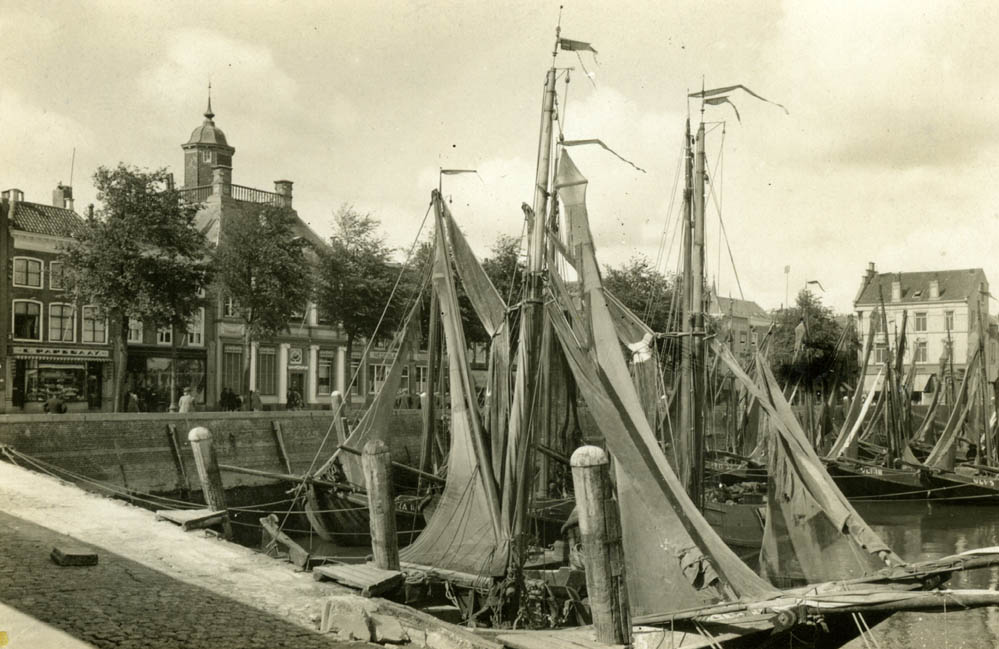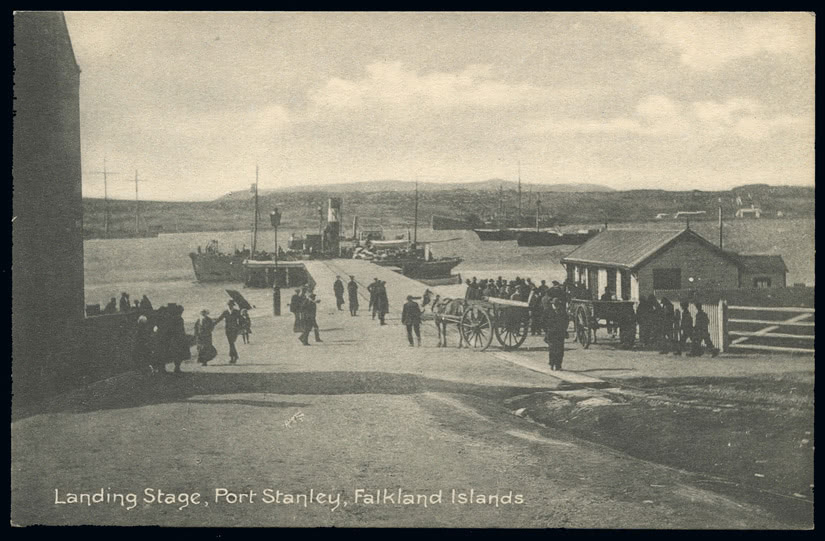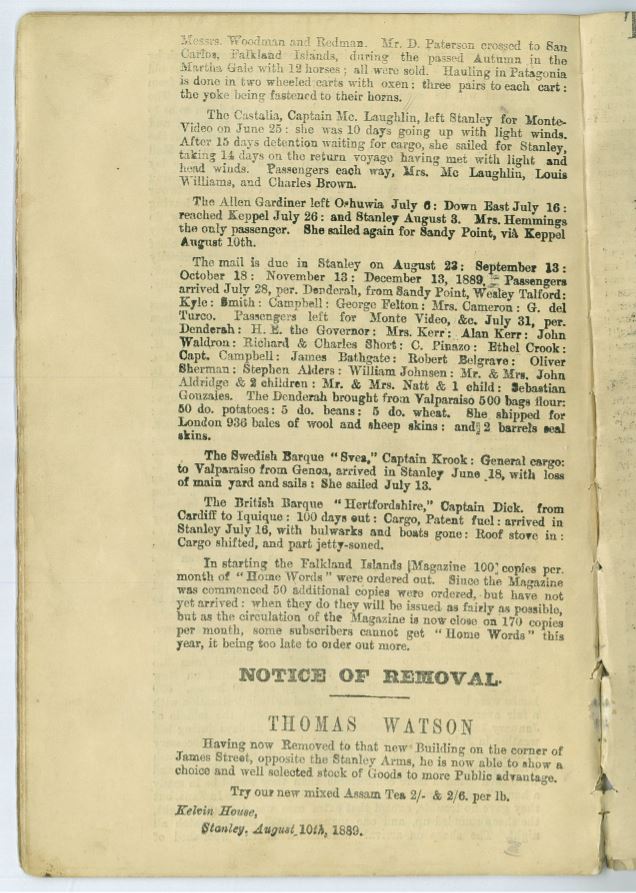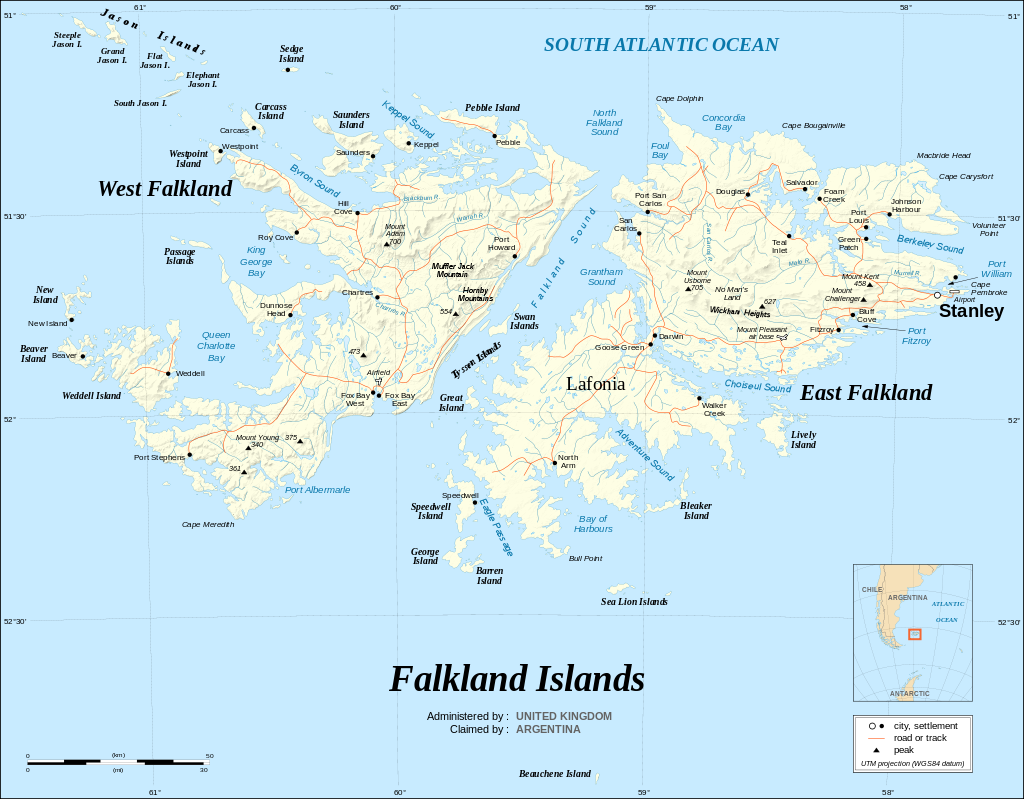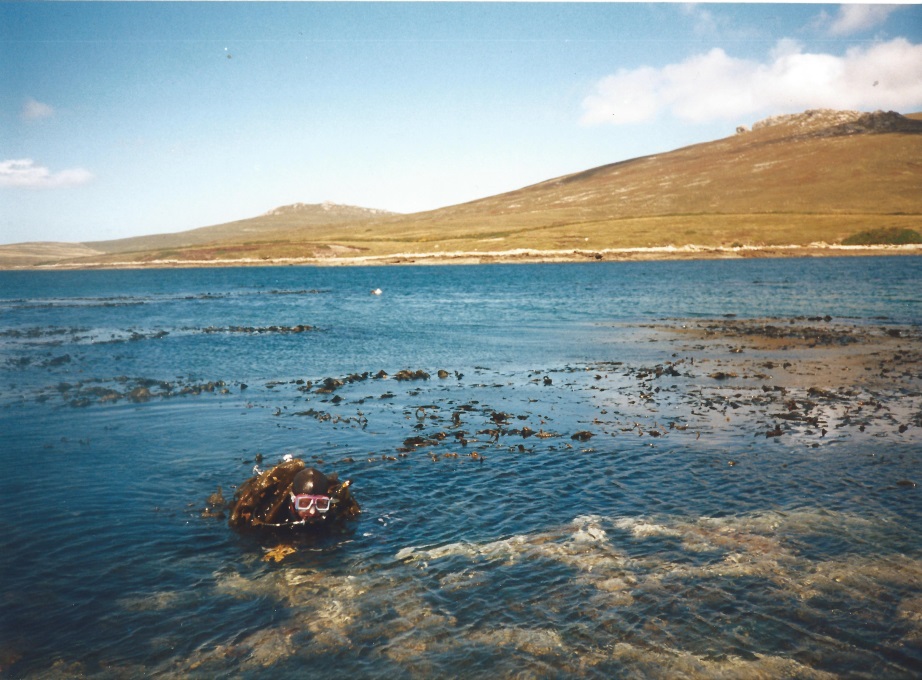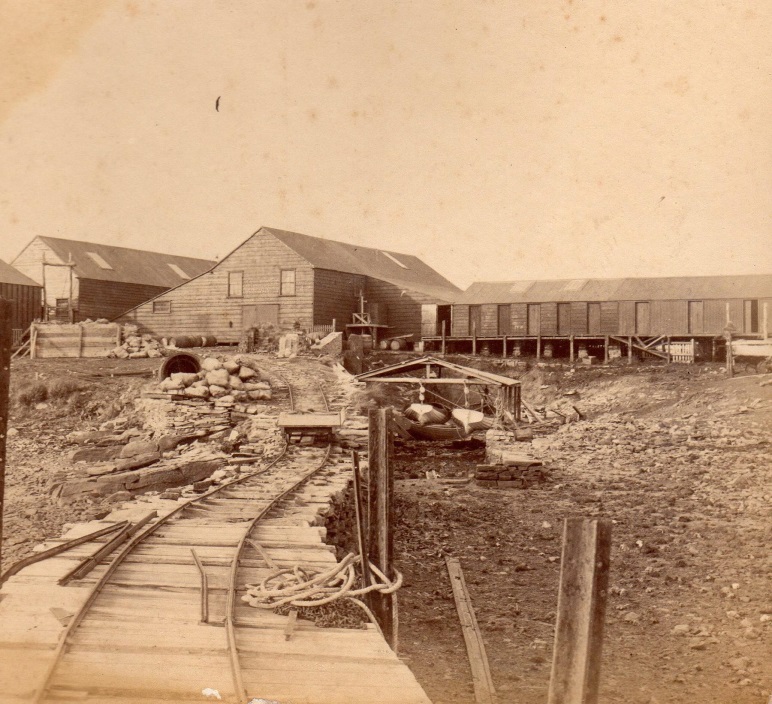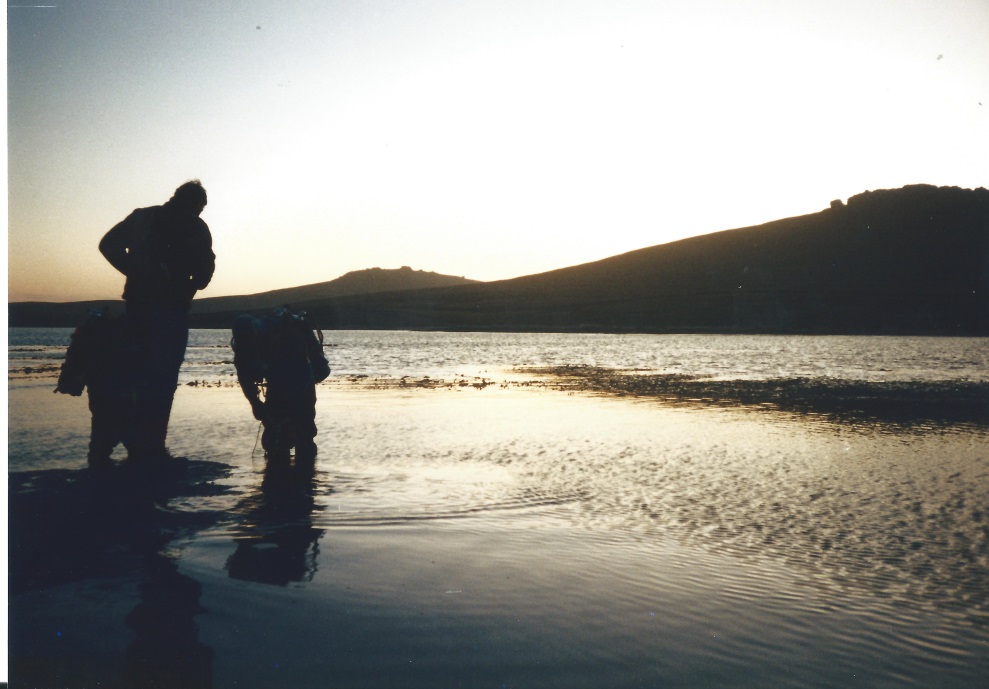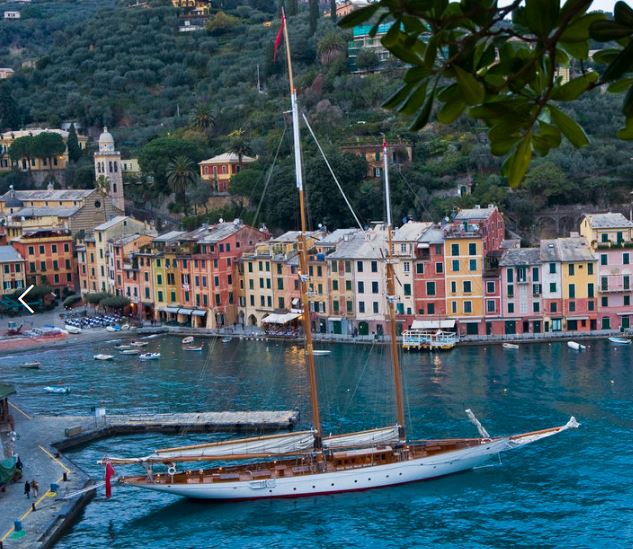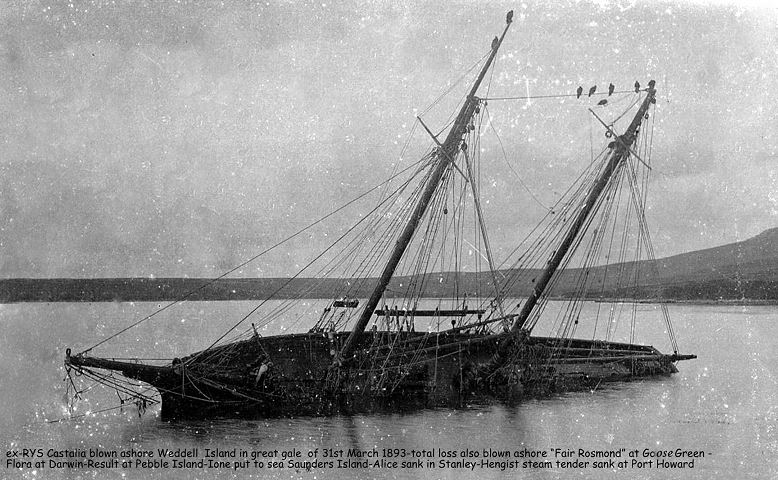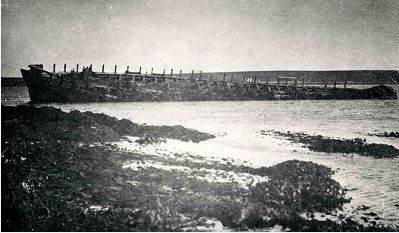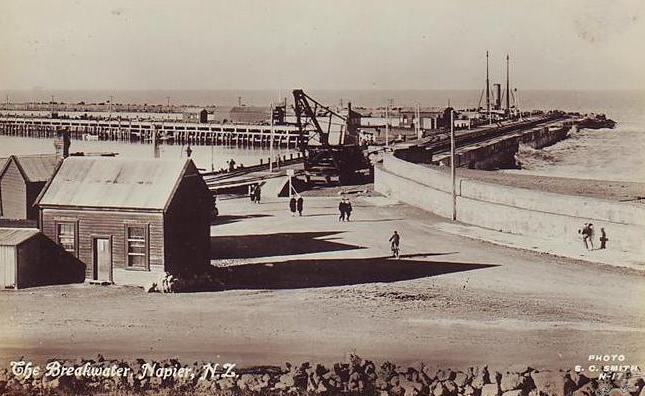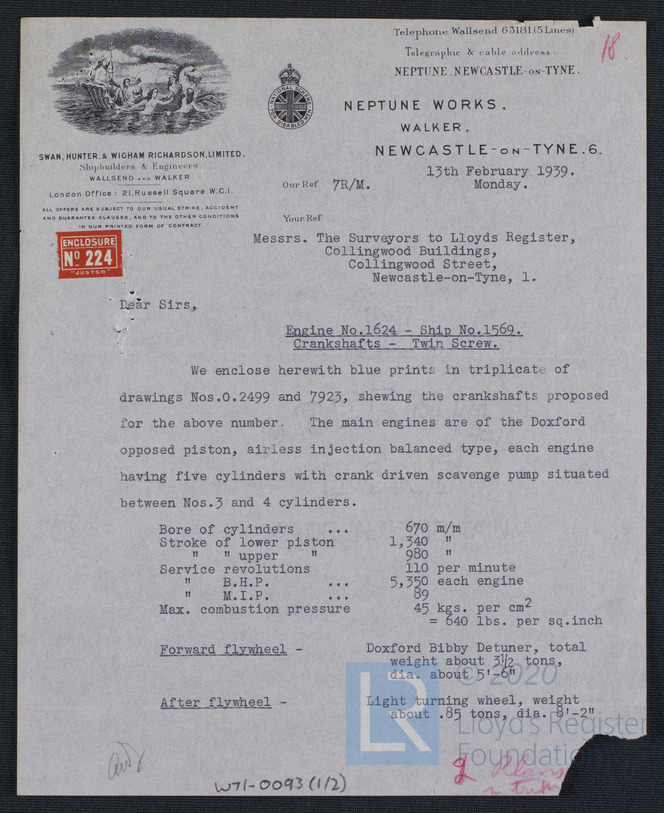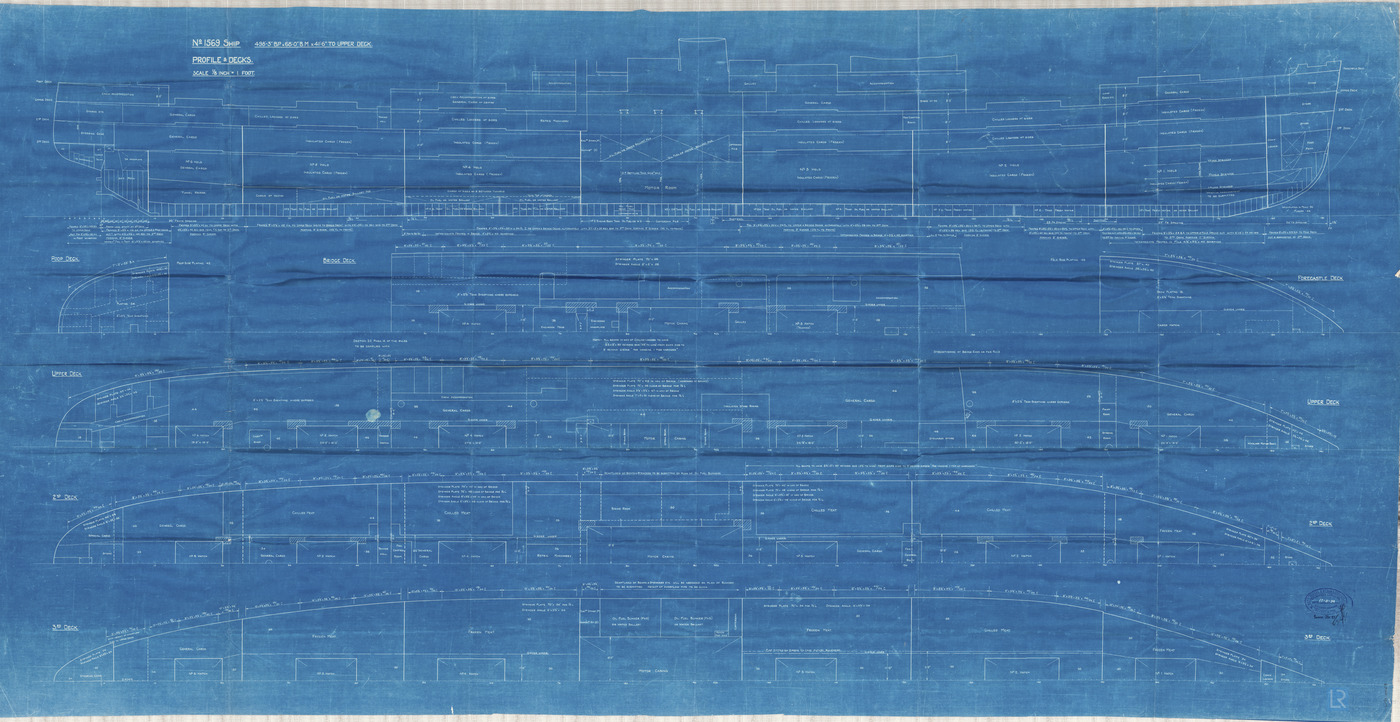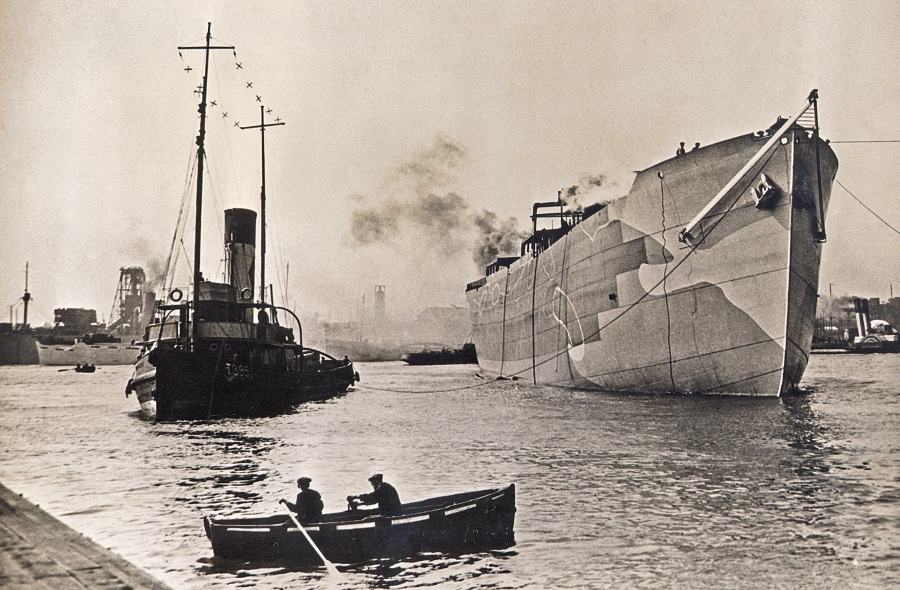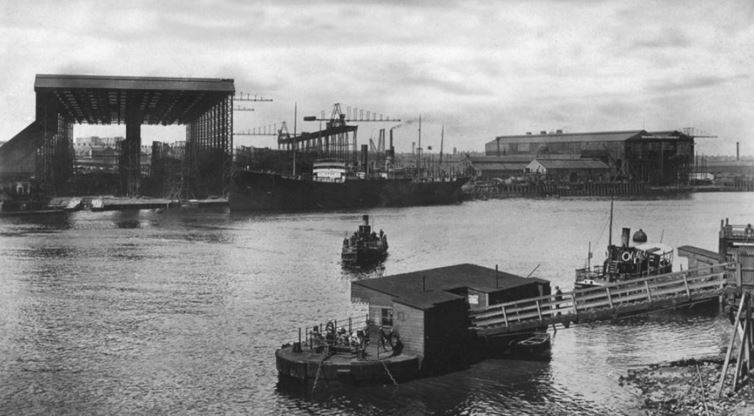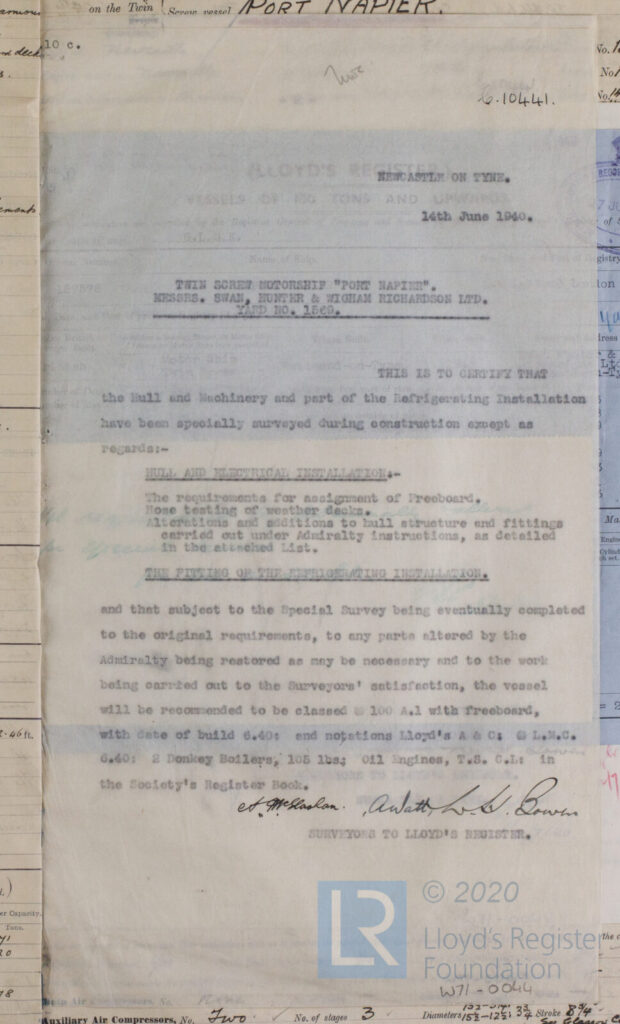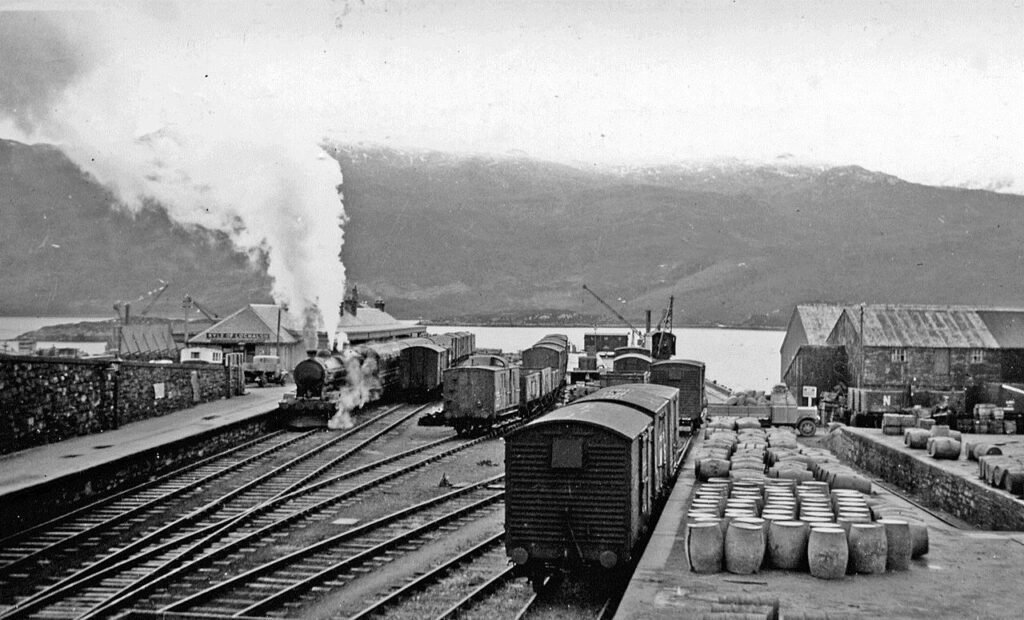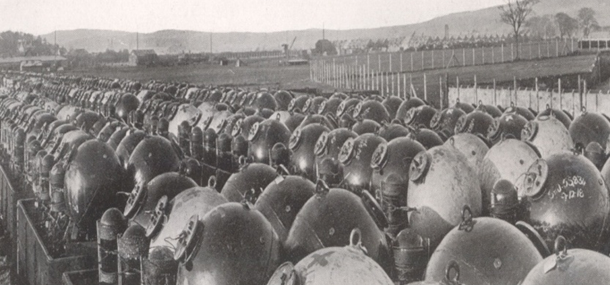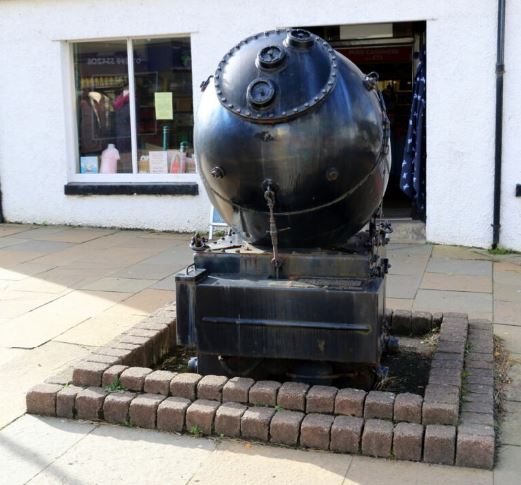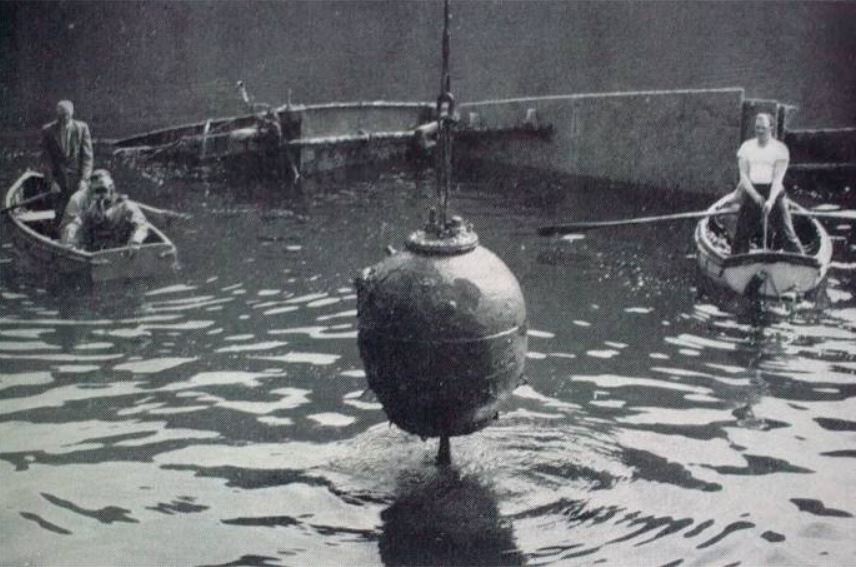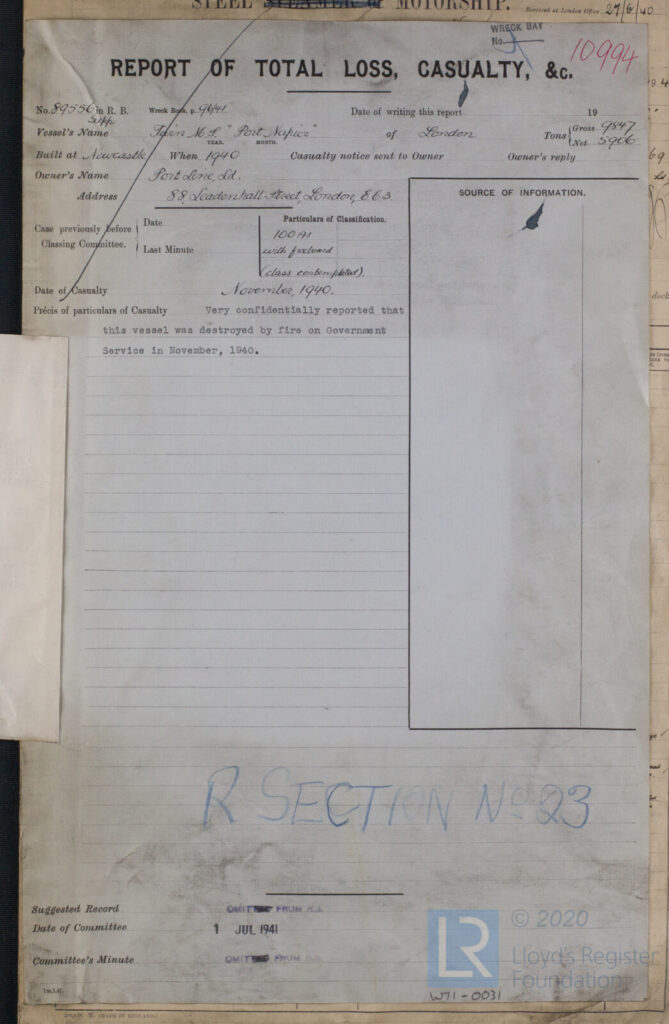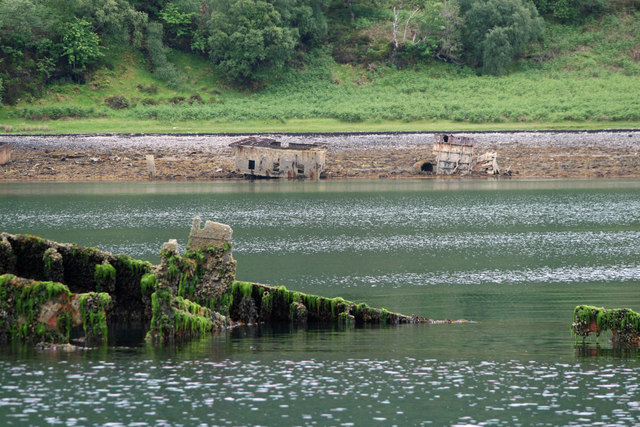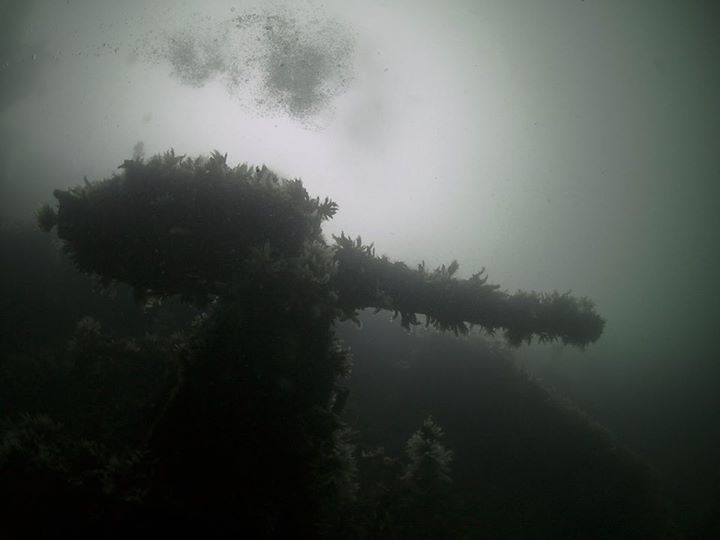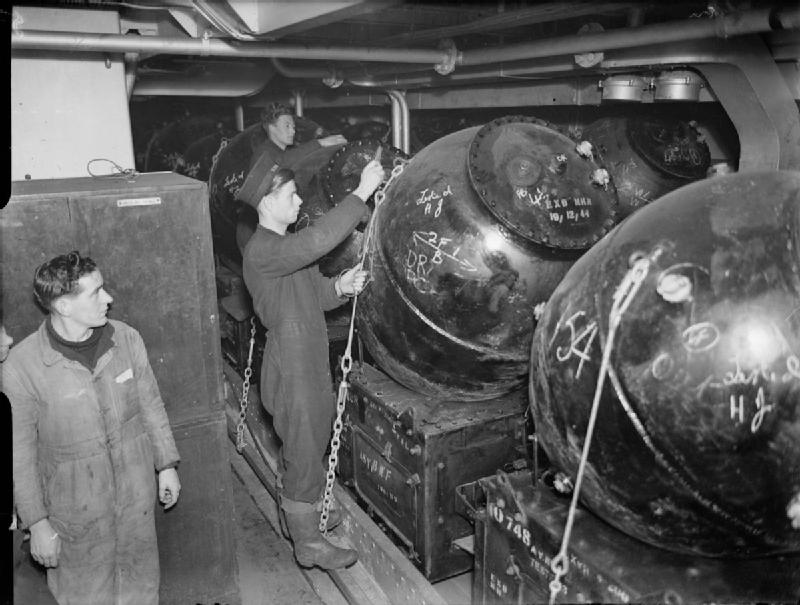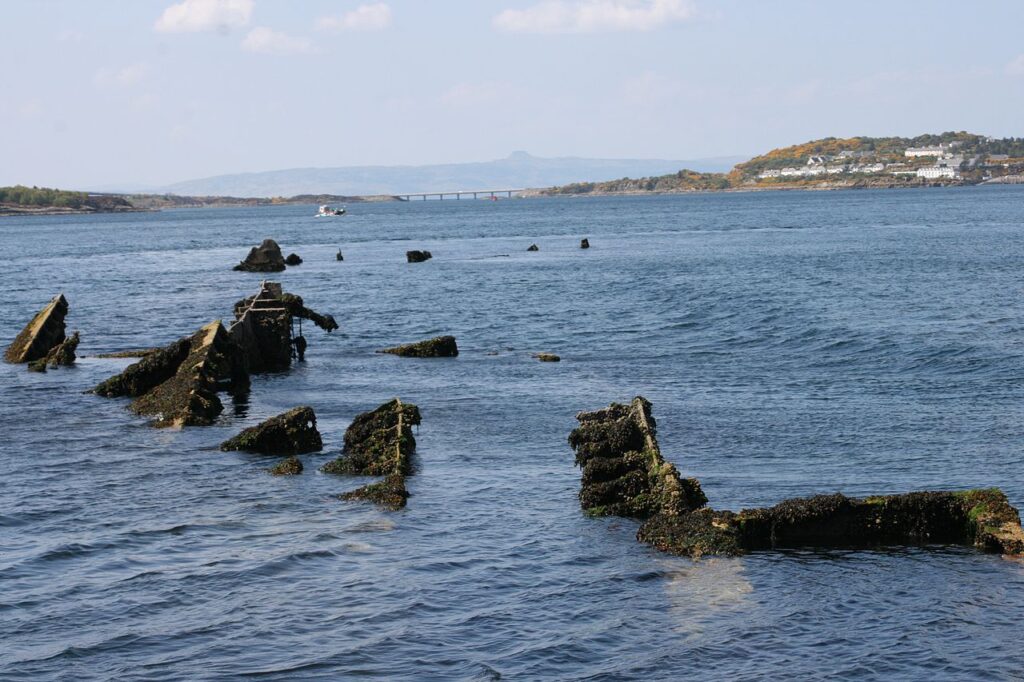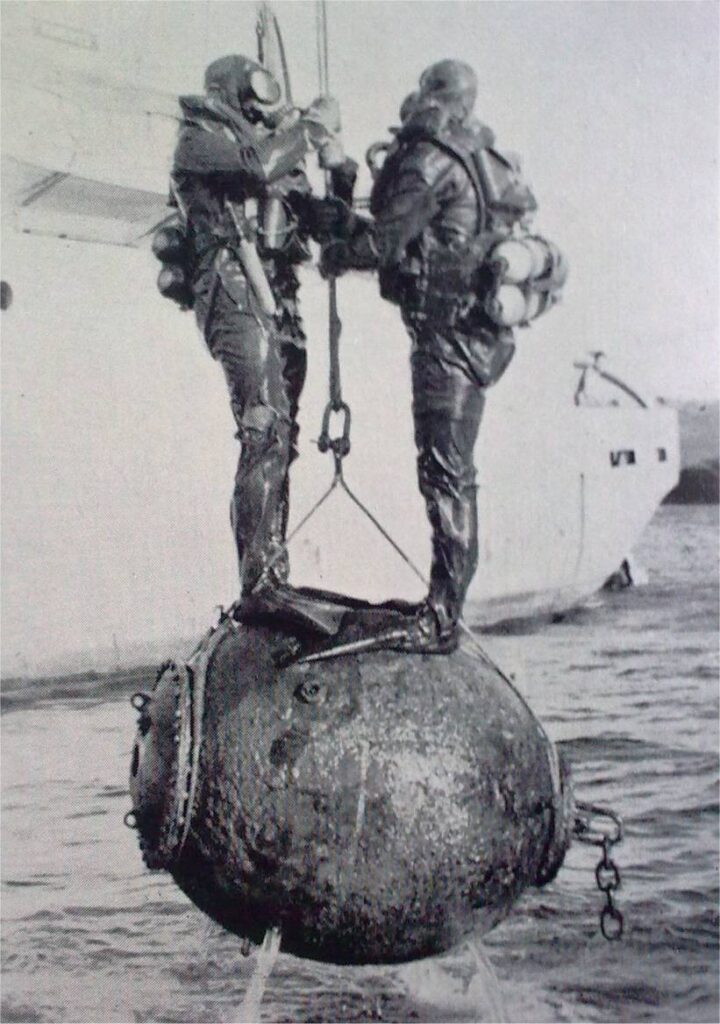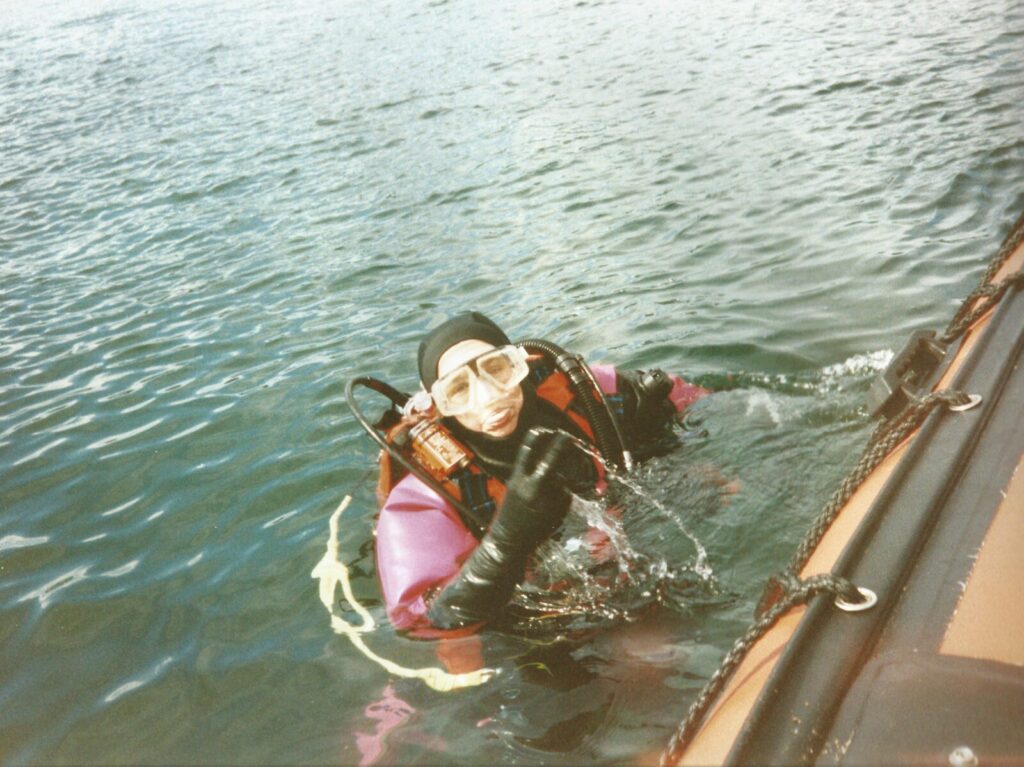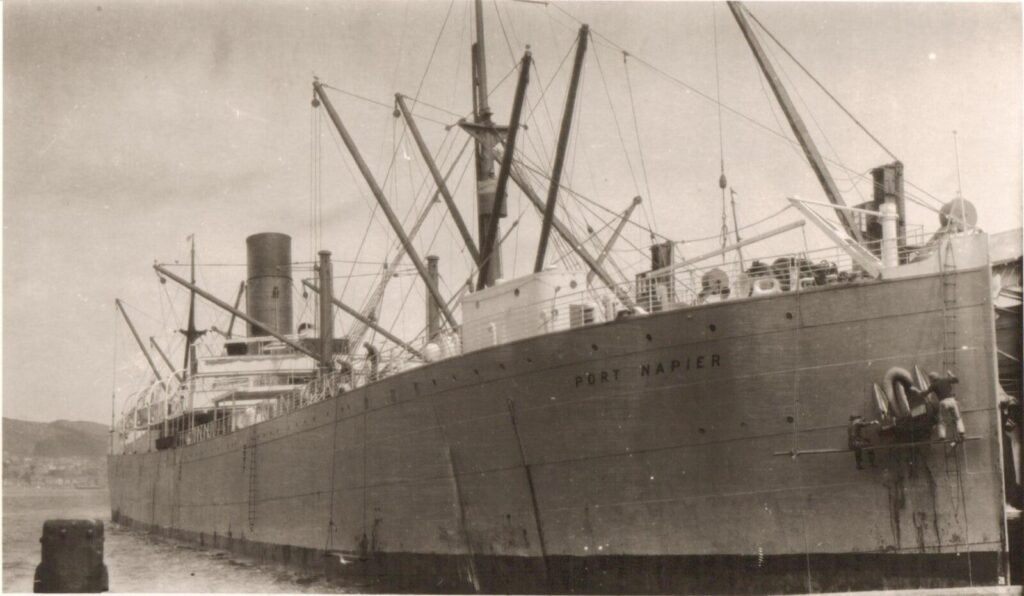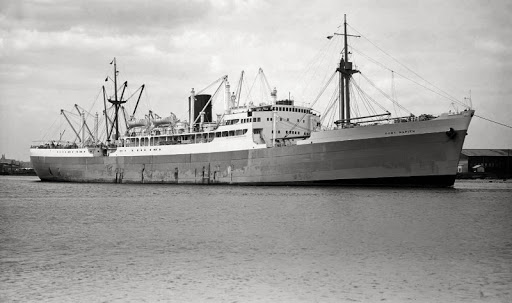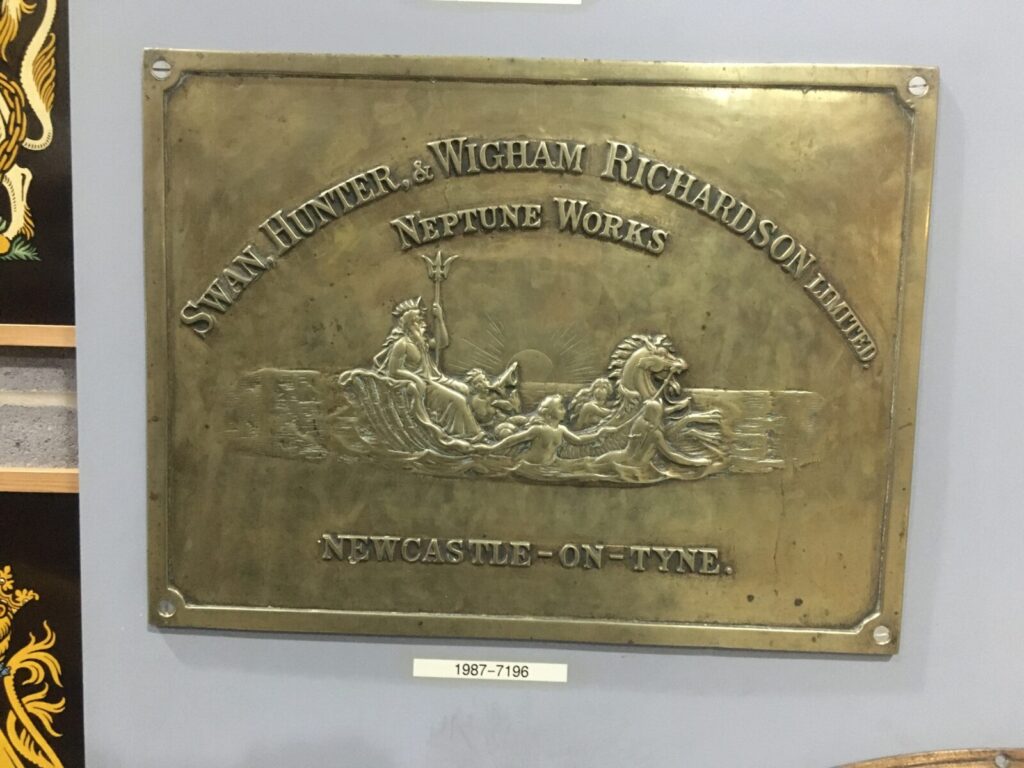The Chrisoula K
THE CHRISOULA K was built in 1954 as the DORA OLDENDORFF by Orenstein Koppel & Lubecker, she was 320ft long, 3720 tons and fitted with a two stroke MAN engine, for Egon Oldendorff of E.L OLDENDORFF & CO. In 1970 she changed her name and ownership and became the ANNA B. In 1979 she was purchased by Dimitris P Kavadas, via Clarion Marine, and was renamed the CHRISOULA K
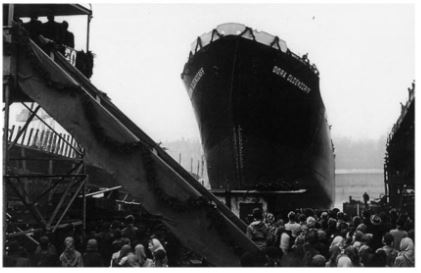
The MV LUDOLF OLDENDORFF (2) of 4,650 tdw, delivered to Egon Oldendorff by Lübecker Maschinenbau-Gesellschaft on 2 December 1952, and her sistership DORA OLDENDORFF (delivered two years thereafter), both had been designed as multi-purpose vessels and had a comparatively generous cubic capacity of 270,000 cu ft each. They spent most of their time in the Oldendorff fleet, chartered to passenger liner operators on period (time based) charters, but they also occasionally accepted voyage charters. Both ships frequently travelled the St. Lawrence Seaway after it’s re-opening in 1959, and sometimes ventured further into the Great Lakes. Between 1960 and 1964 the Dora Oldendorff performed no fewer than 33 trips into the Great Lakes on time charter to transport operators, Canadian Pacific, the St Lawrence affords direct access for the larger deep sea vessels to important North American industrial centers
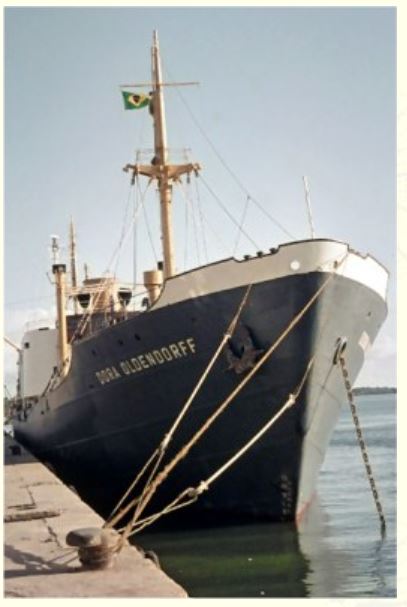
The degree of technical innovation in the Dora Oldendorff and her sistership is reflected by an article in the Lübecker Nachrichten daily paper of 13 December 1952, reporting on the commissioning of the MV LUDOLF OLDENDORFF: “When LMG shipyard director Schiml handed over, outside territorial waters, the newbuilding to her owner, the Lübeck shipping company had added to its fleet its tenth ship, and its first motor vessel. The LUDOLF OLDENDORFF did 15.9 knots in ballast condition. Her 2,700 HP two-stroke MAN diesel engine gives her a fully laden speed of up to 14 knots. Her modern equipment includes a Decca radar set, a ‘Telegon’ goniometer first introduced in 1952 and a complete radio station, all supplied by DEBEG. The vessel has also been fitted with an echo sounder. The radar set pays for itself within three days of dense fog when the ship would otherwise be forced to idle, assuming a loss per fog-bound day of DM 10,000”
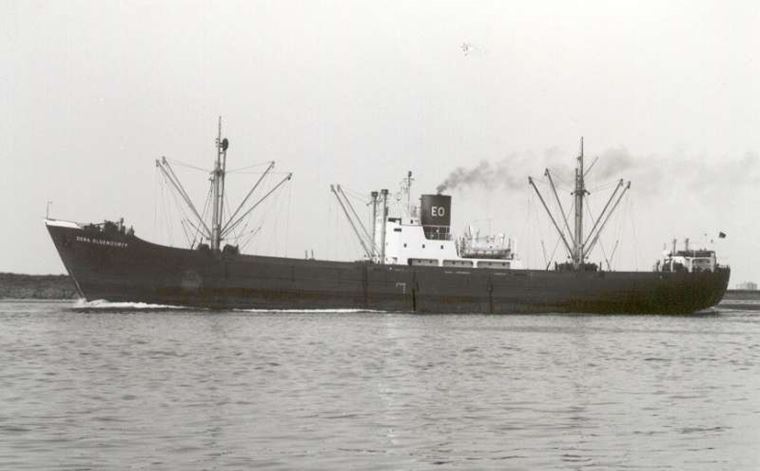
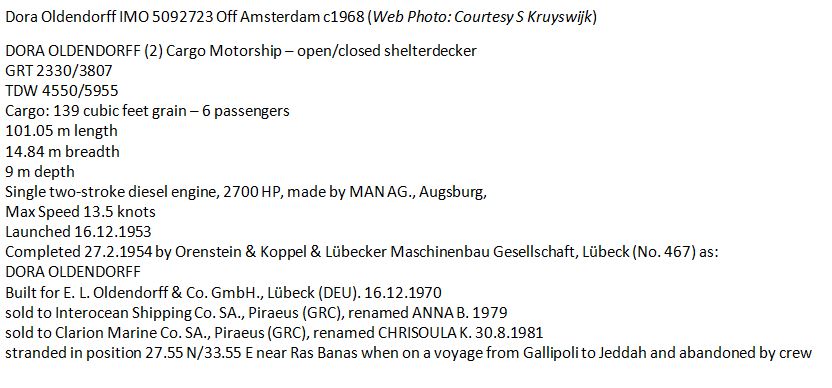
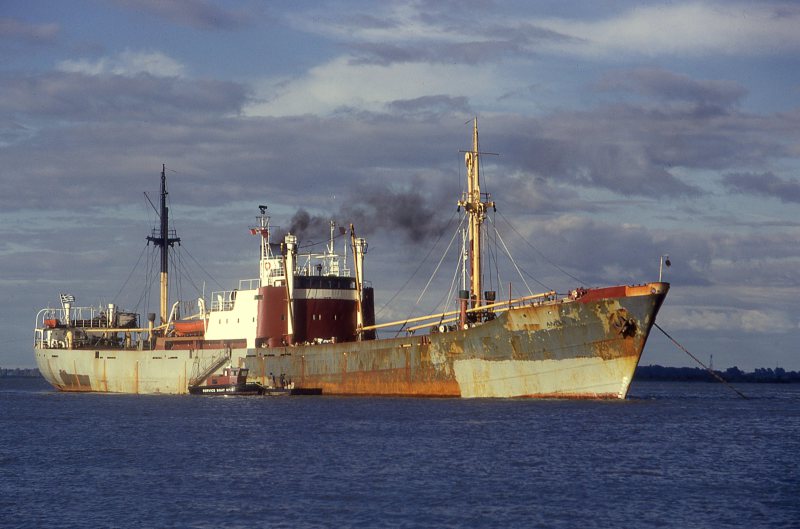
E.L. Oldendorff & Co, Hamburg, Germany
Egon Oldendorff was drafted for military service shortly before the war ended and was discharged from the army on 31 December 1918 as a qualified cavalryman. He seriously considered to take up farming but agreed to his father’s suggestion to commence his working life in the parental private bank and thereafter serve as a trainee in Hamburg before finally deciding his future career. He worked in the bank until June 1920 and opted for shipping during his time as a trainee with Lilienfeld & Homuth
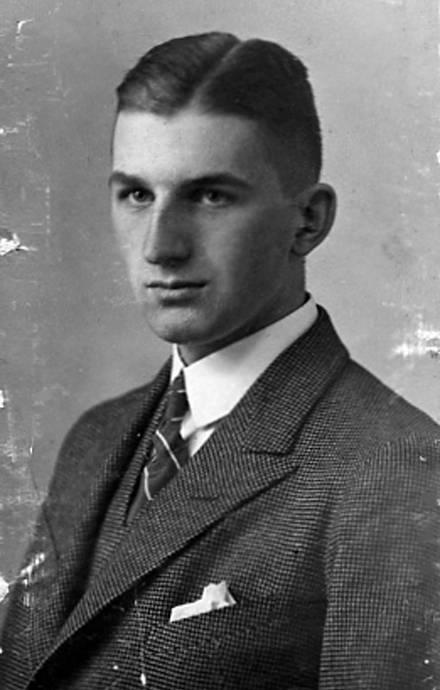
Alfred Homuth retired early in 1921, at that point Albert Lilienfeld made Egon Oldendorff his business partner, (Hamburg register of companies, 19 February 1921). Egon had been an apprentice for some 9 months at this point, however, the influence of his banking family background clearly impressed Lilienfeld and the result seems to justify the decision. The company changed its name to Lilienfeld & Oldendorff, Shipowners and Shipbrokers, Hamburg, with a branch office in Lübeck. Egon Oldendorff had come of age, at 21, merely two days before that date, a legal prerequisite for holding company shares in Germany at that time. Just days later the company announced the news in a letter to its clients, making reference to Mr Egon Oldendorff the banker, without any mention of the age of the new business partner

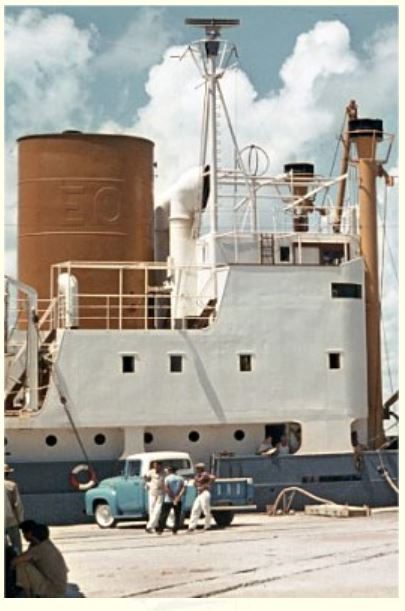
The Dora Oldendorff was built in 1953/54 by the Orenstein-Koppel / Lübecker Maschinenbaugesellschaft AG shipyard, Lübeck as hull number 467, and handed over to the E.L. Oldendorff & Co shipping company in February 1954. The vessel was 106.45 m long, 14.8 m wide and registered at 3807 GRT, she was powered by a 2-stroke G9Z 52/90 (MAN) Diesel engine (9 cylinders / 52 cm piston diameter / 90 cm piston stroke) and produced 2700 PSe at 136 rpm giving her a top speed of 13.5 knots. On August 30, 1981, some 28 years after her launch, she ran into a reef in the southern Gulf of Suez on journey from Naples to Jeddah carrying Italian floor tiles. The entire crew was recovered unharmed, however salvage of cargo or ship was not deemed to be worthwhile, and she was deemed a total constructive loss
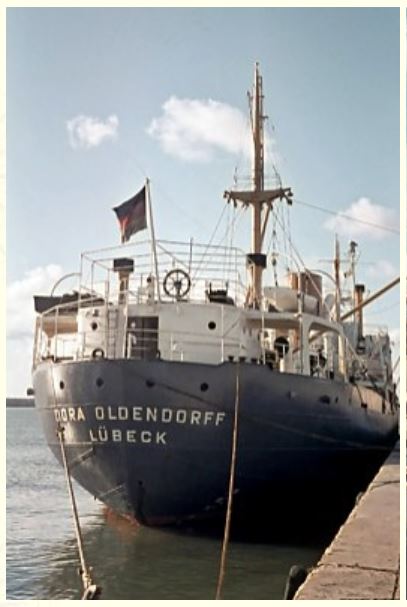
I first dived the “Tile Wreck” in 1997 on the FSAC Red Sea trip from the Princess Dalal, she was identified to us by our German dive guide, Renate Veldmeier, as the Chrisoula K and, even then, was in a conspiracy of confusion with the local dive guides…… “06.08.97 ABU NUHAS CHRISOULA K The “K” was a 1954 made Greek cargo vessel carrying stone block & lentils en-route from Italy to Jeddah when she hit Abu Nuhas at speed breaking in two. We dropped to the stern and swam in between the blades of the prop and rudder then round to the holds, she’s on her starboard side and is rotting heavily we swam through the main hold taking in the bronze spare prop & the stern accommodation then back in to the engine room midships and through the whole of it & out to the hull a great dive which we continued…..”

Now, the intriguing “…..which we continued”, alludes to the second wreck lying within a short distance of “Chrisoula K” which our dive guide identified as the “Sea Star” which was apparently “….a cargo ship carrying lentils and stone slabs when she hit Abu Nuhas in 1976”. It is easy to see that whatever the facts of any shipwreck, different stories crop up even in tight diving communities like those of the Red Sea. There is of course the local Egyptian/Arab naming protocols for the wrecks they find and make use of on their shores, those they get “Tiles” from and those they got “Lentils” from, I’m sure Giannis D was at one time the “Wood” wreck (or might have been had her deck cargo stayed aboard long enough) after her cargo of timber! I should note here that both wrecks we dived at the time were very similar in state, one looking somewhat “younger” than the other in terms of time on the bottom. In researching another of the wrecks for this blog (the aforementioned Giannis D), I came across the writings of Peter Collings and, when I went to illustrate the Abu Nuhas wrecks to identify the Giannis D’s location, I became intrigued by the widespread confusion surrounding what had been, up until then, an unidentified wreck. In 1997, when I dived Abu Nuhas, the wreck had been identified and was generally accepted as the Kimon M (launched as the Brunsbuttel, out of Stulcken & Sohn shipyard, Hamburg, 1952, sunk 12th December 1978) sparking an internet spat on the Yorkshire Divers site between Peter Collings and his supporters, and Ned Middleton and those agreeing with his identification of the two Eastern of the wrecks on Abu Nuhas. The degree of difficulty identifying shipwrecks is not surprising, the Greek shipping magnates of the 1970’s and 80’s frequently traded in “ad-hoc” cargoes, often registering their vessels under flags of convenience in order to “bend” the rules of import and export, frequently selling their ships to “shell companies” and changing their names between ports, and, as noted elsewhere in this blog (when is a shipwreck not a shipwreck), often loading specifically perishable high value cargoes and managing to “navigate”, seemingly by error, into convenient and relatively safe, borderline “sub surface”, coral reefs……..
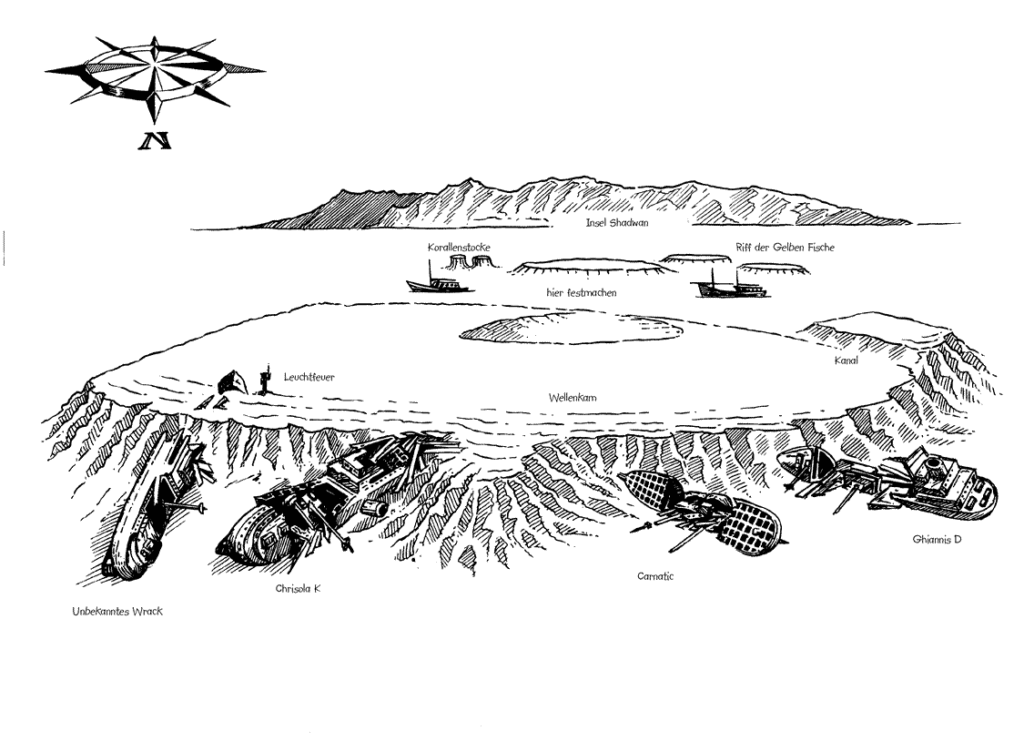
It is far more likely that the wreck I was told, and had no reason not to believe to be, “Chrisoula K”, but was in fact the “Unbekanntes” on the illustration, which we now know to be the Kimon M. I say that as the dive we continued onto, referred to as the “Sea Star” was, as I recall, to the right of the first wreck. We exited the first wreck fairly shallow and went, with the reef on our Left shoulders, to the second wreck, it would have been very evident (distance is way greater if nothing else) had that wreck turned out to be Carnatic, so I am at peace with the first wreck being Kimon M and the second being Chrisoula K. Peter Collings went on to describe the Chrisoula K as actually being a wreck called the “Marcus”, disputing Ned Middleton’s identification of the Tile Wreck being the Chrisoula K, that is where controversy really kicked in…….. Whether ‘tis nobler in the mind to suffer the slings and arrows of outrageous authors…….

The Marcus……..? (According to Peter Collings)
“……She was a German registered vessel and sailed under several names, including ‘Naguilan’, ‘Nordhaff’ and ‘Atlas’ until 1971, when after an extensive fire, she was declared a total constructive loss. She was then sold to Greek interests and again went through several changes in ownership and name changes. The vessel finally took on the name ‘Marcus’ in 1978.”
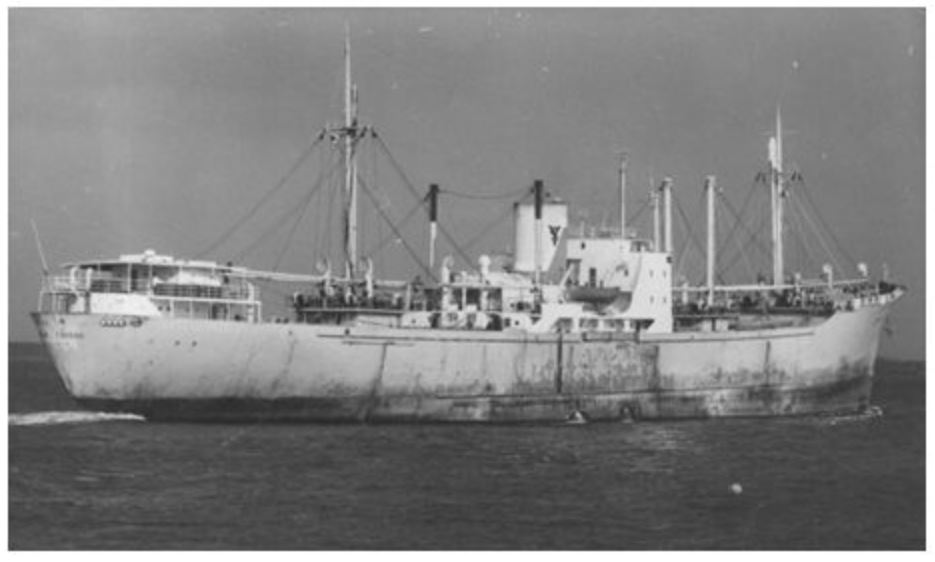
Peter Collings (Collings. P. “The Tile Wreck Her True Story” https://issuu.com/maxshow/docs/4-2019_tile_wreck 07/2019. Maxshow Ltd. Accessed 17/08/21) e- book:
“BUILT at Flensburgh Bremen in 1956 by Flensburger Schiffe for the Atlas Levante Line, as the MV ATLAS and registered at Bremen, (Lloyds list no less than 18 vessels called ATLAS at this time) she was described as a general cargo ship, fitted with MAN diesel engines, 381 ft long, 2699 tons. In 1959 she became the NAGUILAN, until in 1959 she was sold to Klauss E Oldendorff (who had owned the Dora Oldendorff, later to become the Chrisoula K). Under that ownership she became the NORDHAFF. In 1971 she was on a voyage from New Orleans to Bordeaux and Brest with a cargo of soya bean meal when fire broke out in her engine room. One man died and four were injured. She made port at Mobile. After making temporary repairs she finalised her journey, but was then declared a total constructive loss. At this point she would appear to have become declassified with Lloyds and the trail goes cold”
- P Collings assertion the Atlas/Nordhaff (5246001) trail goes cold following declassification by Lloyds does not follow the information known for the vessel, which has “Nordhoff” sold to Pandio Shipping Corporation, Piraeus, Greece and re-named as Nikitas II 1971-1974 and then sold to Siam Maritime Lines Co Ltd, Bangkok, Thailand and re-named Siam Queen 1974-1976 and finally re-named Simali 1 from 1976 to 2015
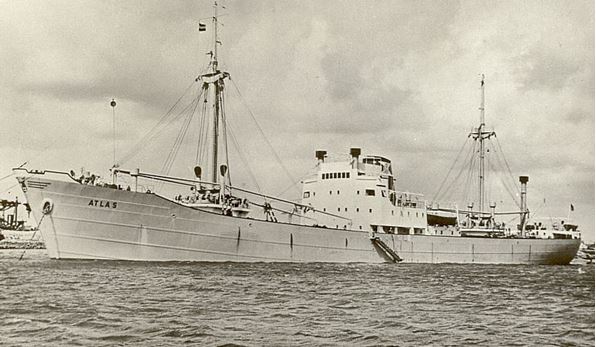
M/S ATLAS 1951 LR No.(IMO) 5246001
Built 1951 at Flensburger shiffsbau
Launched: 15.03.1951 & Delivered to Atlas Levante-Linie A.G., Bremen on 30.05.1951
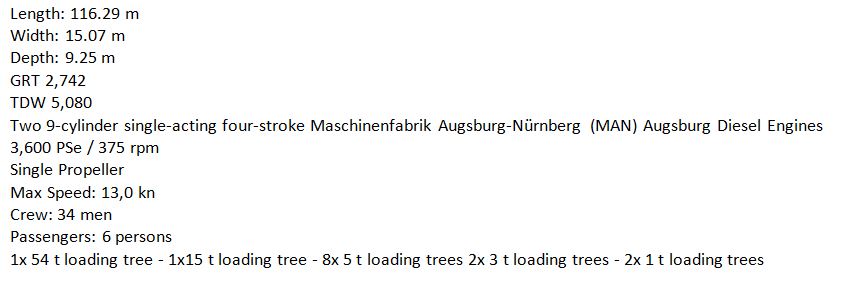
The Atlas has had an interesting life, apart from the immersion in the controversy of the Abu Nuhas “Tile Wreck”. Whilst in Hamburg, Germany, 02nd October in 1958 she suffered an explosion from “a magnetic mine” towards her bows, flooding her from the Starboard and immobilizing her with a 55’ list and grounded bow at shed 72/3 for some time. Atlas was repaired at Blohm und Voss shipyard and returned to the Levante Line on Jan 27th of 1959, the Levante Line then changing her name to Naguilan
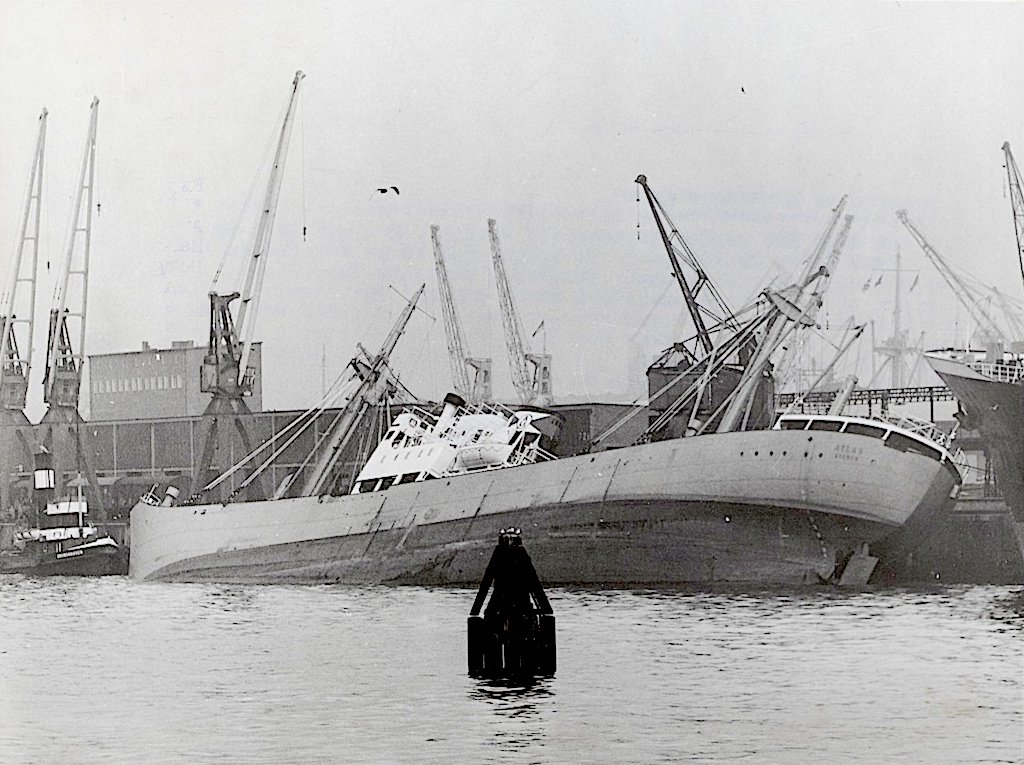
I am not sure how Atlas could ever be confused as the Tile Wreck on Abu Nuhas notwithstanding the fact she is still sailing or at least likely afloat up till 2015, her stern is just incompatible with the Tile Wreck, Atlas had a stern castle shelter-deck which extends to her hull in all directions which the Tile Wreck does not show and never had as there is no evidence of removal and no wreckage of such a feature present at the site. For both those reasons it is safe to say that the Atlas IMO 5246001 is not, and never could have been the Tile Wreck on Abu Nuhas
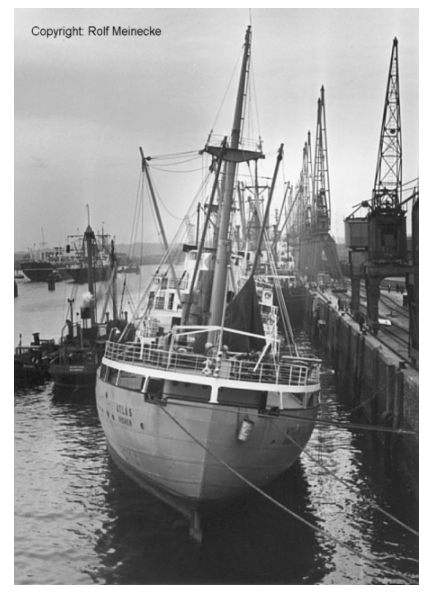
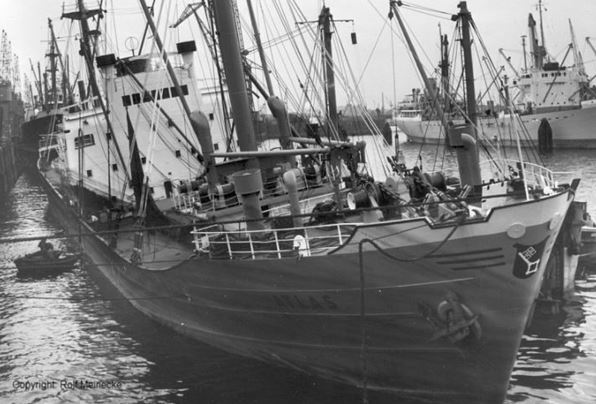
My next dive on the Tile Wreck would be in November of 2008, the infamous “THREE WRECKS IN ONE DIVE” (25/11/2008), detailed in the Giannis D, and Carnatic piece in the wreck section of this blog: “…..Starting with the Chrisoula K Dropping onto the stern and round the rudder & prop She’s on her Starboard side – round to the bridge & then through the tool room past the lathe & on into the hold through the cargo of floor tiles round to the bows passing many colourful fish & a spotted Ray. A five minute swim with the reef on our left took us to the Carnatic…….”
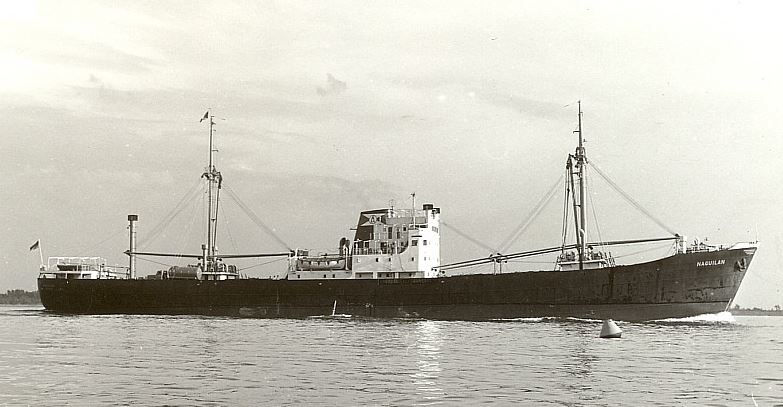
To Be or Not to Be……The Chrisoula K or Marcus Debate……
Let us consider the facts before we debate the circumstances, “….I come to bury Caesar, not to praise him…….”
Fact 1:
The bow of the Chrisoula K was clearly identified as completely separate from the main wreckage on Abu Nuhas, incidental to where the remains of the hull may be
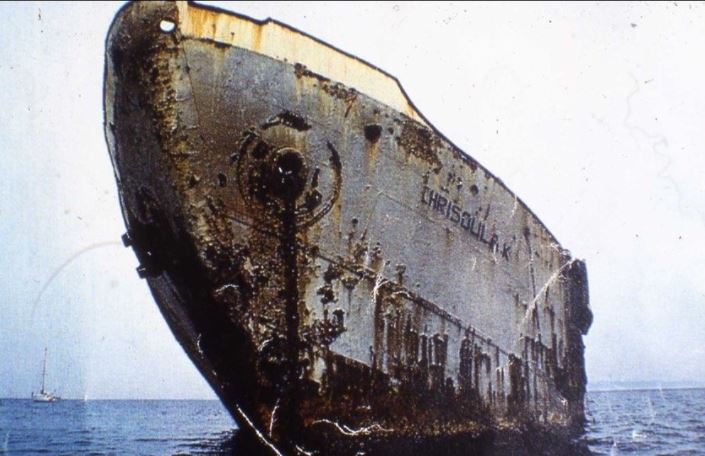
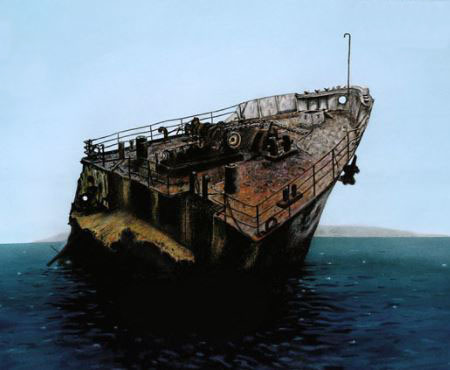
Fact 2:
The wreck known locally as the “tile wreck” still has the bow attached and therefore cannot be the Chrisoula K
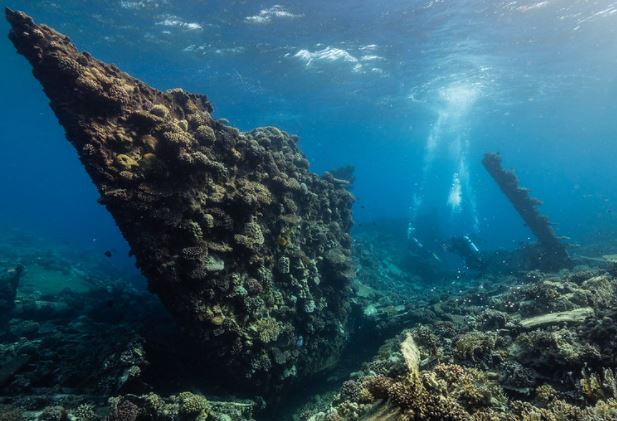
Statement:
From these two facts it can be logically determined that there is a wreck full of tiles on Abu Nuhas which remains to this day controversially “nameless” in as much as there is nothing to identify her visible in terms of hull markings. It can also be determined that the only way of identifying this wreck must come from physical characteristics matched to a vessel and a record, or records of a vessel which can then be traced to the reef at Abu Nuhas
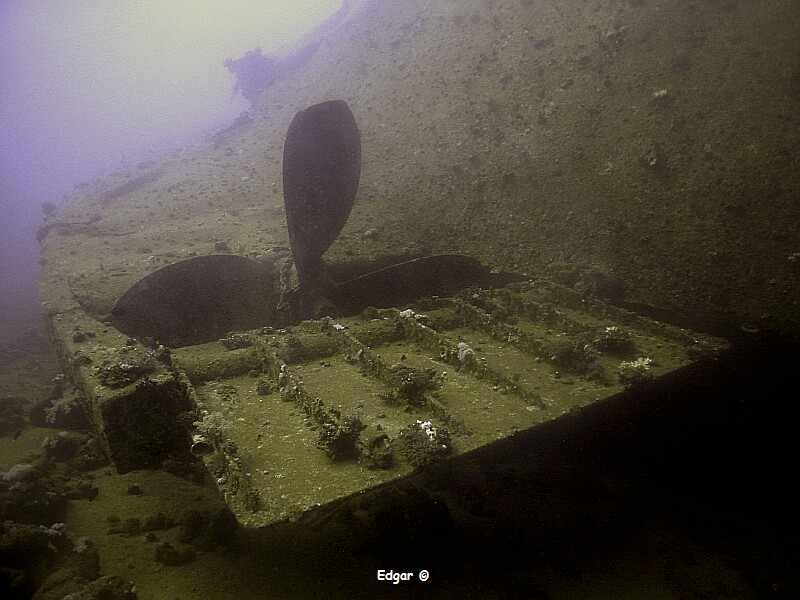
The next opportunity I got to dive the Tile Wreck was in July of 2013, my first trip with a Go-Pro camera, unfortunately also the first time 64GB micro SD cards were available and, unknown to most of us, especially those new to the Go-Pro, those same cards caused an OS meltdown rendering the £500 spent on the camera and its peripherals useless, I still had the dives but also a bitter disappointment that there was no record of them! Anyhow, my Navy Log Book describes the dive in typical fashion: “30/07/13 Kimon M & Chrisoula K – Abu Nuhas – Red Sea dropped onto Chrisoula K we spent time diving the prop & rudder before entering the stern section & winding our way round the battered stern hold area which is collapsing in on itself slowly a long swim from stern to bow along the port side to exit at the break aft of the bow which is missing. Through the remains of the starboard side & hold to exit and transit the reef for a couple of hundred meters to the Kimon M again down the starboard side to the prop & rudder which lie on the seabed to starboard. We swam through then circled to the stern deck housing and wended through the collapsed rear section which is dangerously collapsed in but can still be negotiated up through the hull which leads to the engine room which was swam through & then back into to go through the port side which allowed a swim through and out to turn back at the missing bow section and a swim along the starboard side – over the hull to deco below our moored boat Air In 210 Out 80 Buddy Craig” Once again it seems the dive guide has briefed the Kimon M as the Chrisoula K and vice-versa as the dive description as I re-read it now would make far more sense to have started on the Kimon M where her stern is over to Starboard and more damaged than the Chrisoula K however at that time I was more interested in the wrecks themselves than the accuracy of the identification, after all, both vessels are very similar until you lens them a little deeper…….

Disclaimer:
Those of you who have spent time on this site will perhaps be aware that I know Ned Middleton, not in any hugely significant (to this issue at least) way, it would be unfair to claim much more than a passing acquaintance, however I have met, briefly worked with, and get on very well (to date at least, although I’m sure this article might grate a little, I trust Ned’s innate sense of fair play to not let that truly antagonise….) with Ned and I admire Ned’s professionalism and diligence in all he writes. I have no personal knowledge of Peter Collings, save that I also admire his writings and have enjoyed coming across his pieces whilst researching some detail on the wrecks I have dived in the Red Sea. I also trust this piece, if either ever reads it, stands as a review of fact and an interesting “other” viewpoint, generated from the controversy of the Chrisoula K alone, and not of any desire to throw incendiaries amongst the Yorkshire Divers “MMA” (Mixed Maritime Articles…..?) web-site ding-dong of a few years ago……
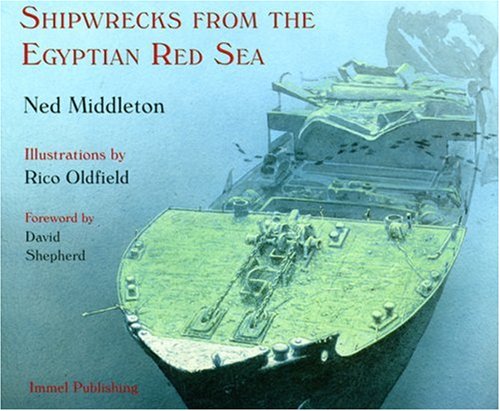
And so…… to de-bunking current assumptions:
Peter Collings (Collings. P. “The Tile Wreck Her True Story” https://issuu.com/maxshow/docs/4-2019_tile_wreck 07/2019. Maxshow Ltd. Accessed 17/08/21)
“BUILT at Flensburgh Bremen in 1956 by Flensburger Schiffe for the Atlas Levante Line, as the MV ATLAS and registered at Bremen, (Lloyds list no less than 18 vessels called ATLAS at this time) she was described as a general cargo ship, fitted with MAN diesel engines, 381 ft long, 2699 tons. In 1959 she became the NAGUILAN, until in 1959 she was sold to Klauss E Oldendorff (who had owned the Dora Oldendorff, later to become the Chrisoula K). Under that ownership she became the NORDHAFF…….”
- Peter Collings assertion the wreck he goes on to refer to as “Marcus” had originally been named MV ATLAS built in 1956 is not possible if, as he asserts, she then became the Naguilan and Nordhaff etc. That vessel was the MV Atlas built at Flensburgh Bremen by Flensburger Schiffe for the Atlas Levante Line in 1951 (not 1956), LR Number 5246001. Renamed on 27.01.1959 as NAGUILAN (DEAA) 1959-1967, then returned to her original name ATLAS from 1967-1969. She was sold to shipping company “Nord” (Klaus Oldendorff), Hamburg 02.10.1969 and re-named NORDHAFF (DEAA) 1969-1971. On the 21.05.1971 she was sold to Pandio Shipping Corporation, Piraeus, Greece and re-named NIKITAS II 1971-1974. In 1974 she was again sold, this time to Siam Maritime Lines Co. Ltd., Bangkok, Thailand when she was re-named SIAM QUEEN (HSKG) 1974-1976. In 1976 she was again, and for the last time re-named SIMALI I (HSKG) 1976-2015. As Simali 1, LR No. 5246001 she was still in motion in Equasis (Maritime Tracking Database)in 2015 making it impossible she was sunk on Abu Nuhas
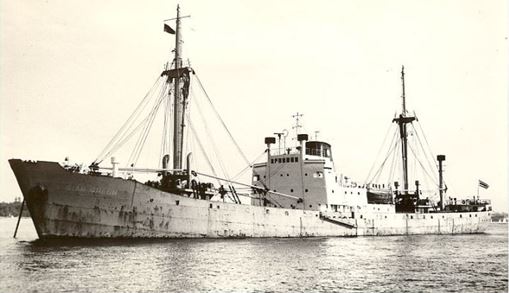
“…….In 1971 she was on a voyage from New Orleans to Bordeaux and Brest with a cargo of soya bean meal when fire broke out in her engine room. One man died and four were injured. She made port at Mobile. After making temporary repairs she finalised her journey, but was then declared a total constructive loss. At this point she would appear to have become declassified with Lloyds and the trail goes cold”
2. Peter Collings assertion the Atlas/Nordhaff (5246001) trail goes cold following declassification by Lloyds does not follow the information known for the vessel, as noted above, which has the Nordhoff sold to Pandio Shipping Corporation, Piraeus, Greece and re-named as Nikitas II 1971-1974 and then sold to Siam Maritime Lines Co Ltd, Bangkok, Thailand and re-named Siam Queen 1974-1976 and finally re-named Simali 1 from 1976 to 2015 and was still in motion (sailing) in 2015 according to several maritime tracking systems
“During our two dives (no nitrox, no computers, no camera’s) the ships bell was recovered and retained by Saleem. As well as bearing her original name the date and port of registry were marked clearly – BREMEN 1951,.- a fact lost for many years. The painted name on her hull and wooden boards reading Marcus……”
3. Peter Collings assertion here, that the Atlas Bell was marked 1951 differs from his later claim, and indeed the photograph he presents as that of the Atlas Bell, “….recovered and retained by Saleem”, the captain of the dive boat who recovered it from the tile wreck bears the markings Atlas Bremen 19(8?)56….
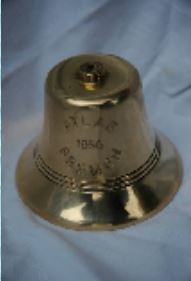
4. To have the Bell marked “Atlas Bremen” as Peter Collings asserts, she must have started life as the Atlas……(Bells are not removed from the ship at transfer of ownership or name)
“After many years I tracked Saleem down and among the many treasures he had collected was several of the stone statues and indeed a ships bell – covered in white paint. He had obviously gone back to the wreck after our visit! After much persuasion and many shisha’s, he allowed me to clean up the bell and take photos of it. So we both ended up with a piece of treasure from the tile wreck. I now had the ultimate proof of the vessels identity …. The bell, inscribed ATLAS, BREMEN 1956……..”
5. Peter Collings may be forgiven for the initial date claimed for the bell and perhaps the later statement changing the year of manufacture, based on the years between the original dives on the wreck and the re-discovery and cleaning of the bell, were it not contained in the same piece, where at the very least the discrepancy merits some clarification? The original date claimed (1951) for the bell would have been aligned to the MV Atlas, 5246001, but the later date of 1956 clearly removes that vessel from the bell itself if not from the whole of Peter Collings proposal of that vessel being the tile wreck. (I have to mention the photo of the bell gives my tired old eyes the distinct impression it is dated 1856 rather than 1956…..)
“Reproduction of a postcard from Stefan Jablonski’s collection. Many vessels carried a stock of postcards on board for the crews use. Printed on the back the notation “M.V ATLAS 1956 BREMEN, ATLAS LEVANTE. Inscribed in Stefan’s hand in Polish,” Joined May 78 as Marcus V.S.L…….”
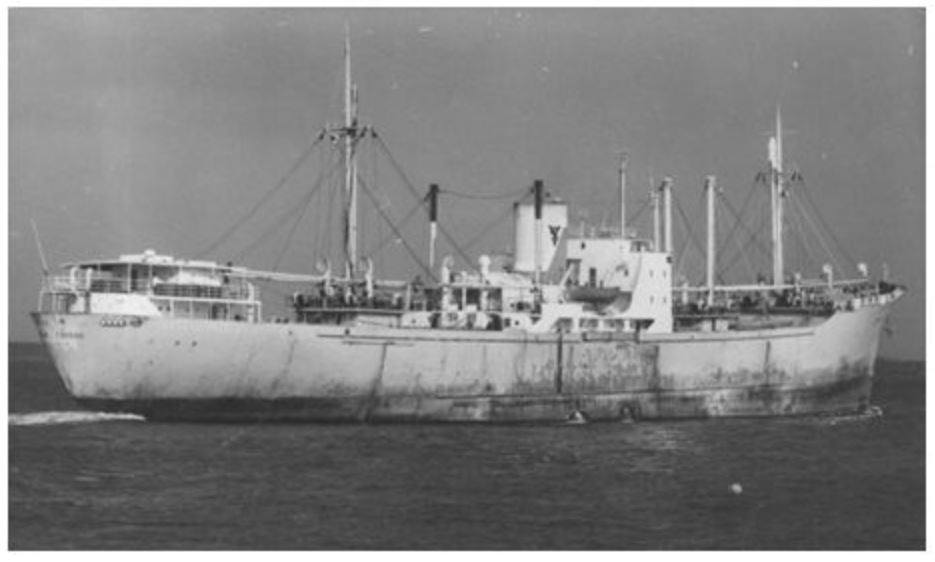
6. The postcard exhibited in Peter Collings piece cannot be categorically identified as any particular vessel, the stern name is unclear, however, the shipping line is on the funnel as YS….or is it VS?…the shipping line Stephan Jablonski asserts he was signed with was the “Vikki Shipping Line”
“…….In 1978 I was employed by the Vikki Shipping Line. They were a Greek merchant fleet, made up of very old ships…..”
It would perhaps have been more “immediate” as evidence if the reverse of the card had been an accompanying photograph? I have seen many ships cards and they often use generic photos to represent a class of ships a particular line favours or owns. One thing is clear Stephan Jablonski (the crew member Peter Collings interviewed from several Abu Nuhas wrecks, aboard each at the time of wrecking) confirms the postcard he sent to Peter Collings
“……Quite often the ship would have a different name on the postcard. (I have previously sent one of these to Peter because of his interest in the ships)……”
One thing though is certain, the stern of this vessel is not that of the tile wreck which has distinctive differences, the most obvious being the lifeboat davits present on the tile wreck but absent on the postcard vessel. There is also a gangway extending to stern on the stern-castle of the postcard vessel, but not on the tile wreck, nor is there any evidence of a second level of stern deck/accommodation on the tile wreck, even the mast showing on the tile wreck is different from that on the postcard vessel, all things considered, unless extensive modification had been carried out on the postcard vessel (and could be evidenced), it cannot legitimately claim to be the tile wreck
7. Finally It should be noted that the Atlas (5246001) has two 9 cylinder engines, “…single-acting four-stroke Maschinenfabrik Augsburg-Nürnberg (MAN) Augsburg Diesel Engines 3,600 PSe / 375 rpm” whilst the Dora Oldendorff (IMO 5092723) has only a single 9 cylinder two stroke MAN Diesel “2-stroke diesel engine (MAN) of the type G 9 Z 52/90 (9 cylinders / 52 cm piston diameter / 90 cm piston stroke” producing 2700 PSe at 136 rpm
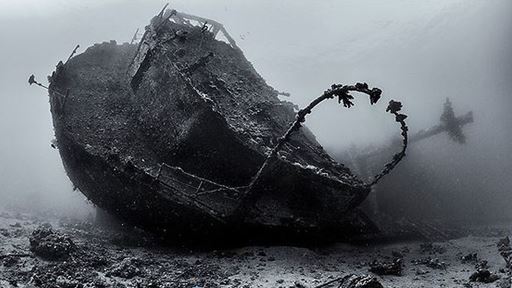
Burden of proof:
P Collings perhaps has the means of categorically proving the tile wreck is indeed the MV Marcus and if so, I am not sure why that wider range of evidence has not been shared and does not appear in his piece on the Chrisoula K
“……two significant pieces of evidence came into my possession, one of which was a photograph taken in 1979 – by non other than HOWARD ROSENSTEIN (who had discovered the DUNRAVEN) – the photo clearly shows the MARCUS sinking and indeed her name can be made out quite clearly painted on the bow – Shadwan Island is discernible in the background….”
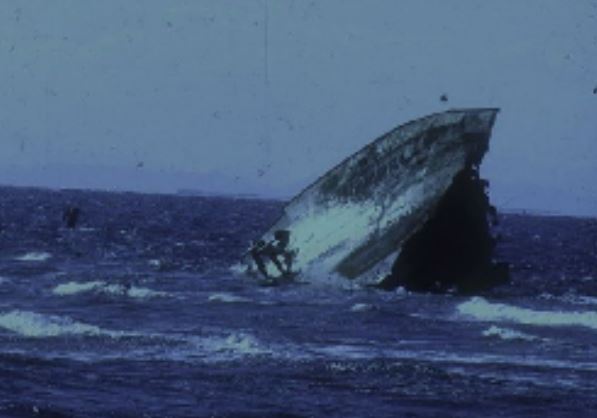
If the photo above is truly supposed to show the MARCUS sinking,“……..and indeed her name can be made out quite clearly painted on the bow….” then I am at odds with Peter Collings insomuch as I cannot adequately discern the name on the bow, perhaps, again, my eyes are too old? If a better photograph exists I suggest that it is shared with the wider diving public (if it hasn’t so far?) then all that will remain is categorically tying the wreck with a named and built vessel with clear and dated origins, history and ownership from birth to death and a proven timeline to meet its sinking…..but then isn’t that where we are currently?
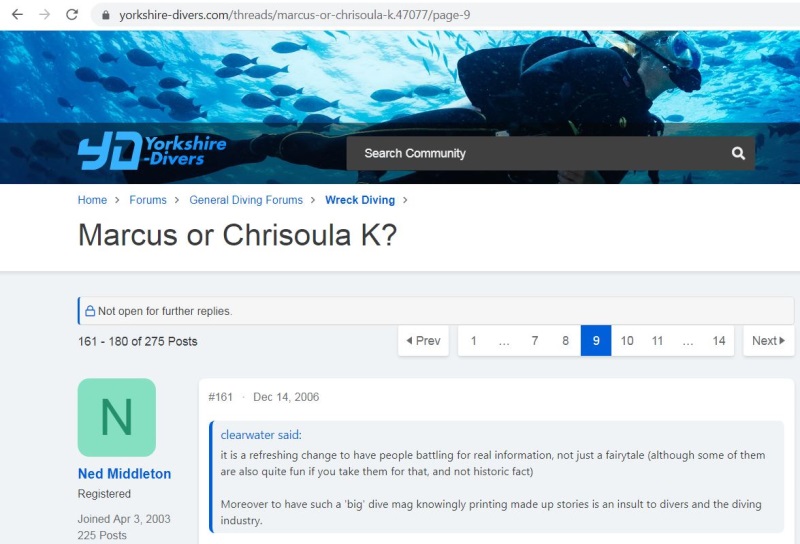
So to the Ned Middleton Piece and the Yorkshire Divers website piece, (the tone of which is oddly not like Ned’s usual outlook from what I have seen of Ned, and from how Ned’s research has always come across to me after reading most of his books and hoovering up his Red Sea pieces, especially on Thistlegorm, but I digress……) Ned seems fixed on the “lack” of a Marcus and polarized on the “must” therefore be Chrisoula K……I don’t get that, it’s just not really Ned….
“…….I can assure people that there is no shipwreck on Sha’ab Abu Nuhas (or anywhere else in Egypt) called Marko, Markos, Markus or Marcus and instead of my having to continually refute these assertions to the contrary, I do so wish those who insist otherwise would simply provide details of such a ship…….”
All I can take from the YD piece (https//www.yorkshire-divers.com/threads/marcus- or- Chrisoula- K.47077/#post-576870:.On-Line resource: Accessed 18/08/2021) is perhaps a sense of deep frustration from Ned that others are simply challenging “by assumption” rather than presenting hard fact or compelling evidence, I can easily understand Ned’s situation from that perspective
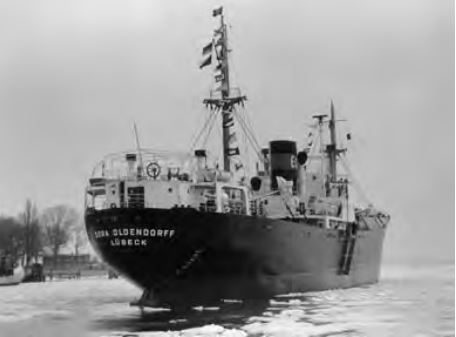
I have a couple of points which perplex me and the first is that the stern of the Tile wreck is not a perfect match for the Dora Oldendorff, which eventually became the Chrisoula K before her known and widely proven demise on Abu Nuhas. This (above) is the stern of the Dora Oldendorff, launched. 27.2.1954, completed by Orenstein & Koppel & Lübecker Maschinenbau Gesellschaft, Lübeck (No. 467) for E. L. Oldendorff & Co. GmbH., Lübeck (DEU) taken from their own company history, and (below) a close-up taken prior to her sale on the 16.12.1970 to Interocean Shipping Co. SA., Piraeus (GRC), when she was renamed ANNA B
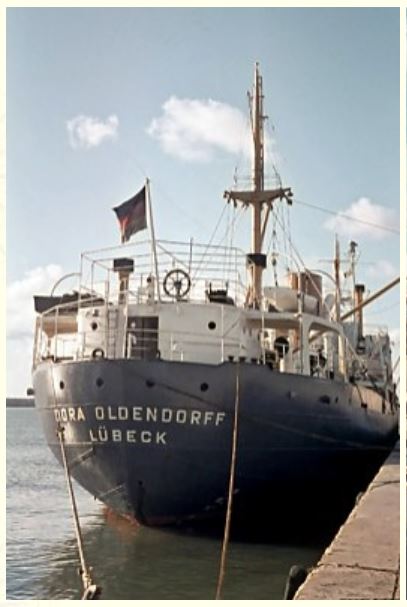
Comparison with the Tile Wreck is certainly far better than that of the supposed Marcus of Stephan Jablonski’s postcard, inasmuch as there is no Secondary superstructure at the stern-castle, and there is no Gangway to the stern from the stern castle deck. It should also be evident the stern mooring bollards (x3 port and starboard) are accurate to both the Dora Oldendorff and the Tile Wreck, the lifeboat davits are present and correct to both ships, as is the stern mast, neither of which is the case for the supposed “Marcus” in Stephan Jablonski’s postcard
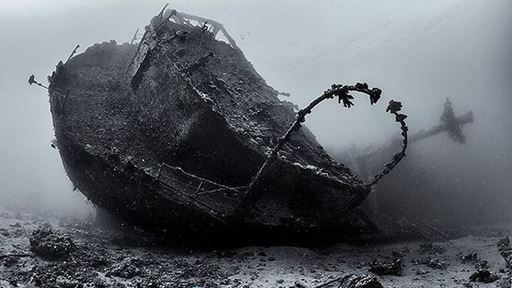
In another shot of the stern of the Tile Wreck (below) we can see a slightly more advantageous angle which allows comparison of the stern castle door, in the shot above it looks distinctly “Portside” whereas the Dora Oldendorff had a central Stern castle door, apparent in the Oldendorff history shot and in the pre-sale close-up. That is clarified in the shot below which also shows the stern has a row of open ports, two either side of the centre-line of the stern and one each port and starboard on the stern castle either side of the door, and two stern rope eyes again identical to the Dora Oldendorff shots. The perplexing bit is the stern castle door is much narrower on the Tile Wreck than the Dora Oldendorff seems to be, a minor point but nevertheless an obvious one, and the obvious and prominent raised plate laps or seams on the Dora Oldendorff do not appear on the Tile Wreck, another minor point and perhaps moot if the concretion of years underwater could be rubbed away to reveal such features, highly possible, (far more so than finding a second stern deck level as we would have to do to match the supposed “Marcus” postcard and the Tile wreck)

Enough of the he said she said……..let’s Break Stuff…..
Let’s examine a different “perspective” for a moment and review what, before now, has been taken to be “fact”…. Fact 1 (from the outset of this piece) can be challenged, it may seem a little odd to do so, however, indulge me for a moment, let’s take another look at the bow shot of the Chrisoula K on Abu Nuhas
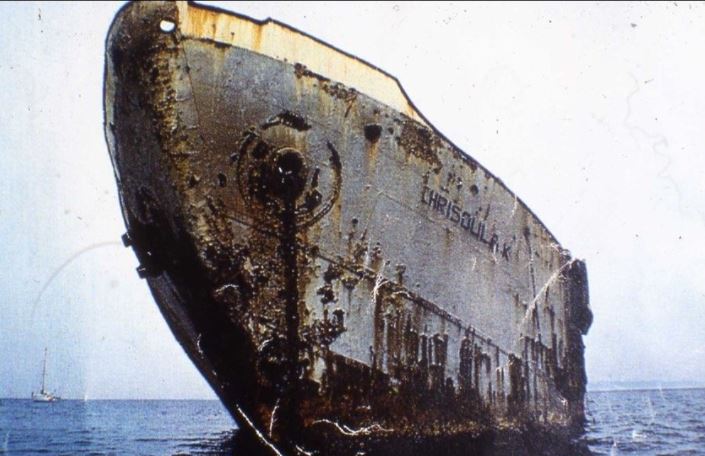
The initial impression is of a bow, separate from the remainder of her hull at or around the fore-peak deck division yes? OK, how about we ask ourselves a couple of questions before we look at the second “Chrisoula K” bow shot. Firstly, can we see any rails at the bow between the highest point of the bow at the break of forepeak and fore-castle deck? Secondly there is a clearly defined plate overlap/strake under the Port Anchor hawse and a distinct strengthener welded around the Port Anchor hawse. Lastly is it too far-fetched to believe the remains of the hull may……and I am going to repeat that….. “may” be obscured by the angle of the shot? Let’s take another look at the second Abu Nuhas bow shot
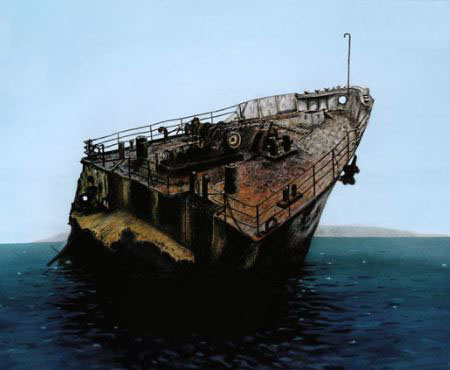
This is purported to be a second shot of the bow of Chrisoula K and features in many of the written pieces on her sinking, looking at this shot, a different angle admittedly, this would seem to show conclusively that the Chrisoula K’s bow was indeed entirely separate from her hull remains. Peter Collings uses an engineer’s report on the similarities, in part, to underscore his piece. It can be seen that there is a distinct handrail set, not bent over but upright, in fact seemingly bowed out at the third & fourth upright, on the Port Bow between the fore-peak and the Forecastle deck where it meets the break at the main deck. It may just be the angle the bow is sitting at but it seems the starboard anchor is hawsed higher on this bow than it does on the Chrisoula K’s bow? Sadly, the strengthener around the Starboard Hawse does not show on the unnamed bow shot, oddly, and, again it “may” just be the angle of the shot, but neither does the welded plate overlap/seam show, no matter how much I zoom the shot…..It would seem there are some distinct and noteworthy anomalies if we are to confidently believe the two shots are of the same bow, lastly there is a distinct flag-staff or “angled vent pipe” at the bow of the second shot, absent from the fist by the angle…..co-incidence……. or deliberate cropping of the shot?
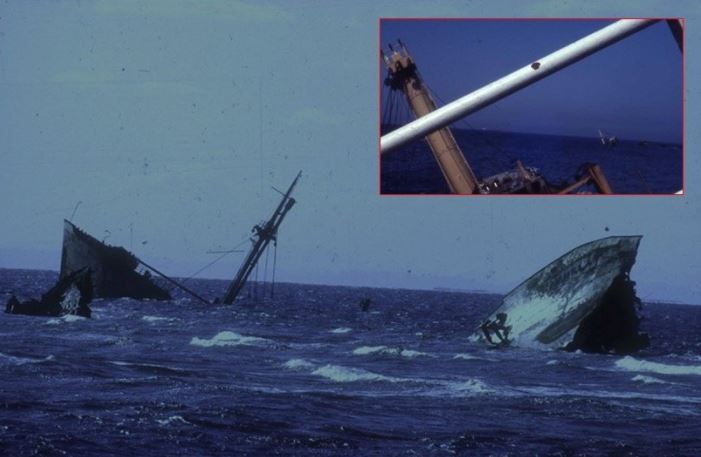
In the shot above it is clear there were two bows in close proximity believed to be in 1978 when the Kimon M hit Abu Nuhas and sank. I cannot adequately discern from the photo the name on the right hand side of the photo although Peter Collings is convinced it shows “Marcus”, I will leave each reader to decide the accuracy of that. On the Left hand side it is clear the bow in question has a vent/flag-staff with a “crook” style turn at its top, an anchor hawse very close to the bow and, from the vent visible above the water to the rear of the fore-mast & derrick, it would seem the remains of the wreck are still attached to the bow, sadly there is no name discernible from the bow of this vessel either. Is it too much to think this is the Chrisoula K, and that the shot was taken not in 1978 but a little later in 1981, and that this is in fact Chrisoula K, her bow and remaining hull still attached as she slips back off the reef in tidal surge due to buoyancy and the weight of her hull and cargo? It would certainly leave an intact hull, to a greater or lesser extent, as in the tile wreck on Abu Nuhas, and it would leave an unnamed, almost identical, if earlier bow remaining on the reef in very close proximity to the Tile Wreck
Atlas: Ask Not For Whom the Bell Tolls…..
Let us now examine the 1957 built ATLAS, IMO 5029788, is it likely or even possible this is the vessel “Marcus”? Firstly, the Bell (Marked 19(8?)56) displayed as evidence in P Collings piece would still be incorrect to the vessel and its build date, especially considering the 1957 Atlas was built by John Readhead of South Tyneside and therefore it is impossible her bell would be cast as “Atlas Bremen” unless that was her full christened name, which we know not to be the case. We also know that the Atlas of 1957 (5029788) was re-named Kapetan Xilas in 1973 and then re-named Moajil 5 in 1979 spending some 8 years stranded in Umm Qasr before being re-named Bhojanii II and being broken up at Guajarati in 1989, making it impossible for her to have been the Marcus or being the tile wreck at Abu Nuhas
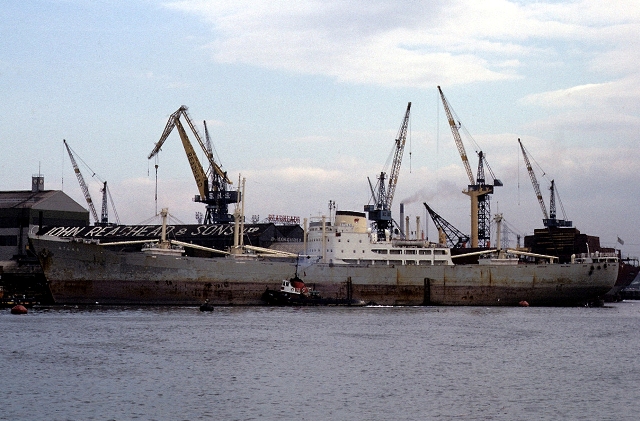

The Tolling of the Iron Bell……..
At this point it would seem that neither of the “Atlas” vessels could be the “Marcus” as both have absolute ends and neither was at Abu Nuhas, the MV Atlas IMO 5246001 of 1951 is still afloat in 2015 as the Simalee I, and the MV Atlas IMO 5029788 of 1957 was broken up on the shore at Guajarati in 1989 as the Bhojani II
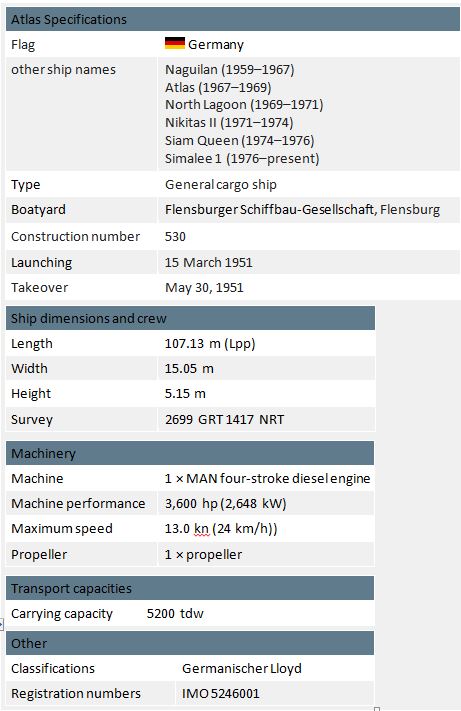
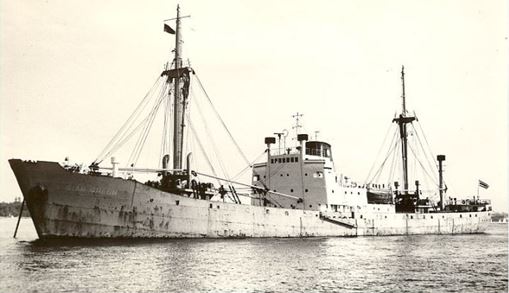

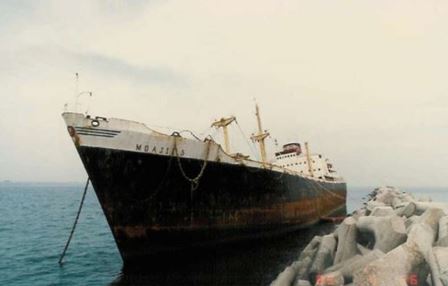
Summary & Closing Comments:
Having examined the Peter Collings claim that the “Tile Wreck” is the MV Marcus, formerly the Levante “Atlas” and having conclusively proved that cannot be the case, there are still questions to be answered as there is indeed one too many ships bows on Abu Nuhas in the North Eastern Reef area. Is Peter Collings right when he states “….The final piece of the puzzle was solved by a skipper onboard one of the safari boats I had worked on. As he watched my presentation of the wrecks at Abu Nu has he recalled seeing two tugs attempting to pull the Chrisoula K off the reef. The main section of the ship broke off, leaving the bow behind, and as the tugs surged forward the ship began to sink almost taking the tugs with it.” Which indicates another wreck, minus it’s bow, should be found in the North East section of Abu Nuhas away from the main reef in deeper water, Peter Collings claims to have identified such a wreck however I know of no other divers who have had the privilege of diving it, at some 80m it is out of most diver’s usual range, although even other technical divers have not come forward with such a find or evidence of such a wreck, it would be a newsworthy event at the least even if mainly for the diving community……
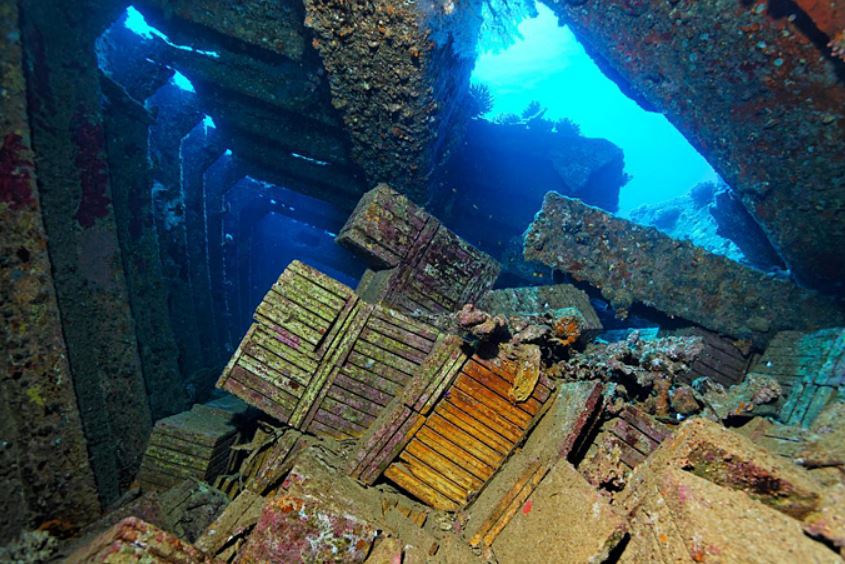
My last dive on the Tile Wreck took place in August of 2015 off the Liveaboard Blue Melody, of the Blue 02 fleet…..In true fashion the wreck leaves me with another mystery, the film is some 43 minutes or so long, missing the deco around 10 or 15 minutes of dive-time, easily explained by a battery fail on the Go-Pro, however more so, the mystery deepens as there is no record of the dive in my Navy Log….no write-up, nothing, the date on the video “properties” is 09th August 2015, that’s not possible, we were on Abu Nuhas 03rd August of 2015, we moved to Abu Nuhas from Sha’ab Ali on the 02nd after a night dive on Thistlegorm, dived Carnatic, the Tile Wreck and Ghiannis D before moving to the Brother Islands on the night of the 03rd August….but there isn’t a log entry for the Tile Wreck nor Chrisoula K, but the video is there ultimately proving the dive took place and, in truth, just adding to the enigma that the Tile Wreck has become……

Will there ever be conclusive proof that the Tile Wreck is the Chrisoula K? It kind of depends on your requirement for absolute or overwhelming evidence, there is not likely to be manufacturer’s plates remaining, serialized in sufficient detail to conclusively prove the Chrisoula K is the tile wreck, and there certainly isn’t a smoking gun in terms of a hull name. If you consider the similarities of the remaining wreckage on the reef itself, then it might be apparent to you that the overwhelming evidence available indicates that the Tile Wreck is in fact the Chrisoula K. If you are a more cynical or perhaps a more “agenda” oriented individual, then it is likely you will see conspiracy everywhere you look on Abu Nuhas, and that will likely only re-enforce the “Atlas/Marcus” slant to the wreck…..for me, having (clearly from the Giannis D piece elsewhere on here) been at times in both “camps”, I have reached the personal conclusion, based on the premise “if it looks like shit, it smells like shit and tastes like shit….” Then the “Tile Wreck” is, in the most demonstrably realistic of cases, the Chrisoula K, originally the Dora Oldendorff IMO 5092723, however, to conclusively prove that…..It seems the easiest of ways to evidence the Tile Wreck as the Chrisoula K (Dora Oldendorff), is to confirm there is only one engine in her hull, as there is only, as far as I recall, one engine in the Tile Wreck and not two, although I am going from memory here and it would need conclusive photos or video to finally and categorically close this issue……
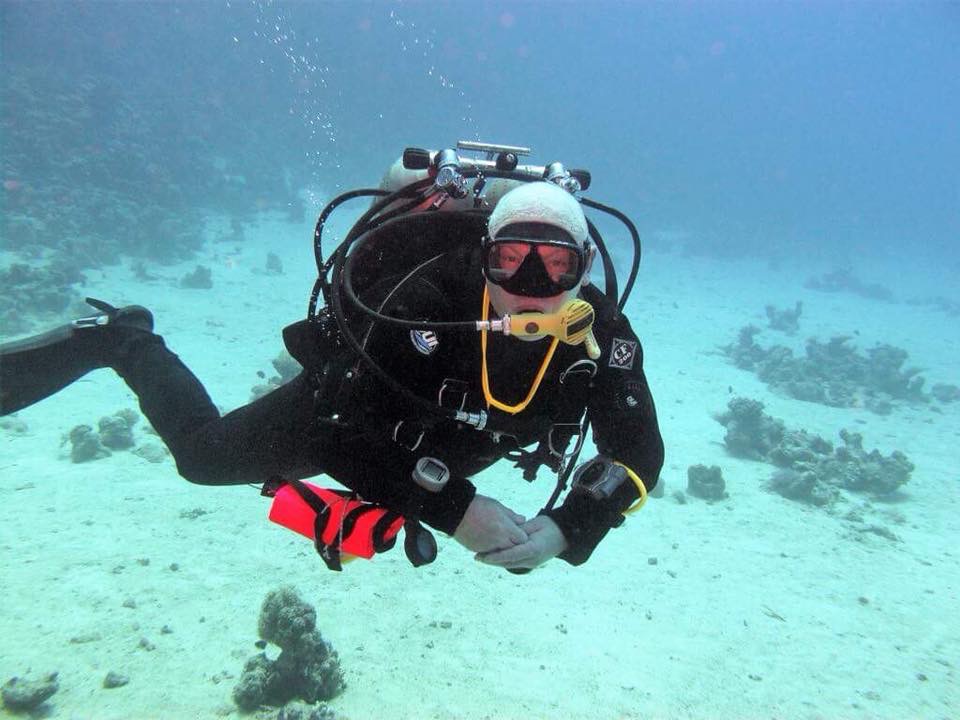
Anyhow, why not take a dive with me on the Tile Wreck, or, as I will return to calling her….The Chrisoula K
As always I am lucky enough to stand on the shoulders of giants, my thanks for that privilege goes to Ned Middleton for his superb Red Sea Wreck Diving books and to Peter Colling’s intriguing pieces on the Tile Wreck and for introducing the mysterious “Marcus” into the Abu Nuhas enigma and to Rico Oldfield for his Stunning Wreck Depiction
I am, again, deeply indebted and grateful to Mark Milburn & Derek Aughton for the use of their Photos of our dives on the Chrisoula K on Abu Nuhas
